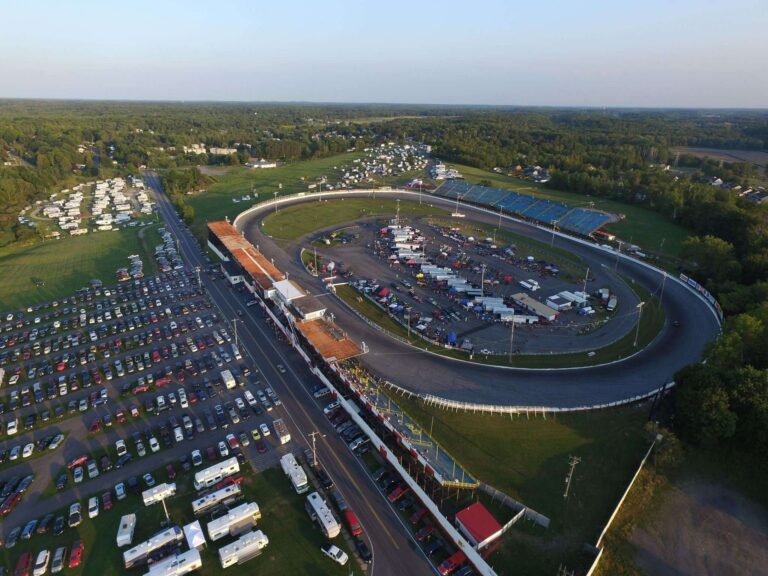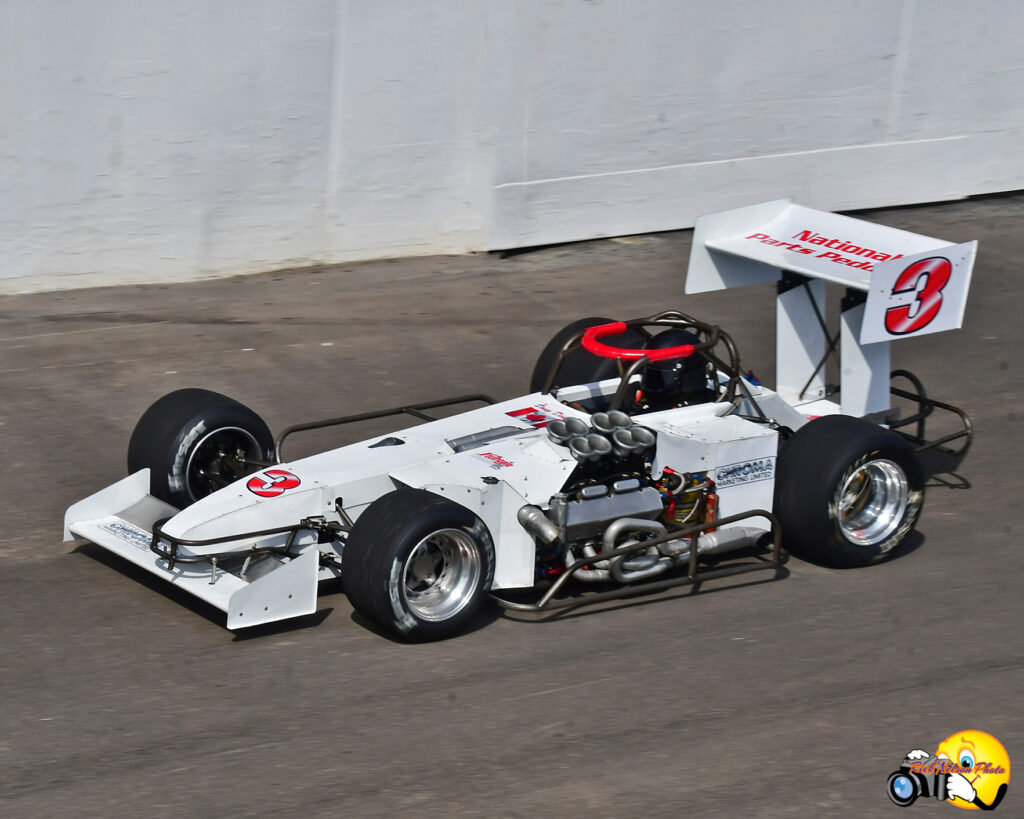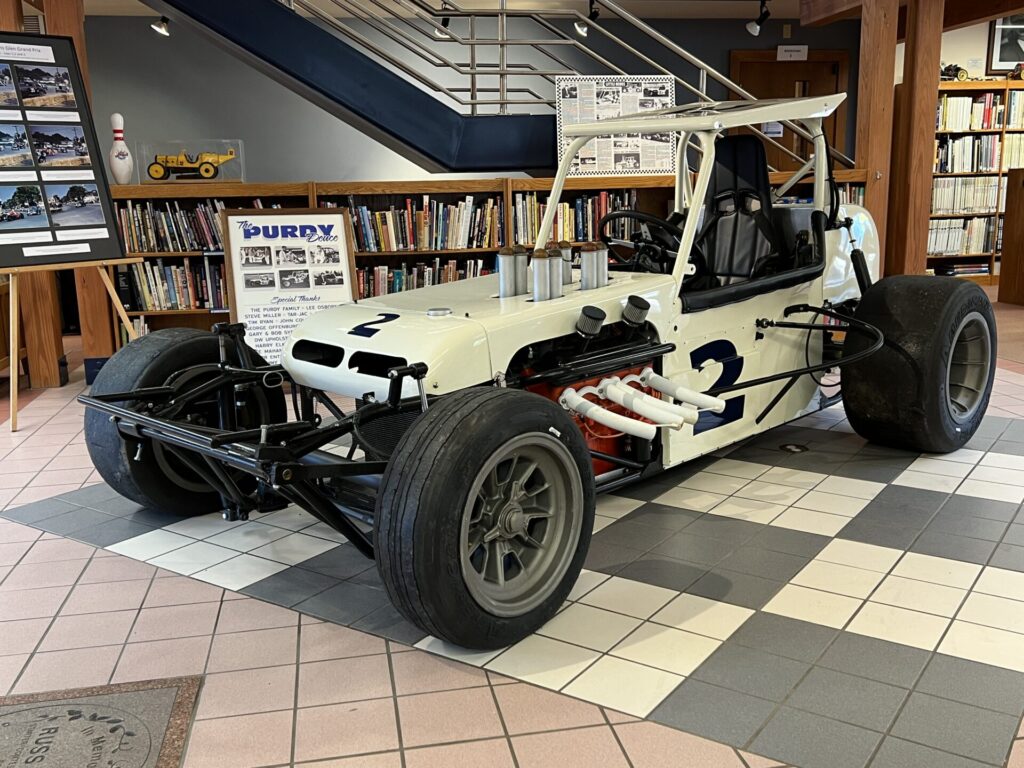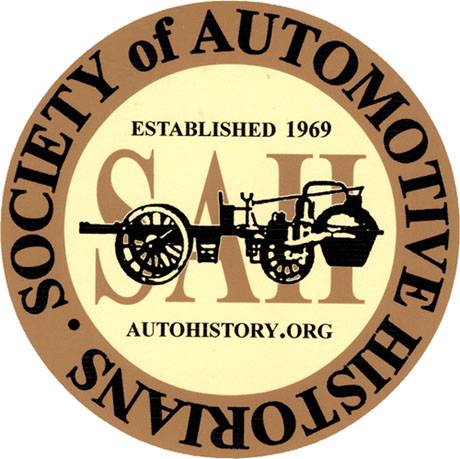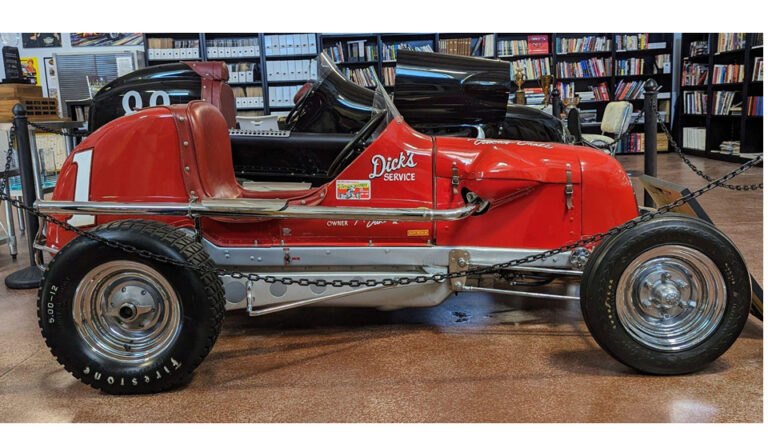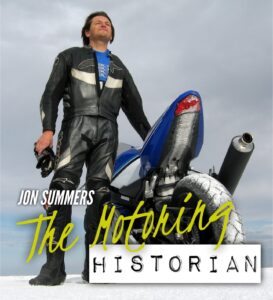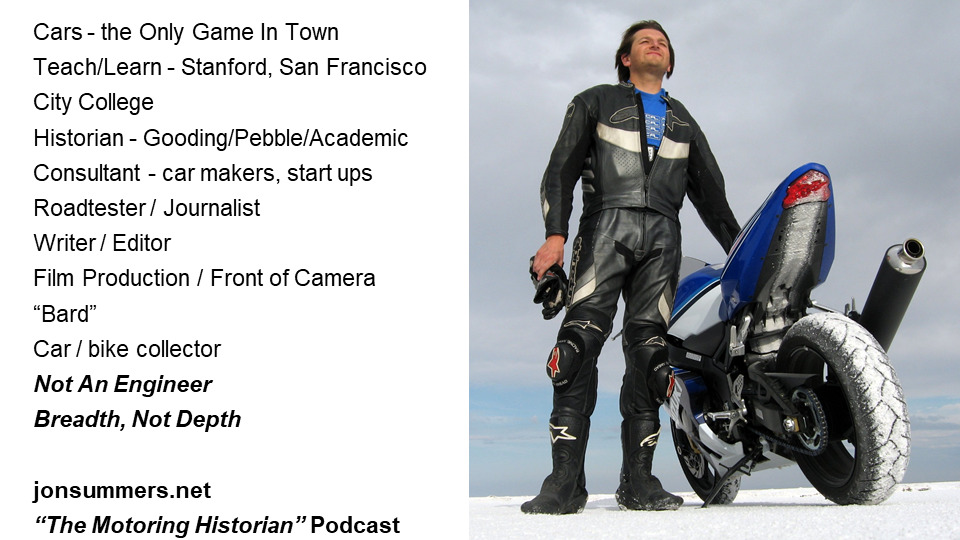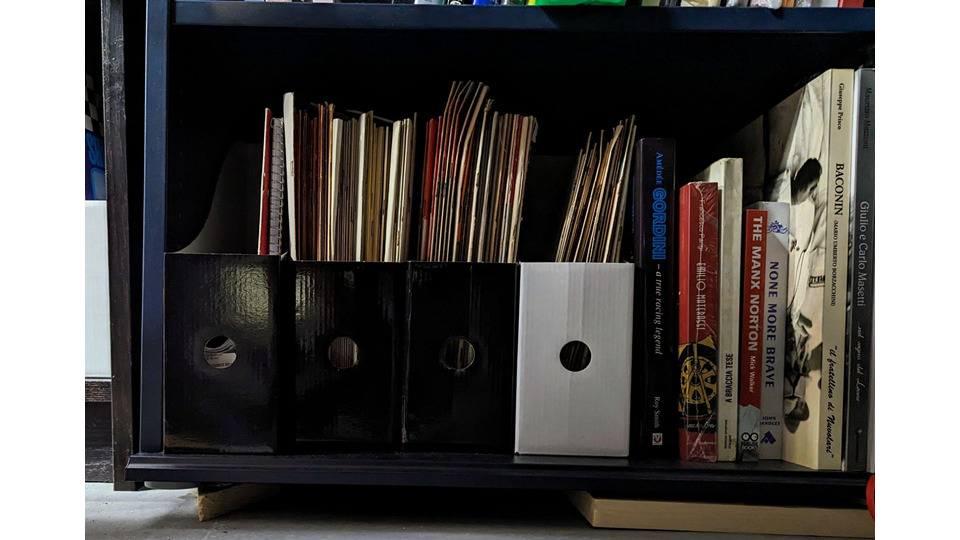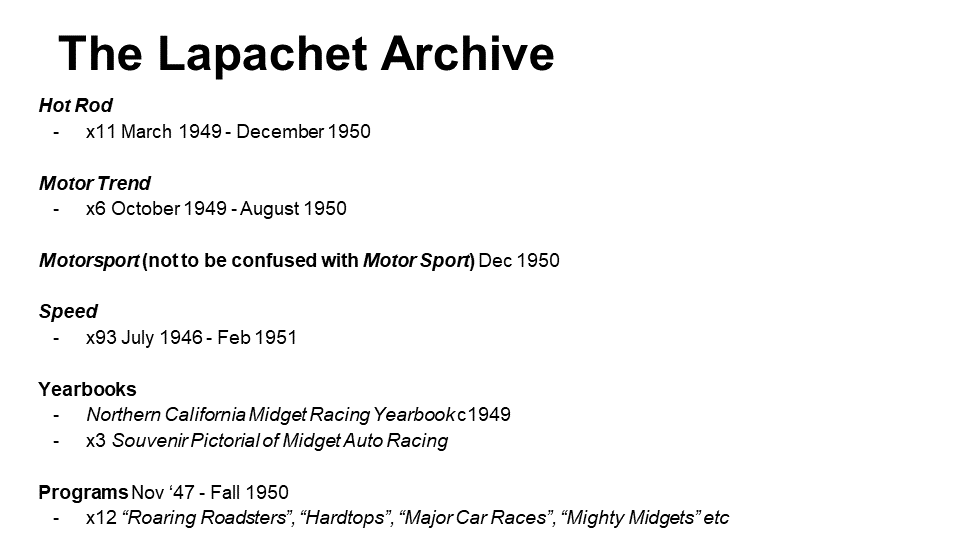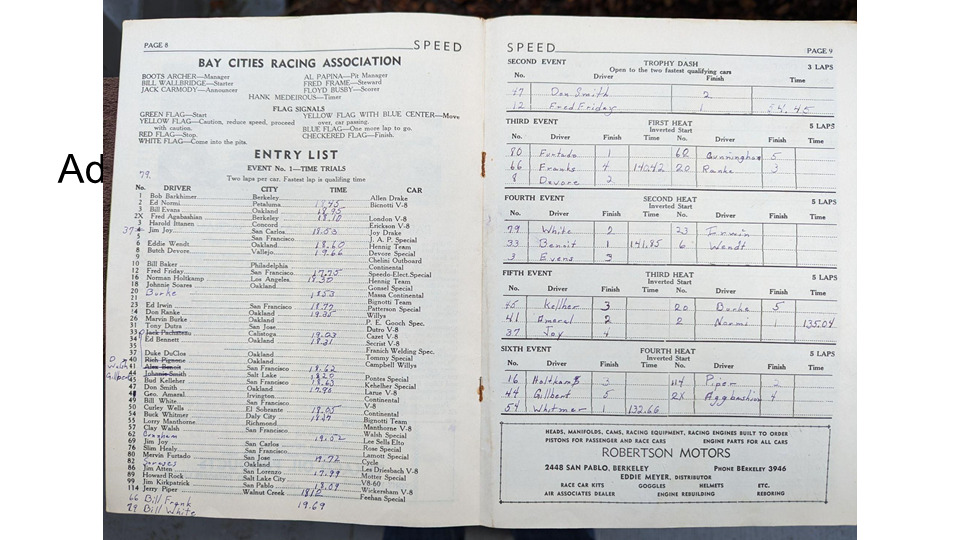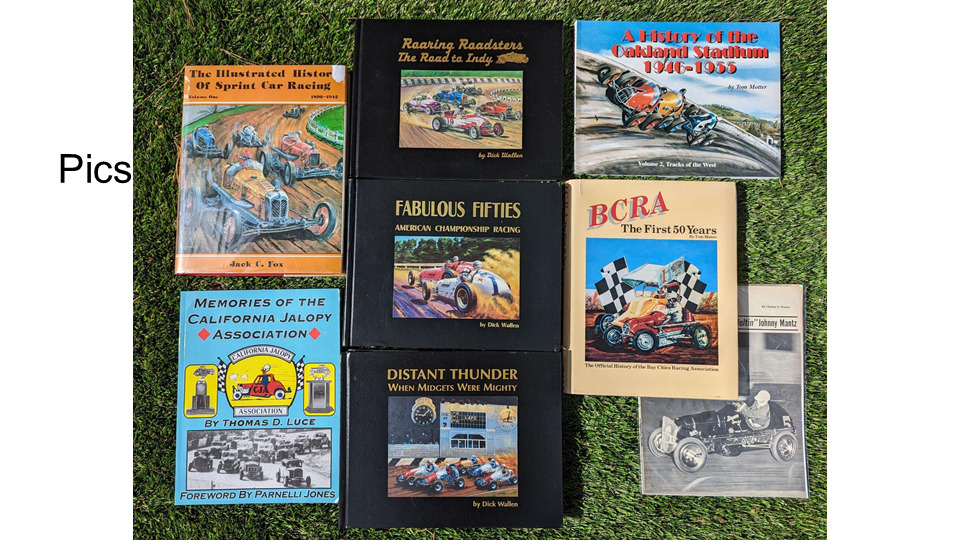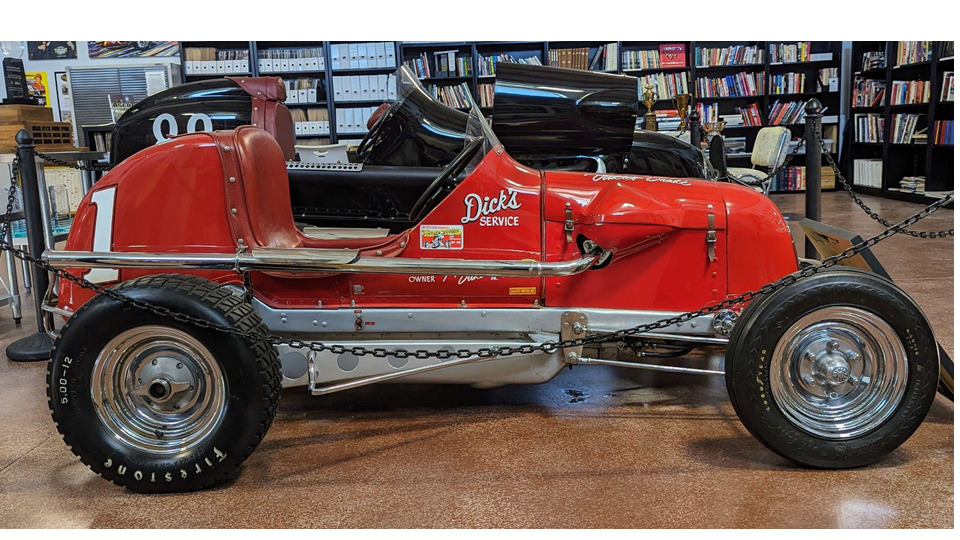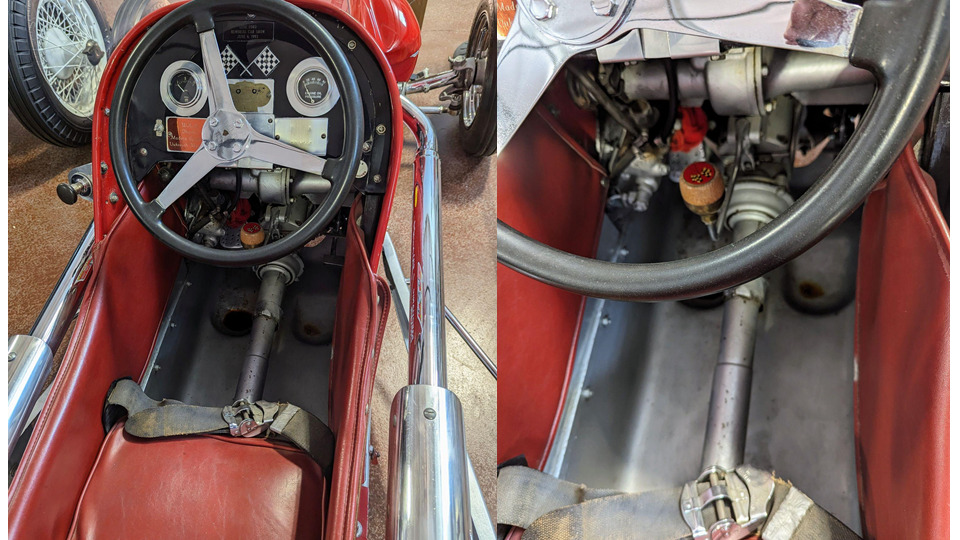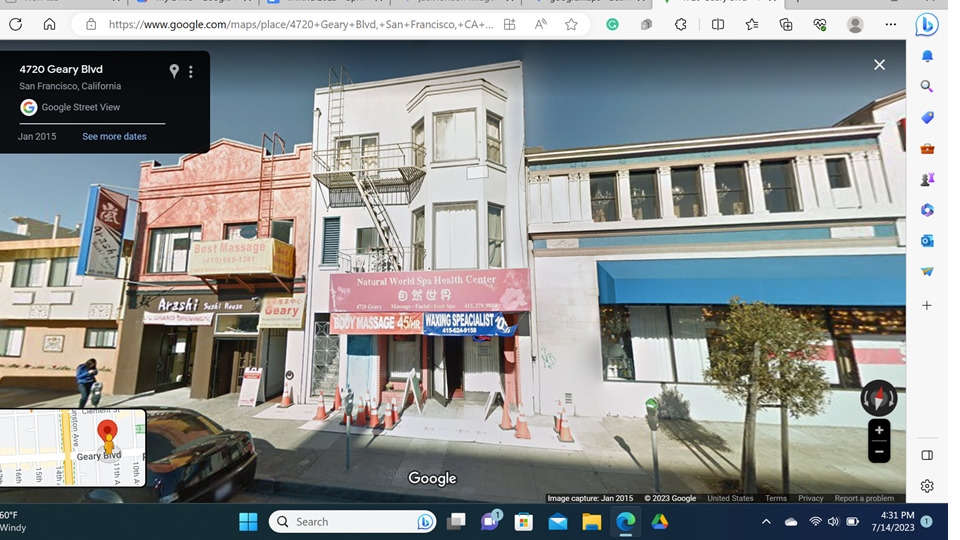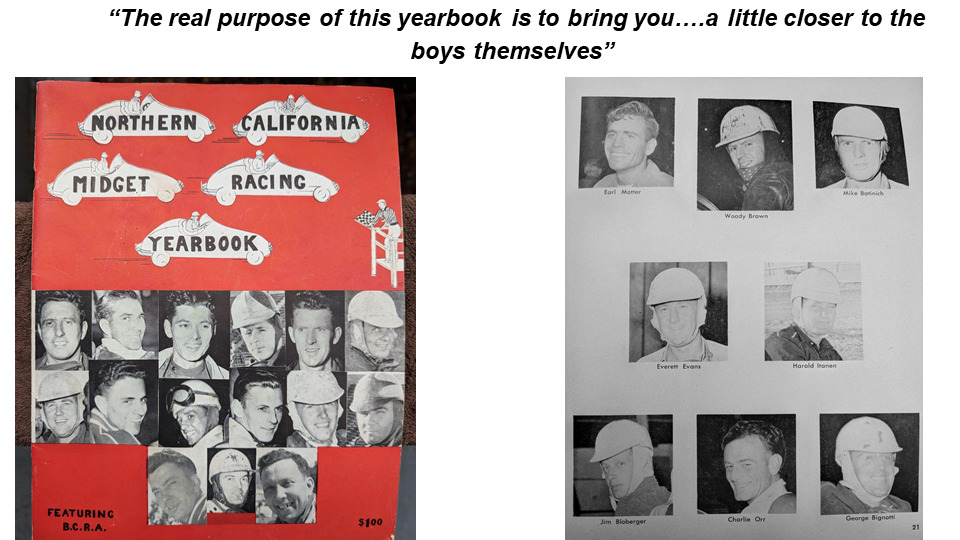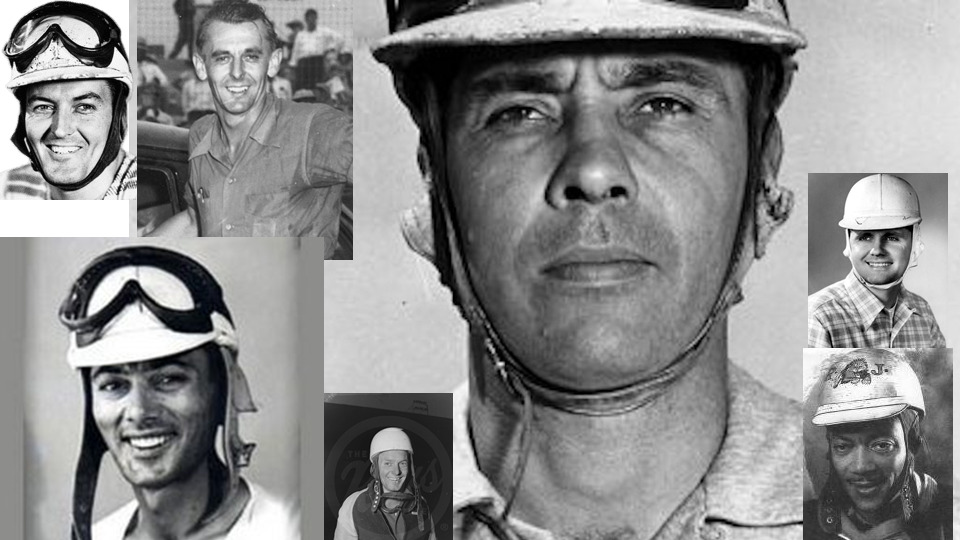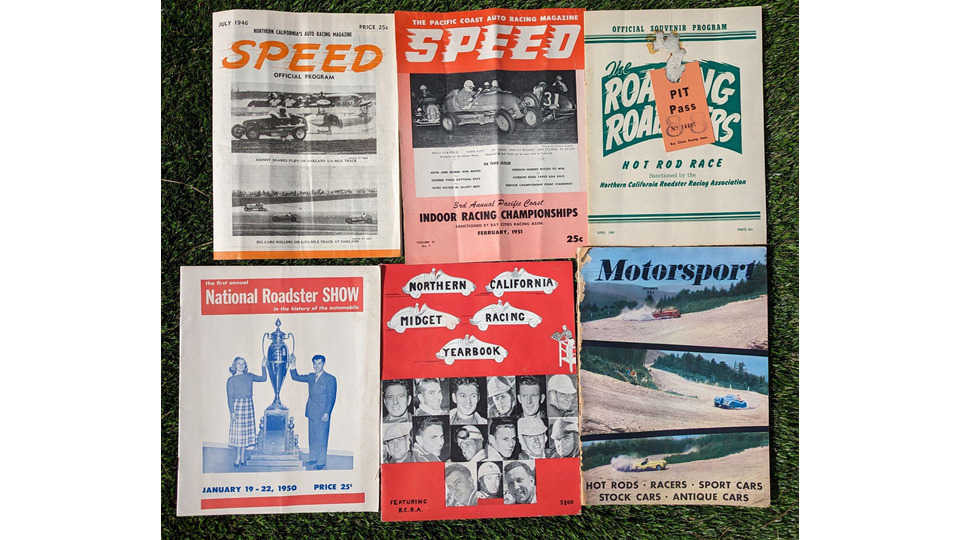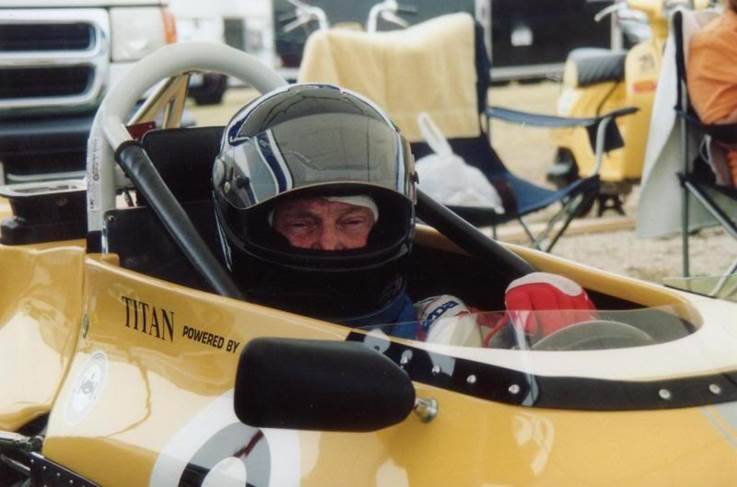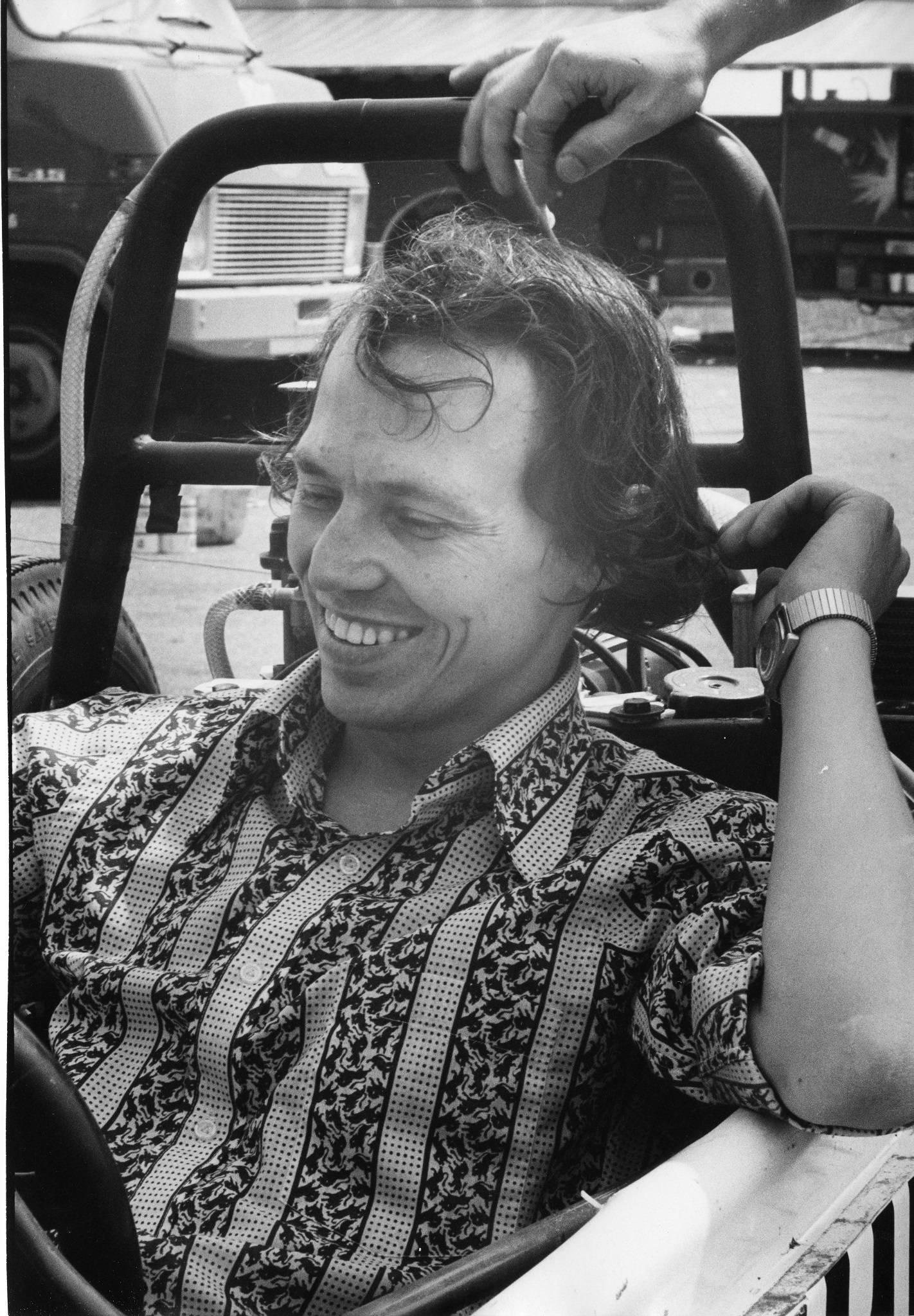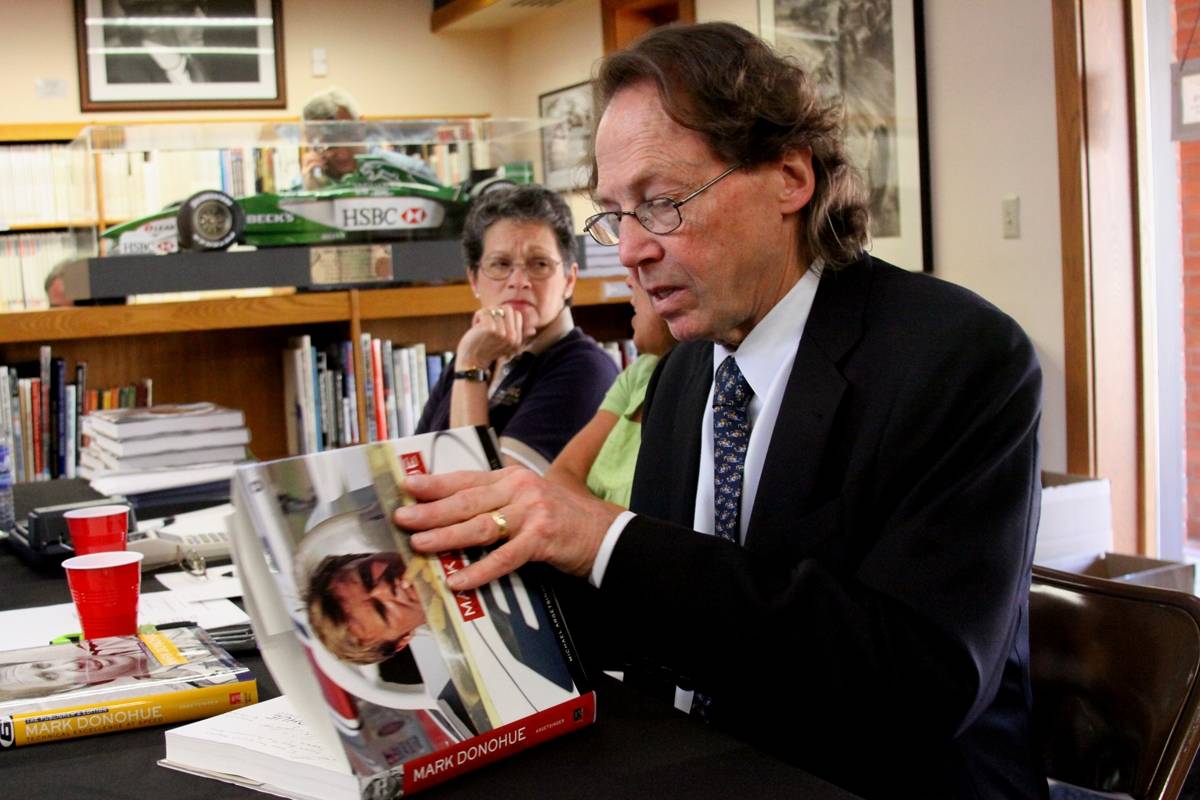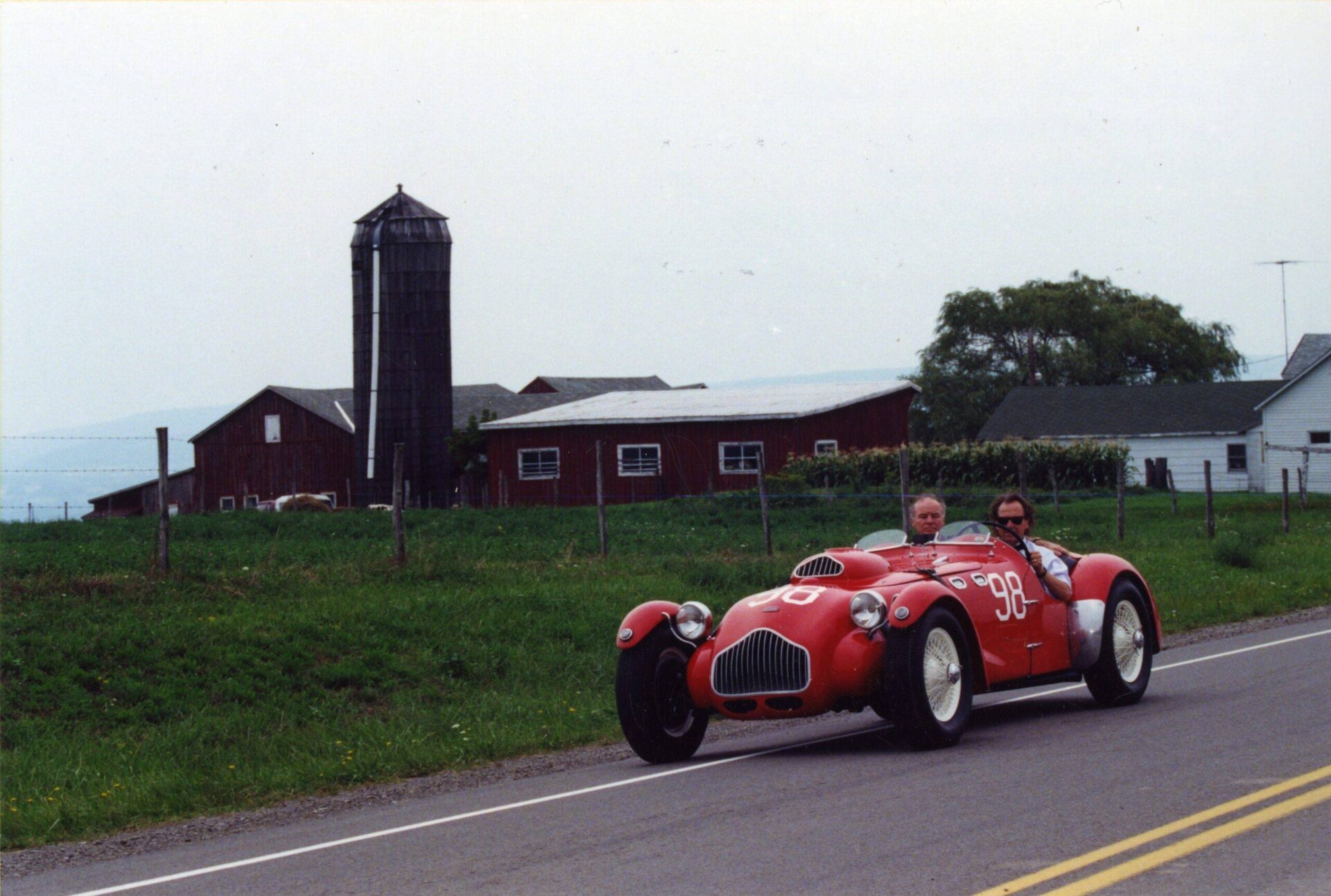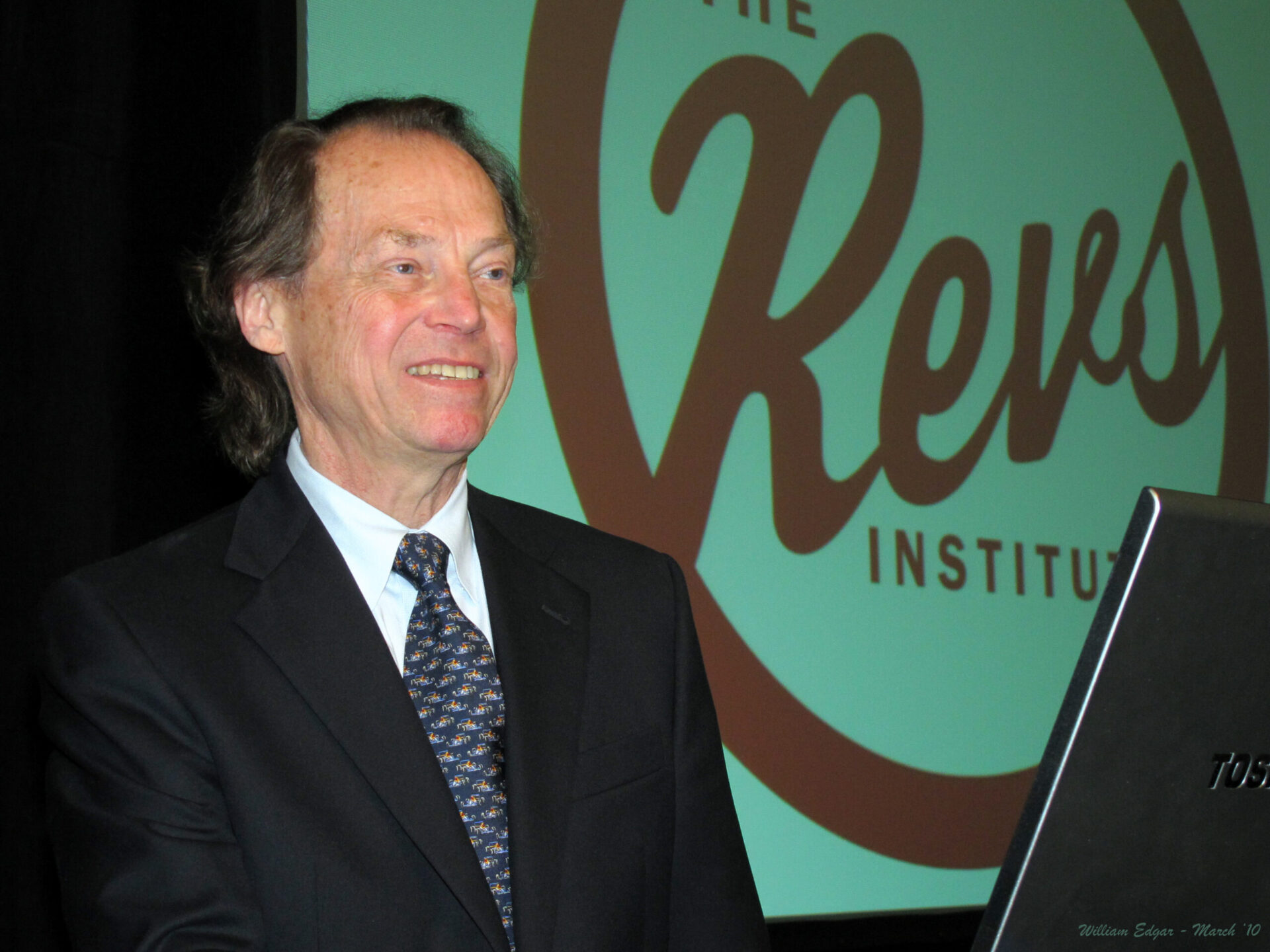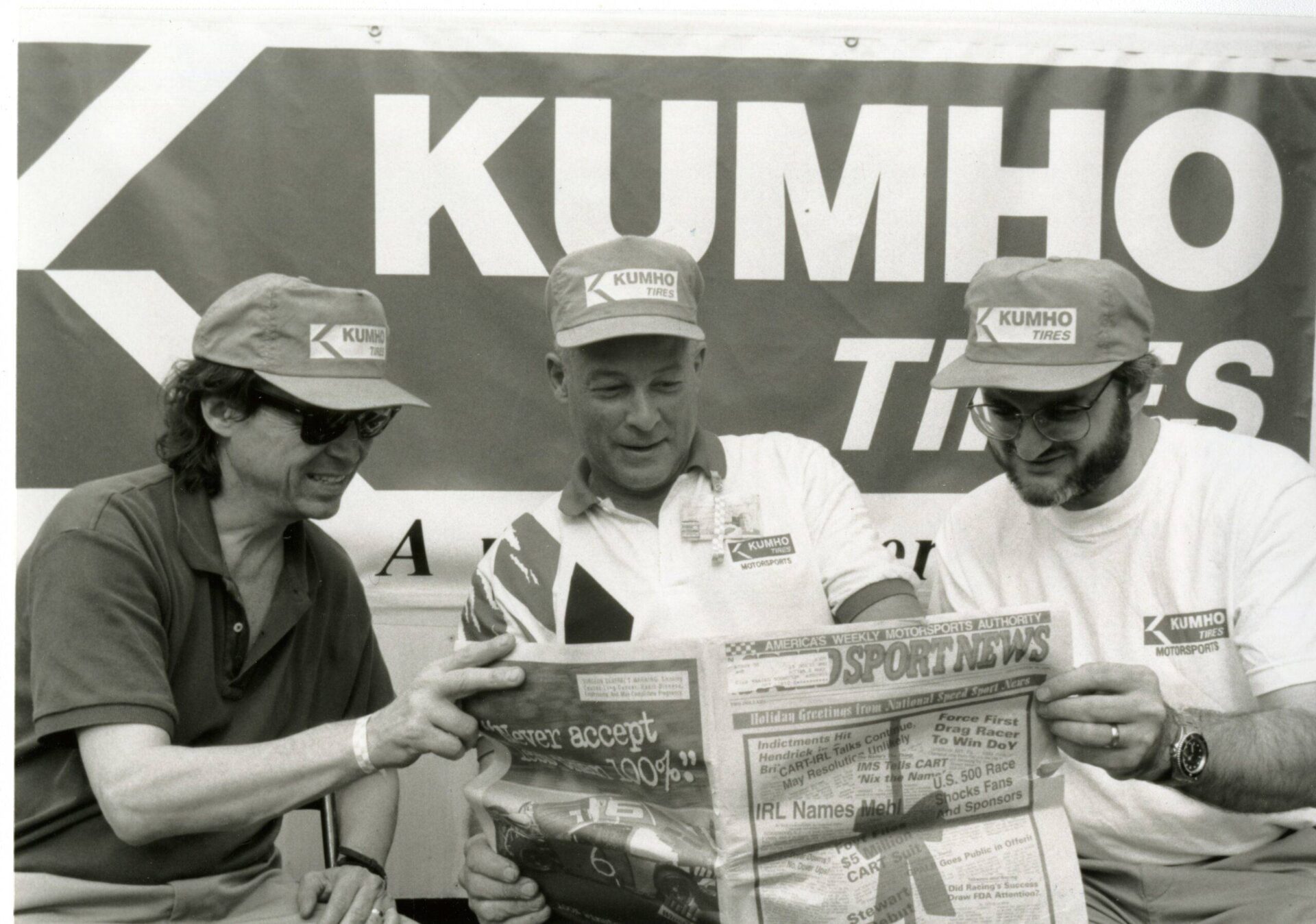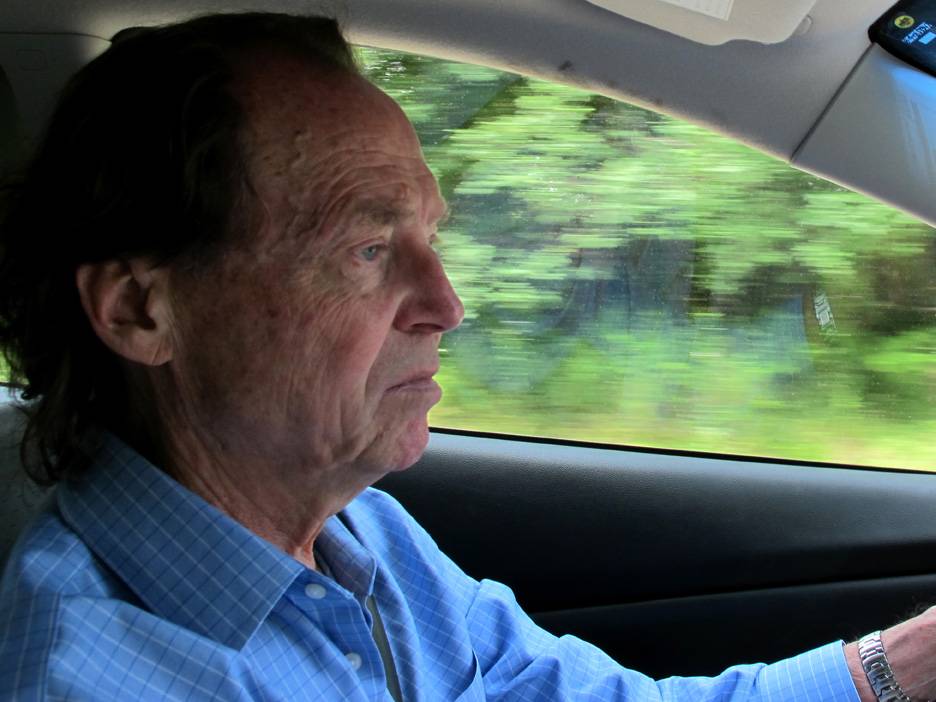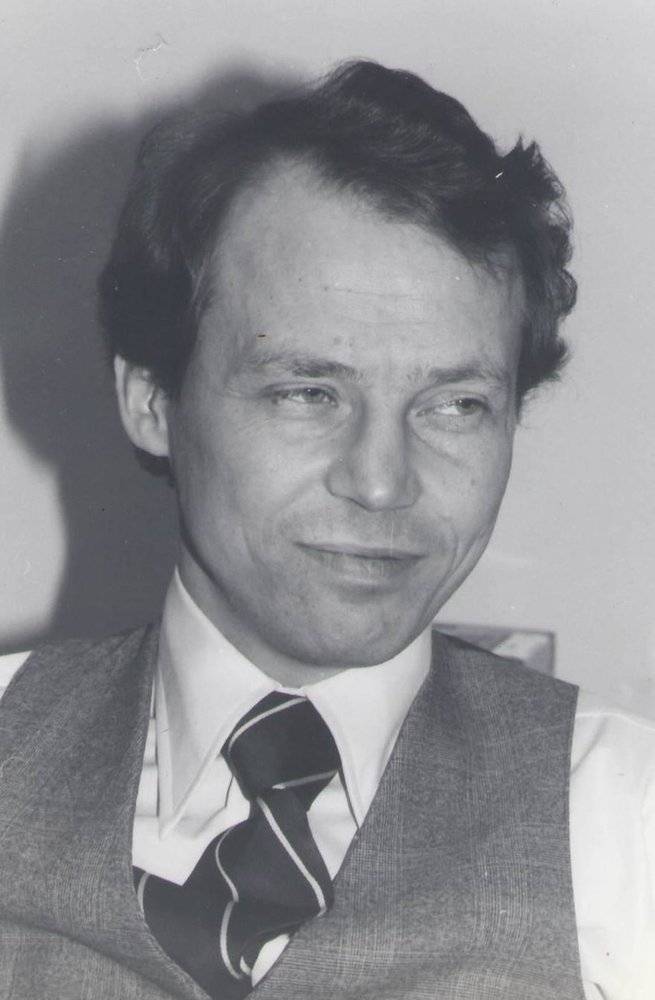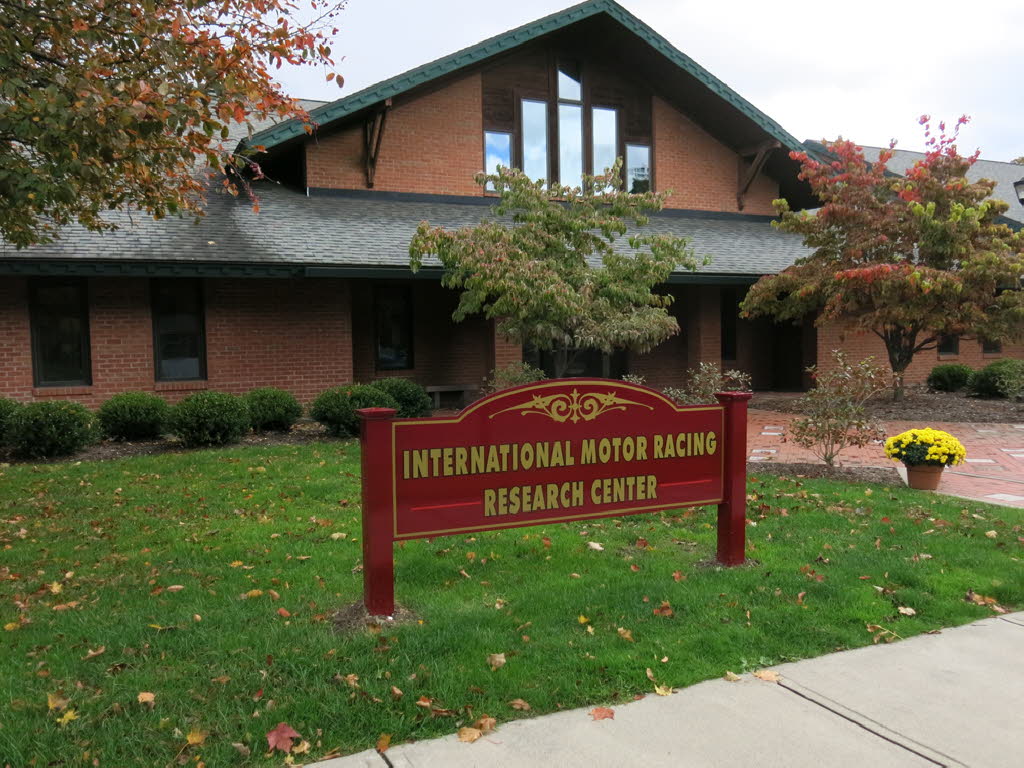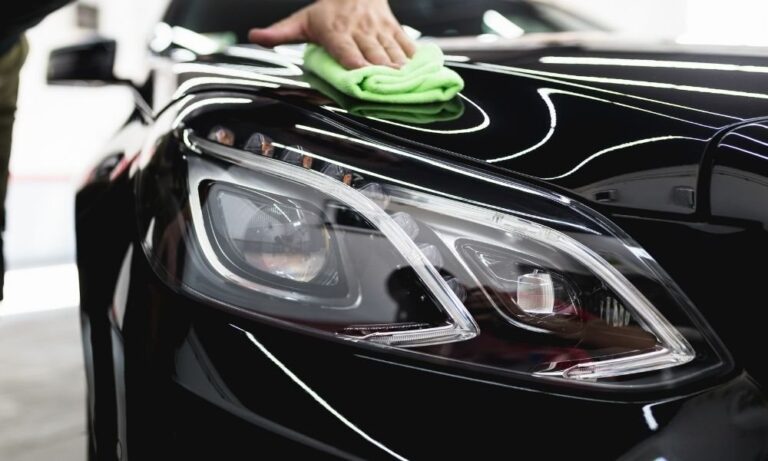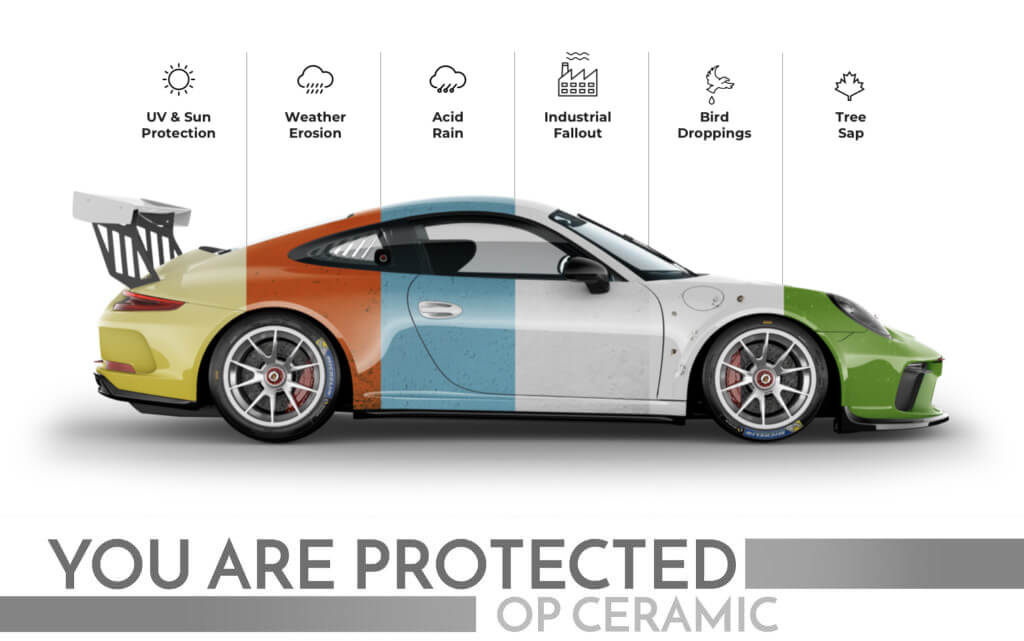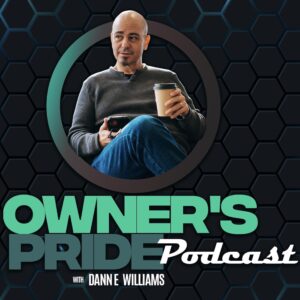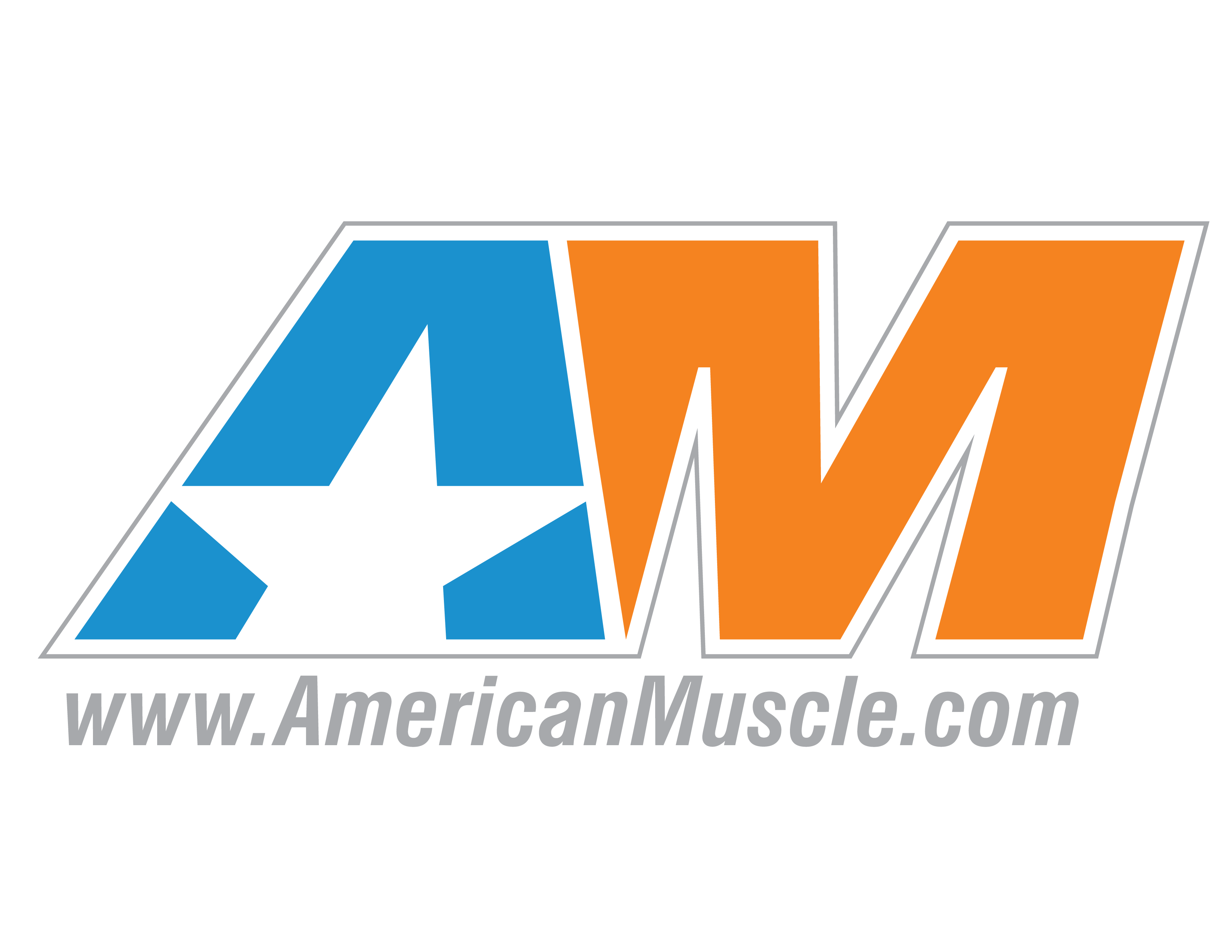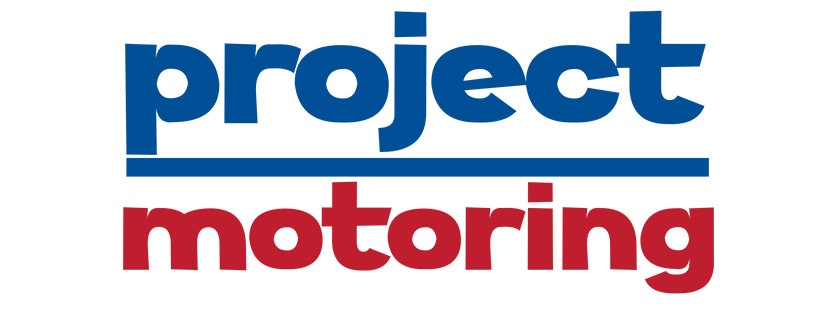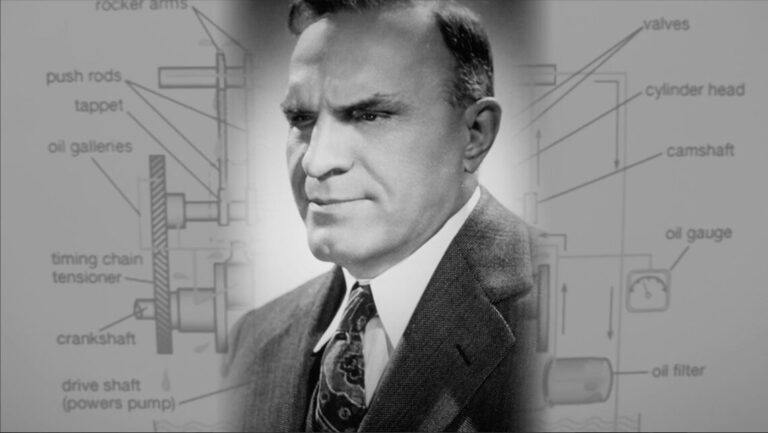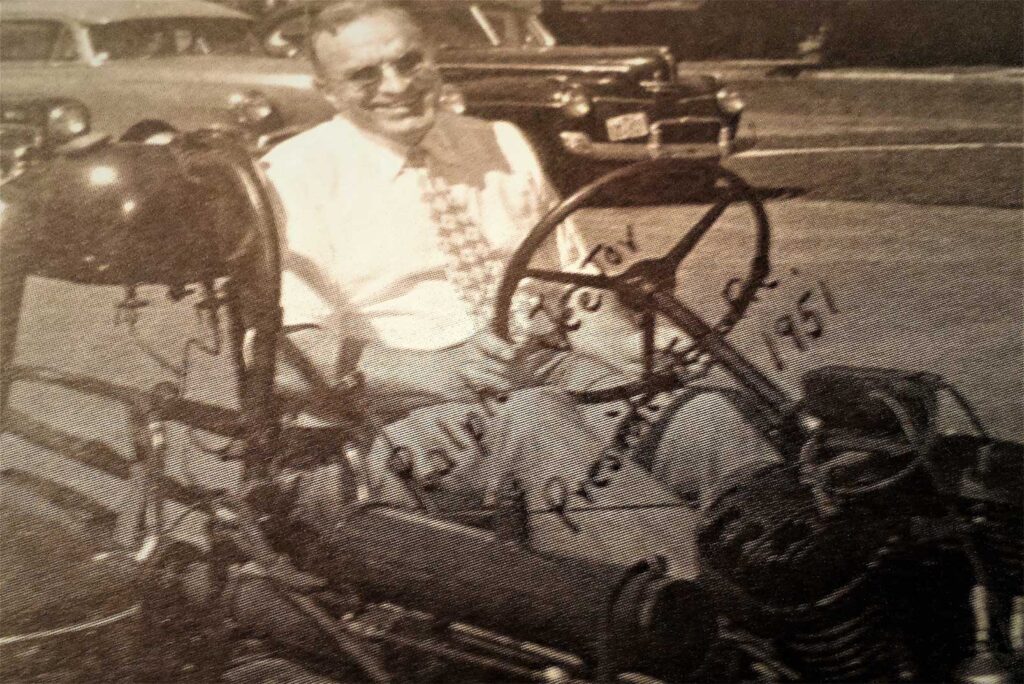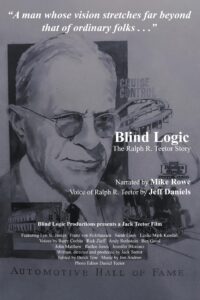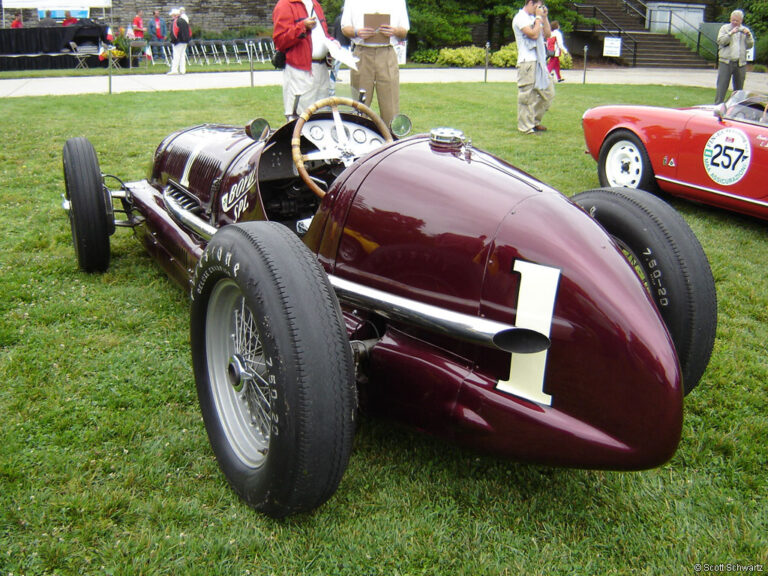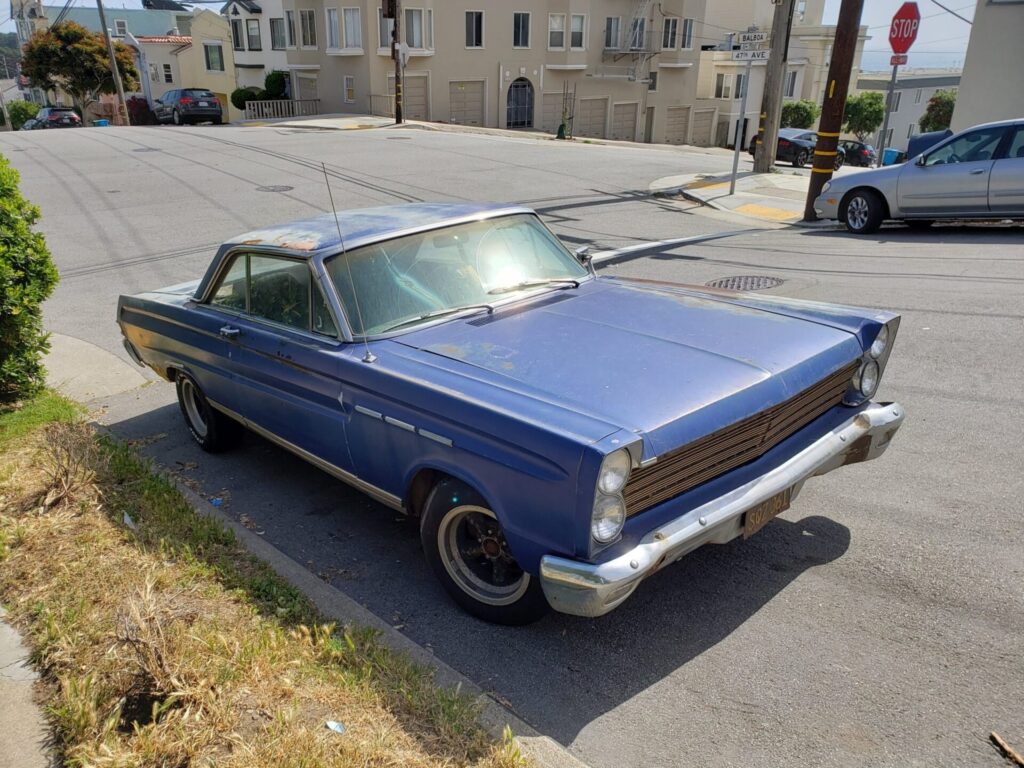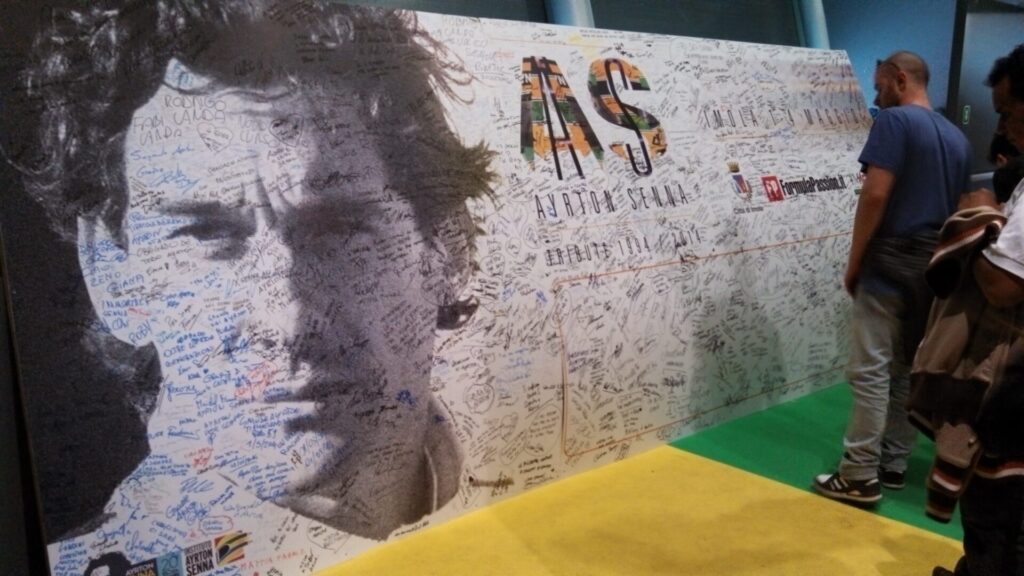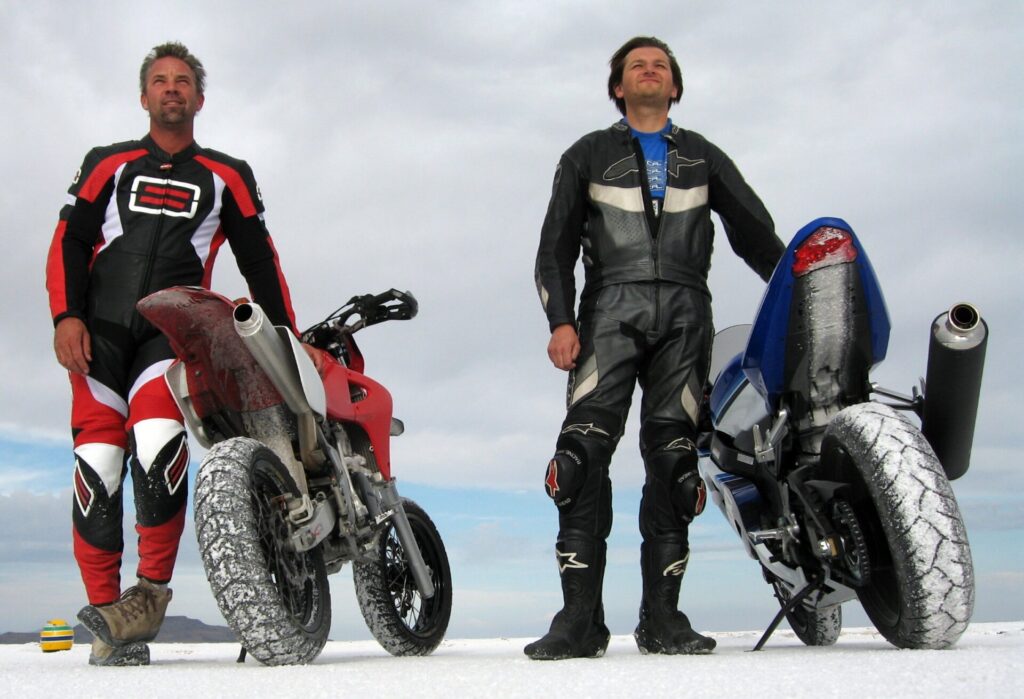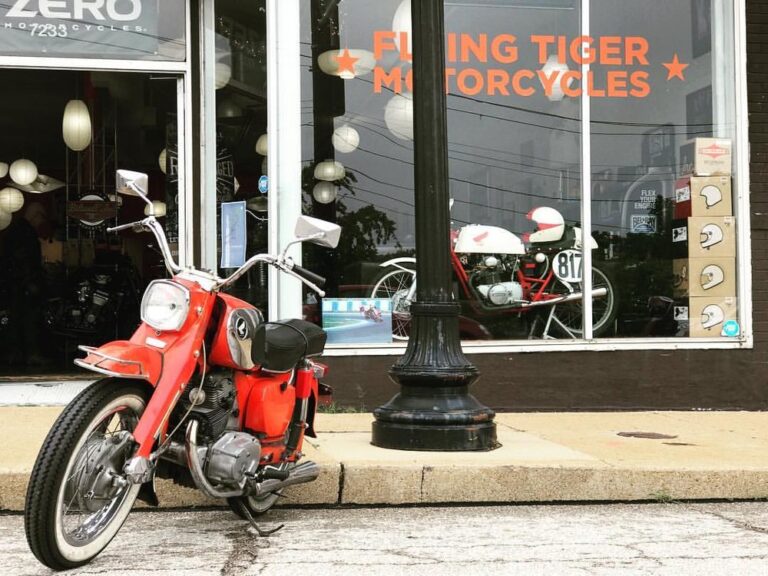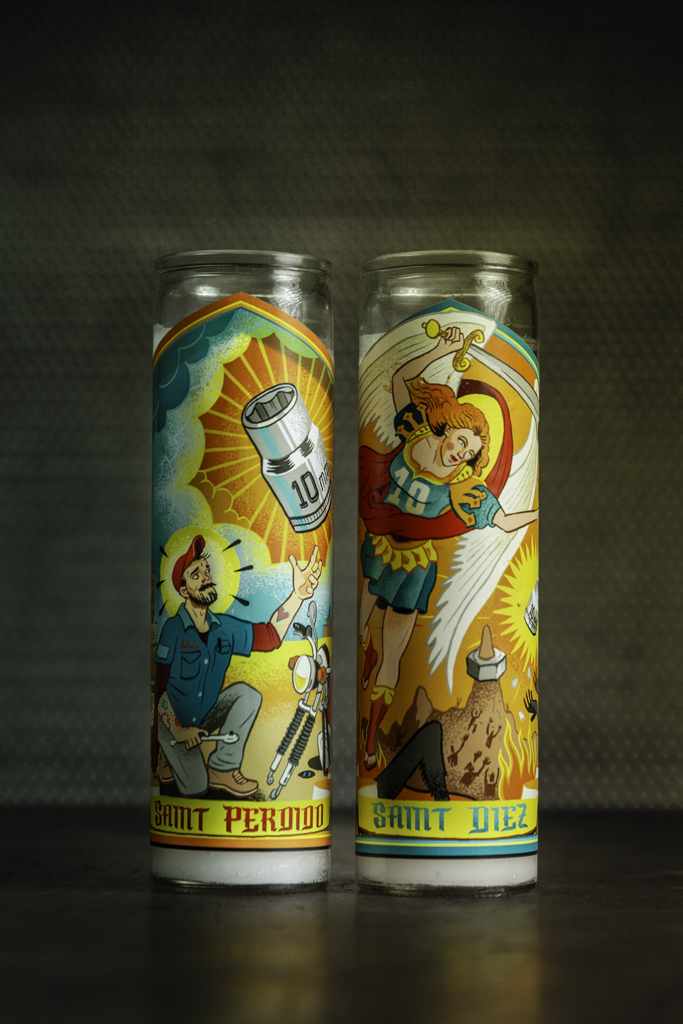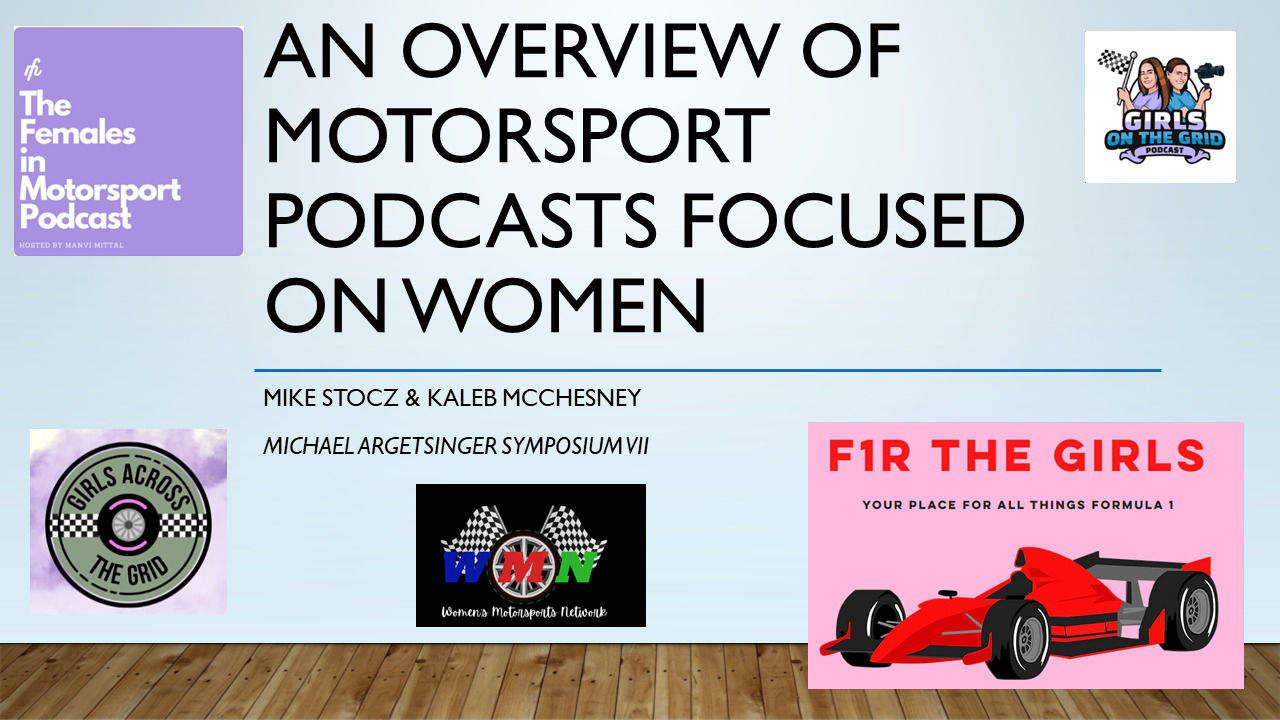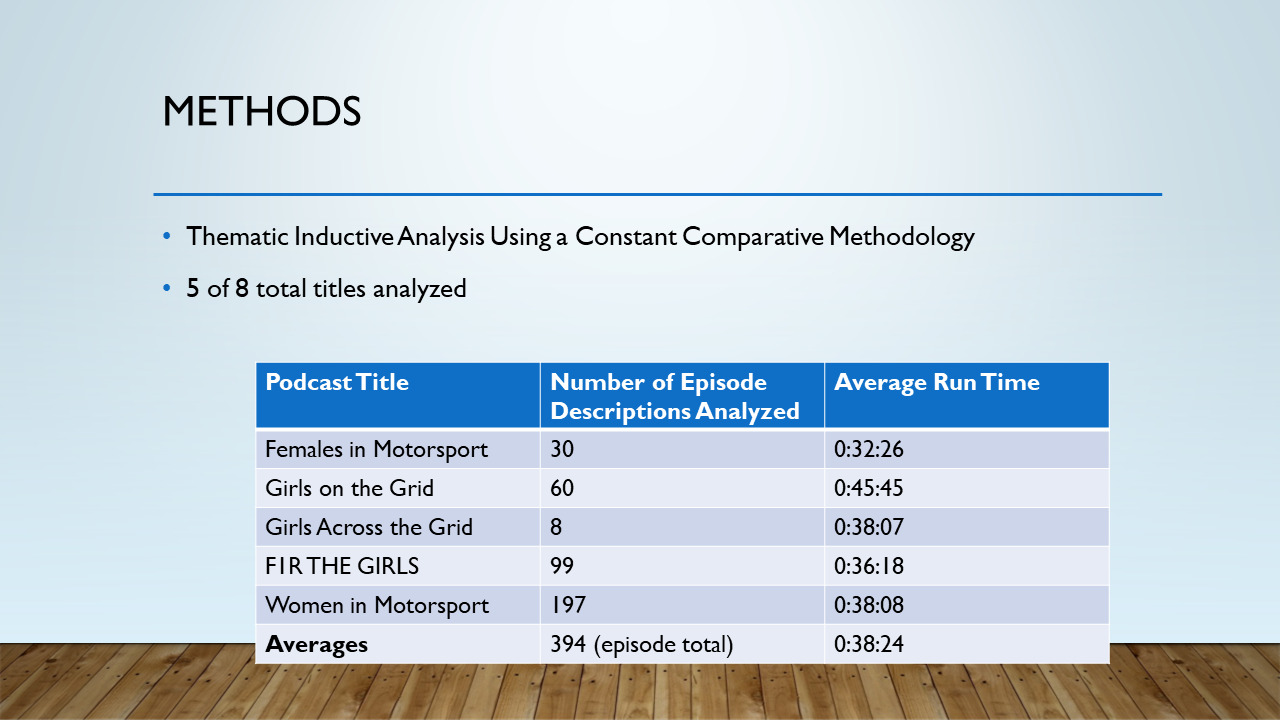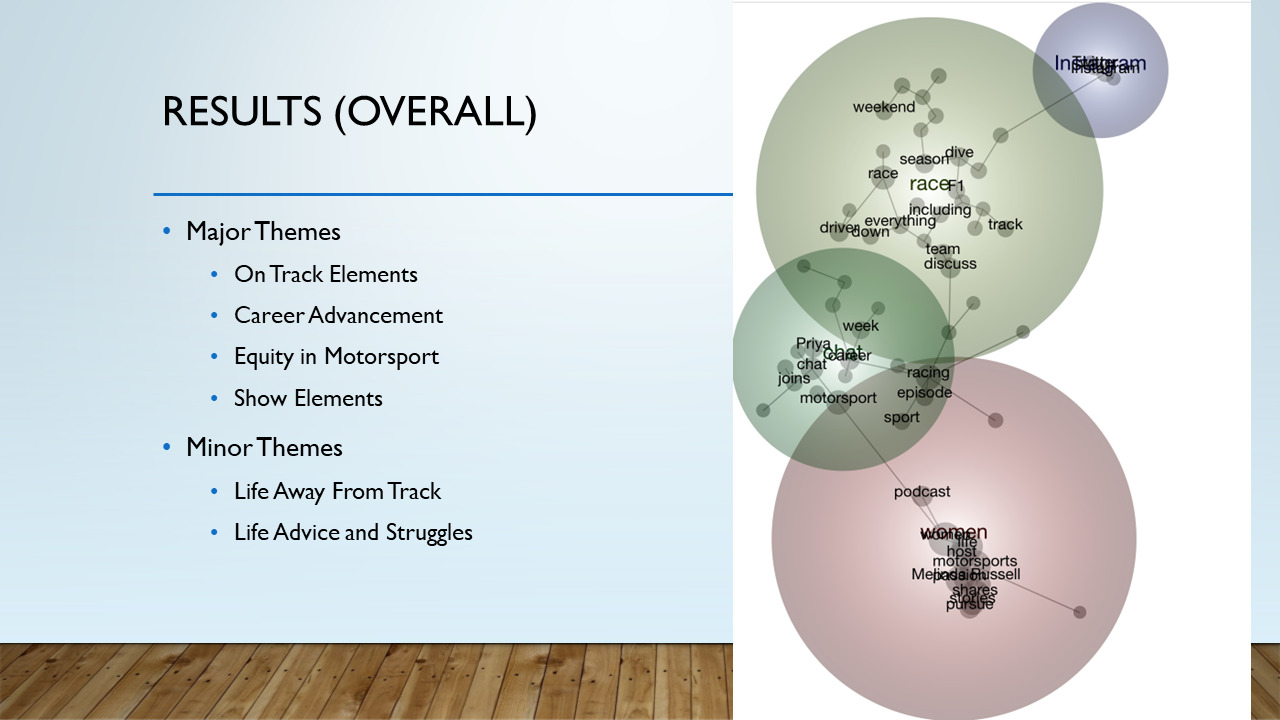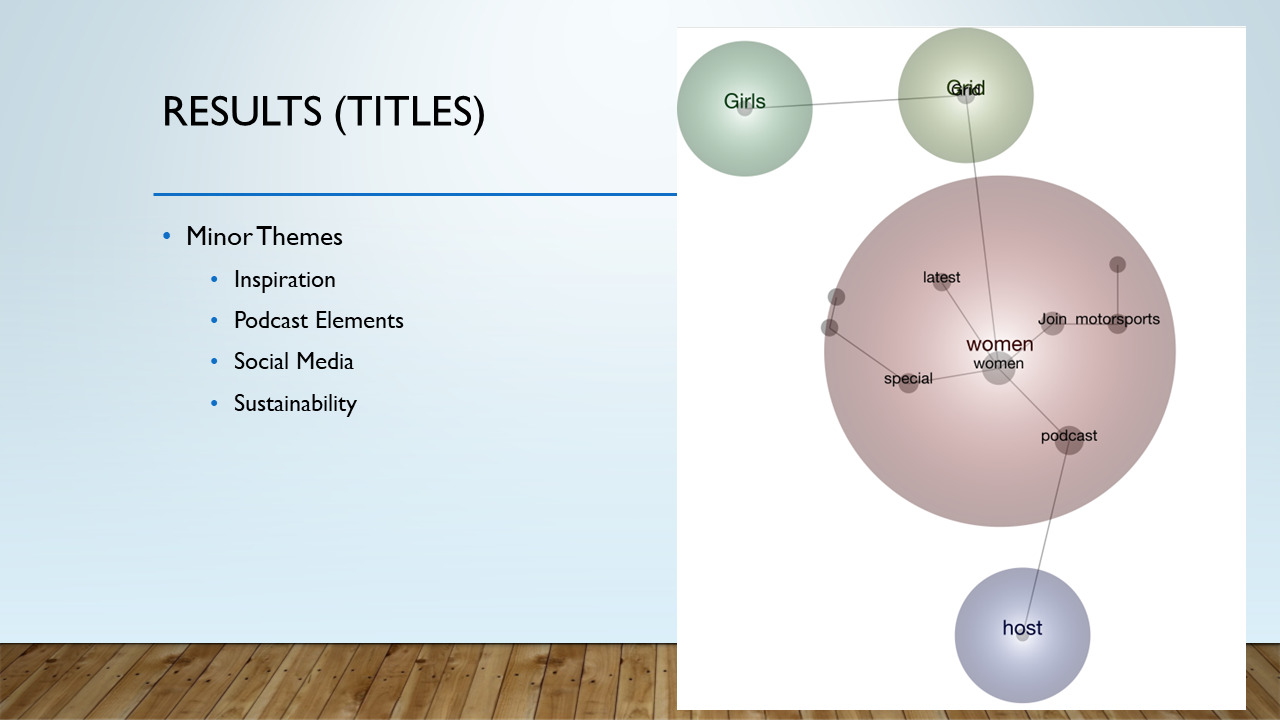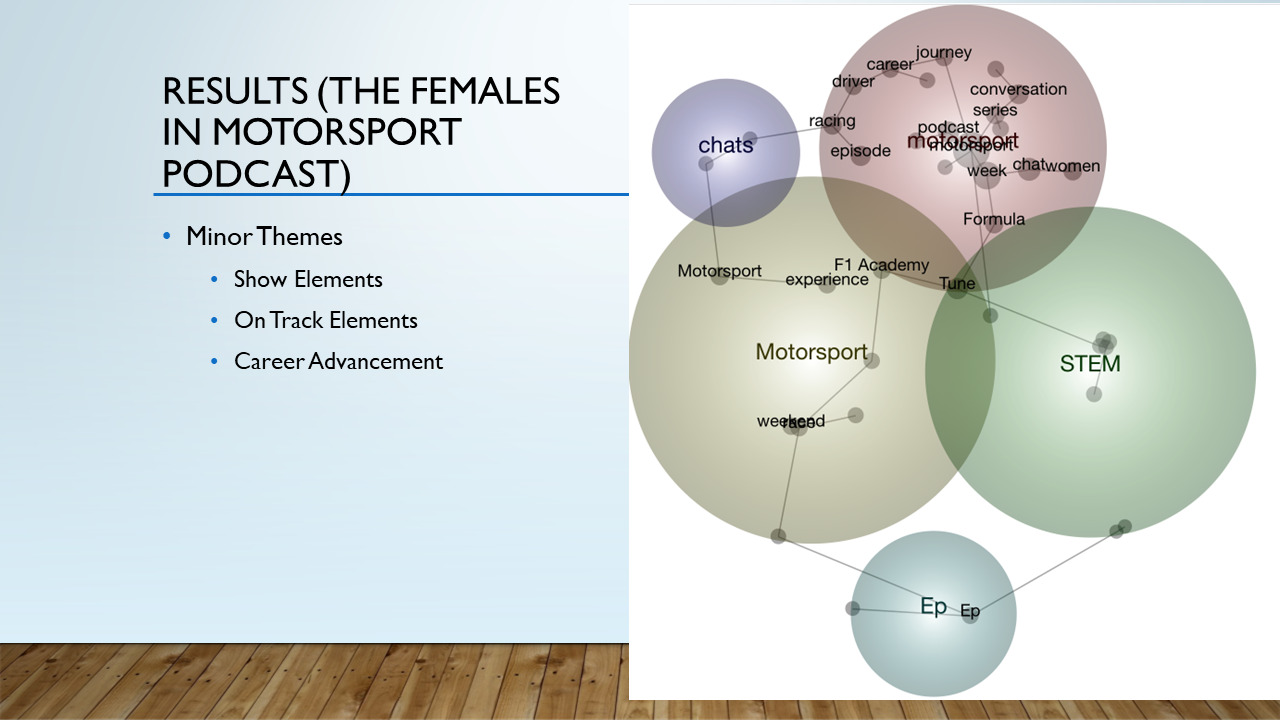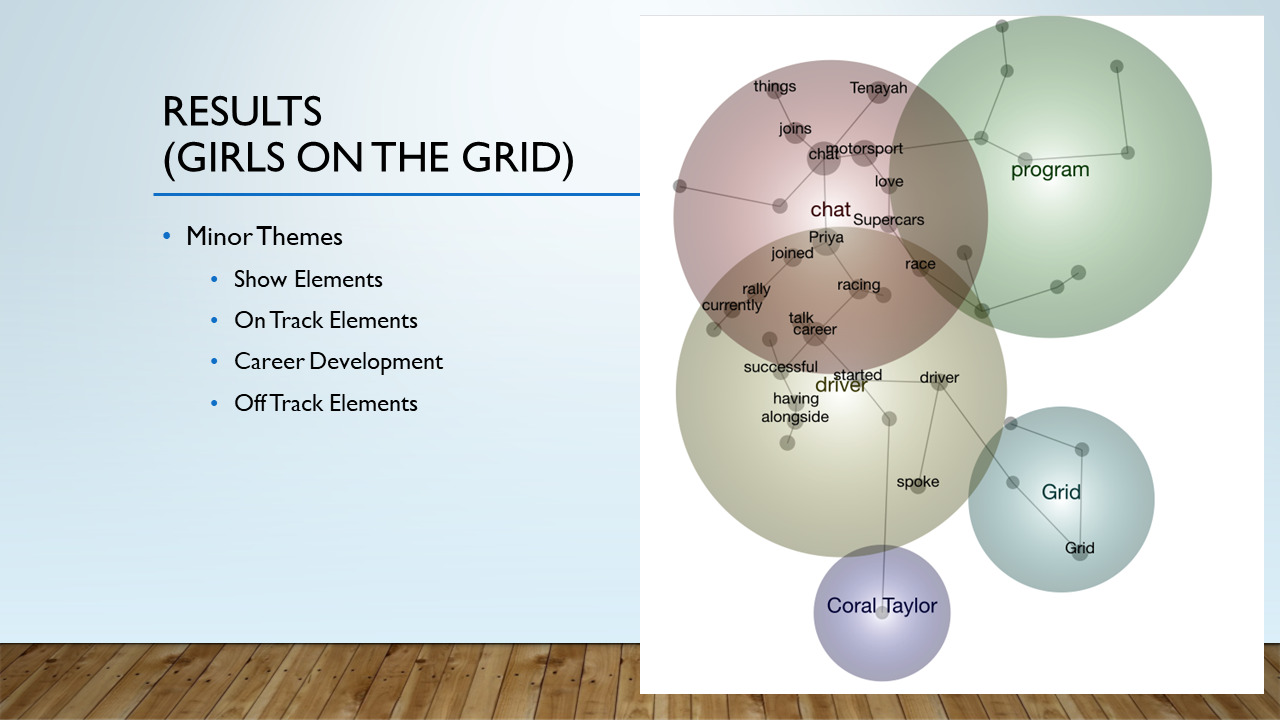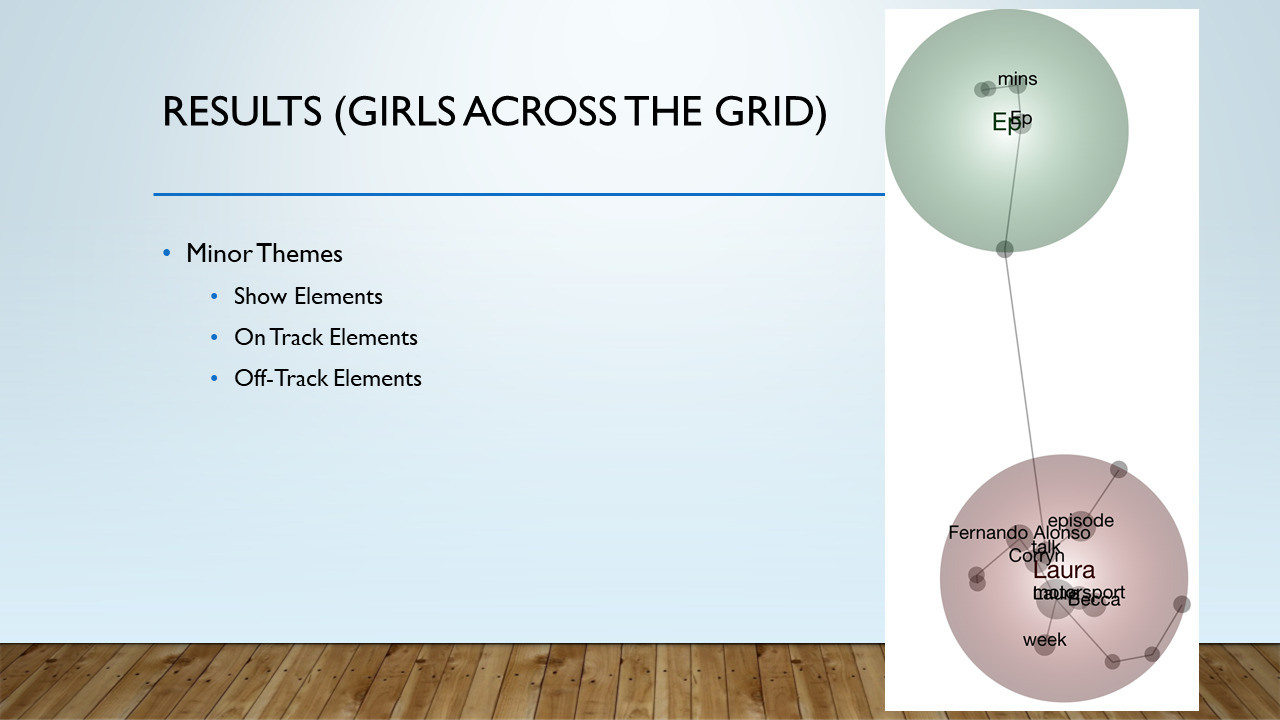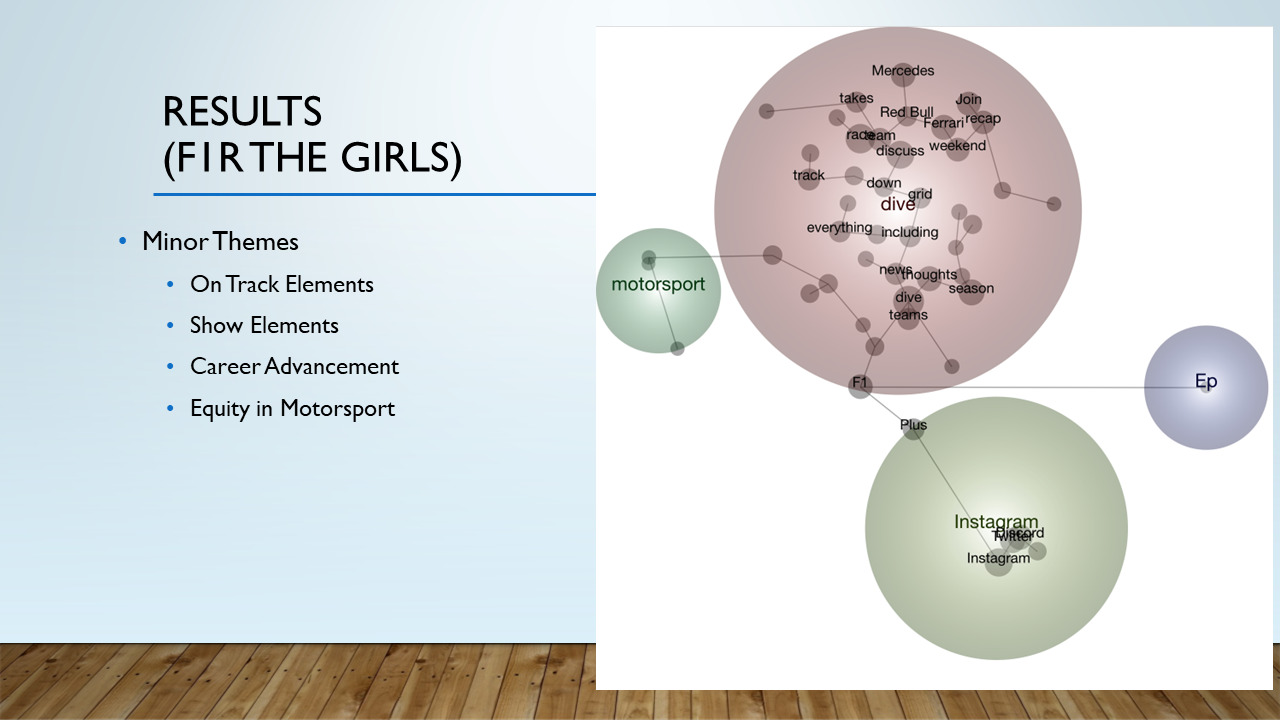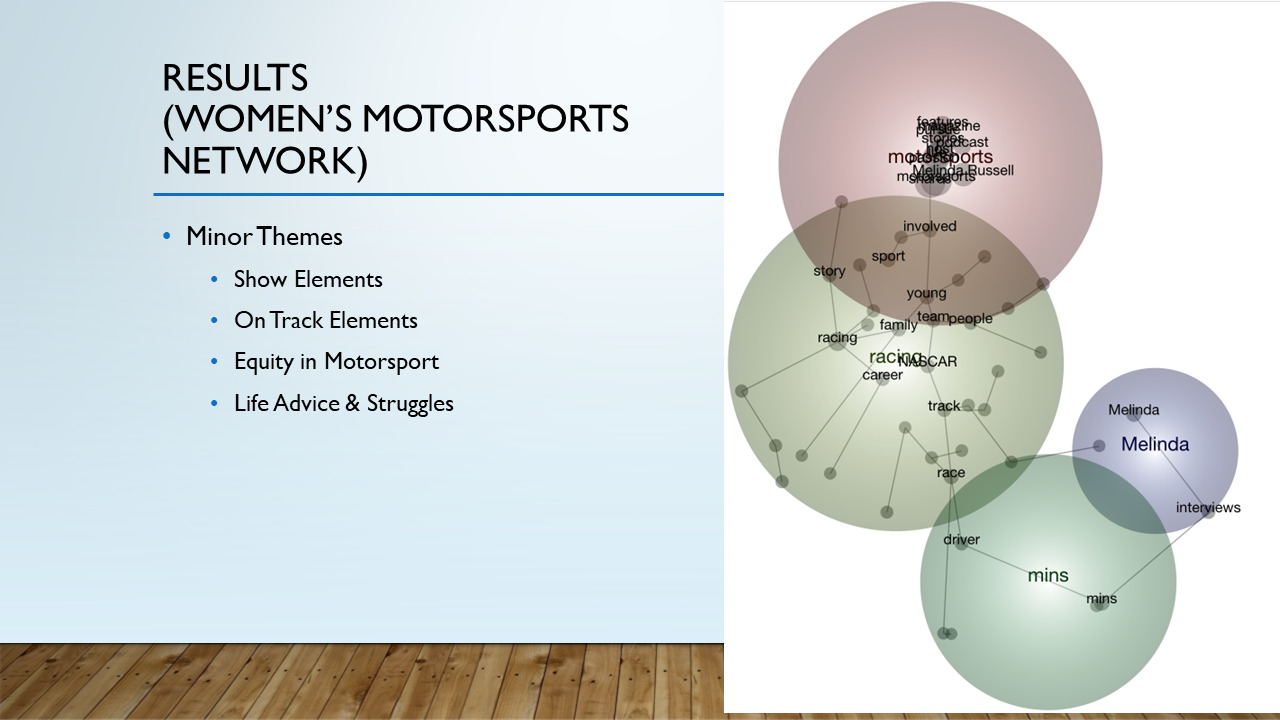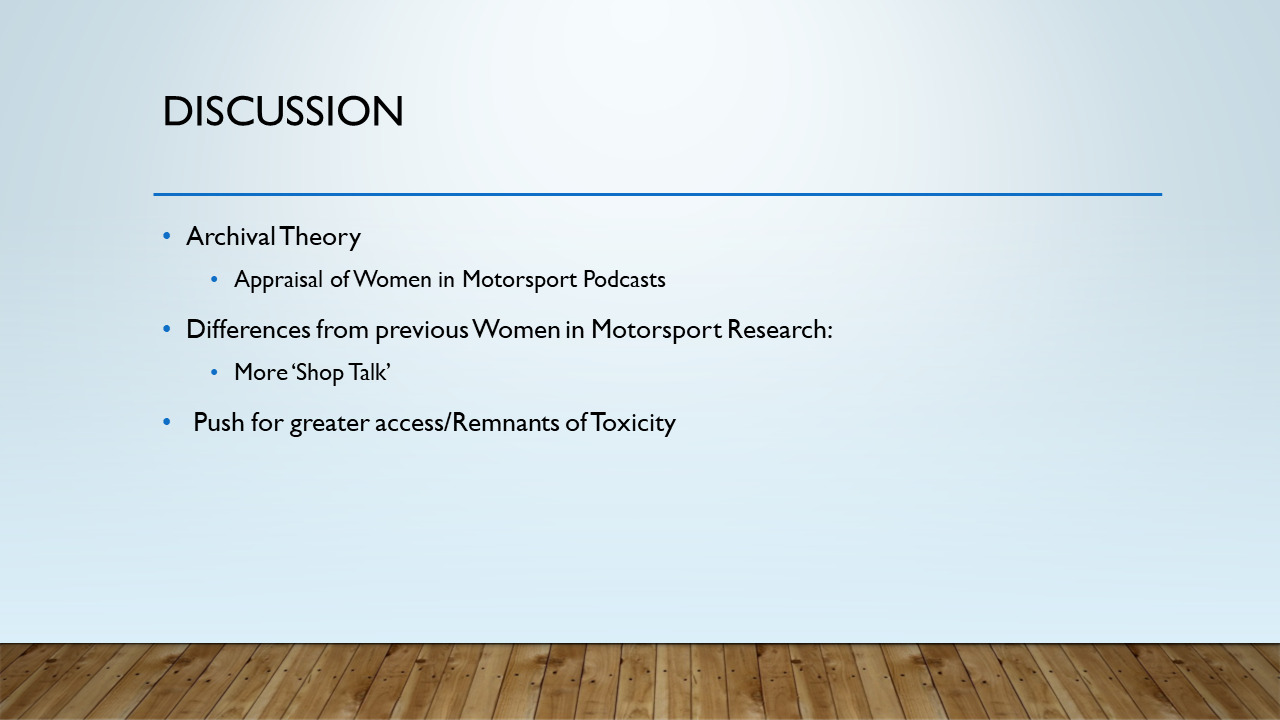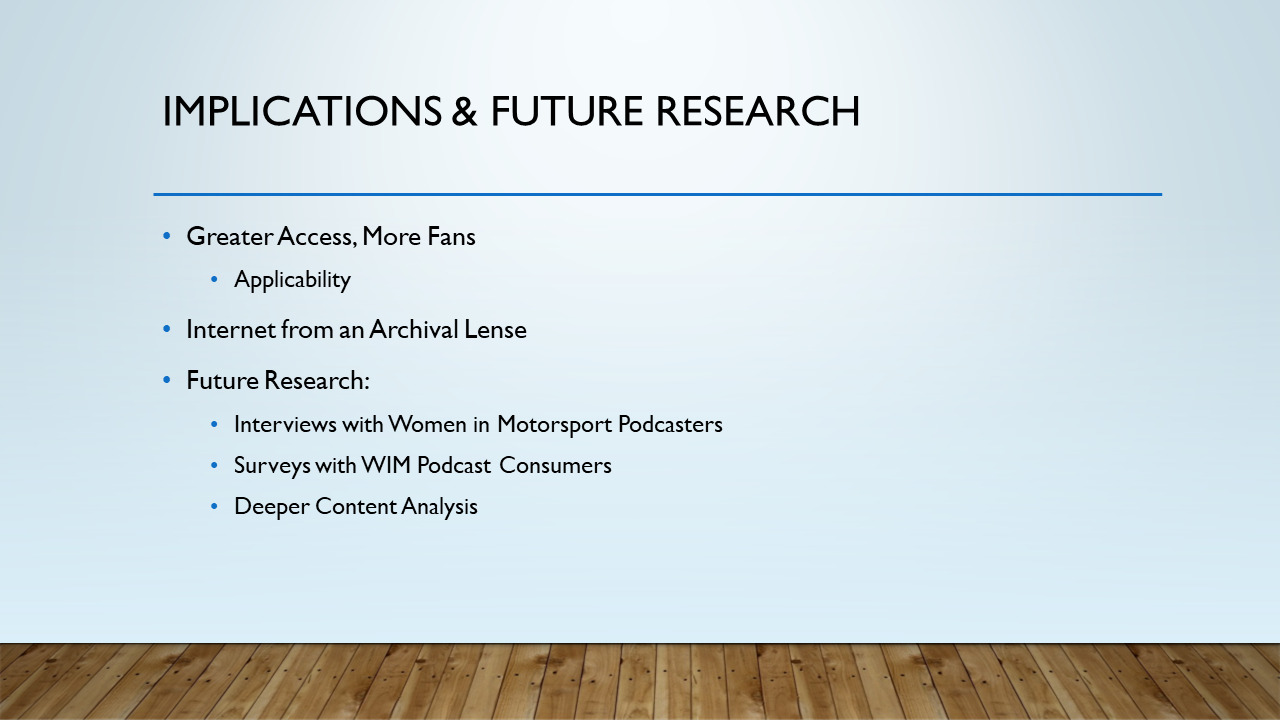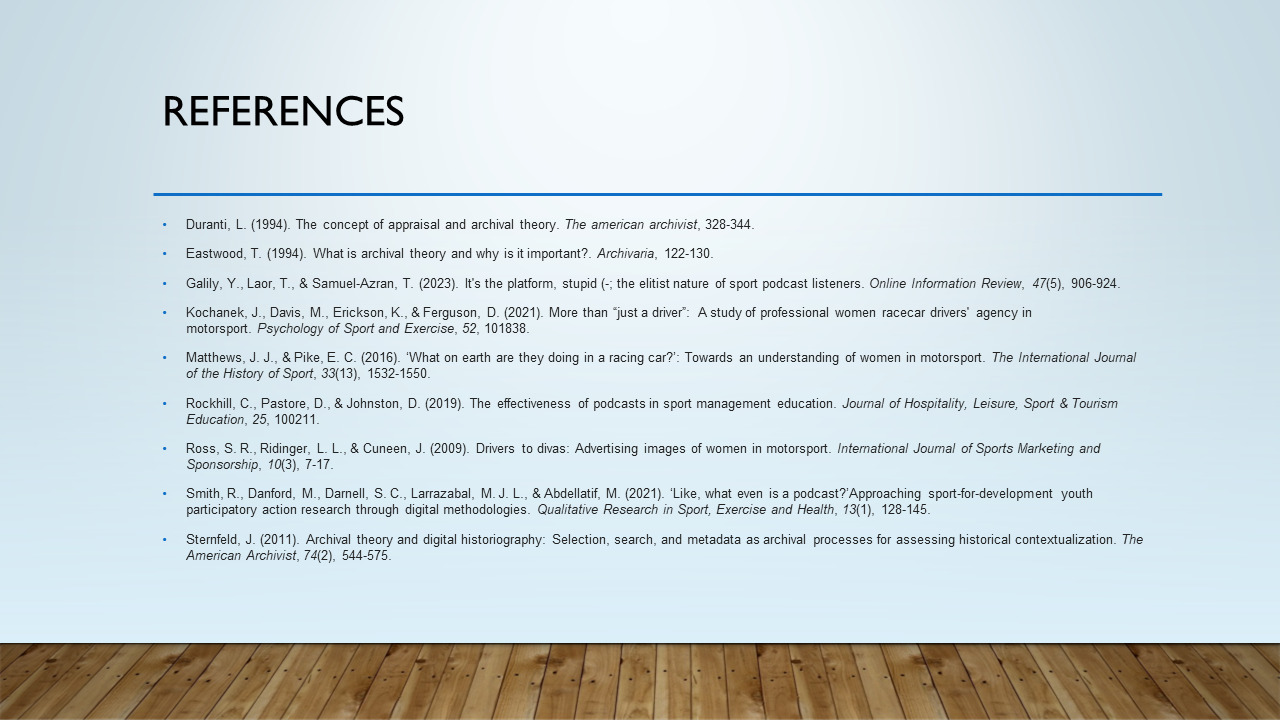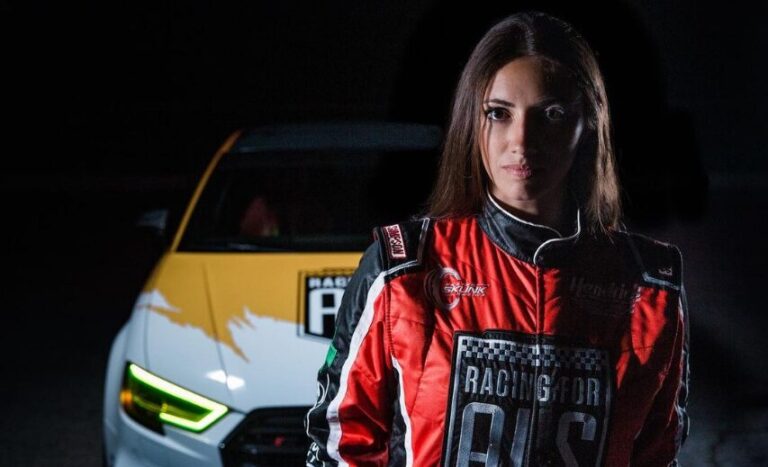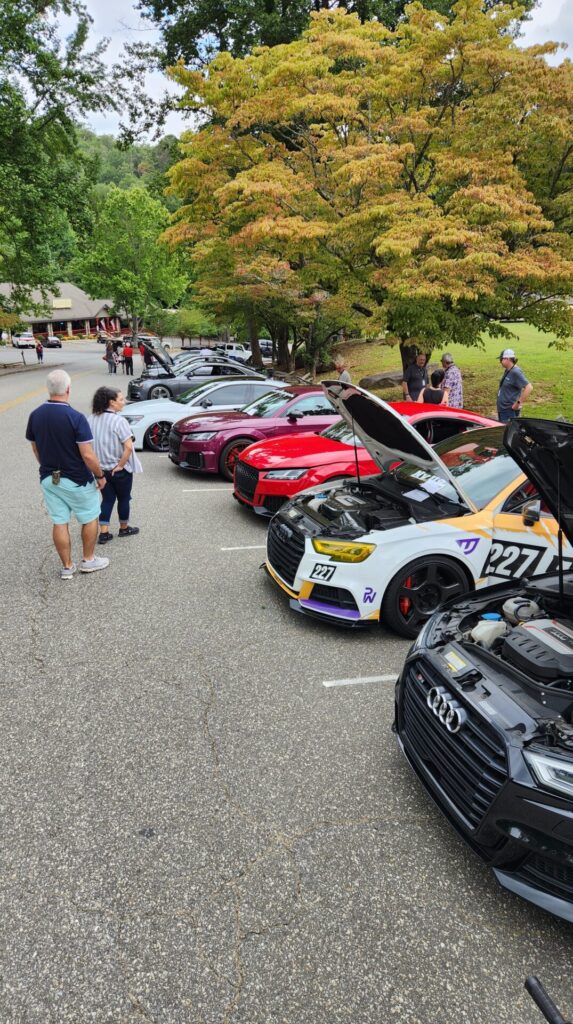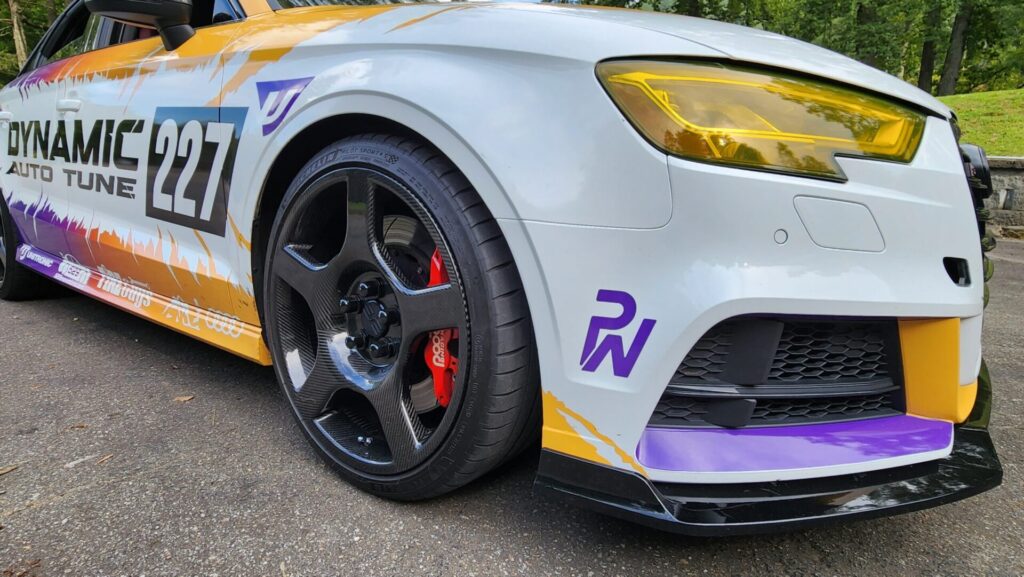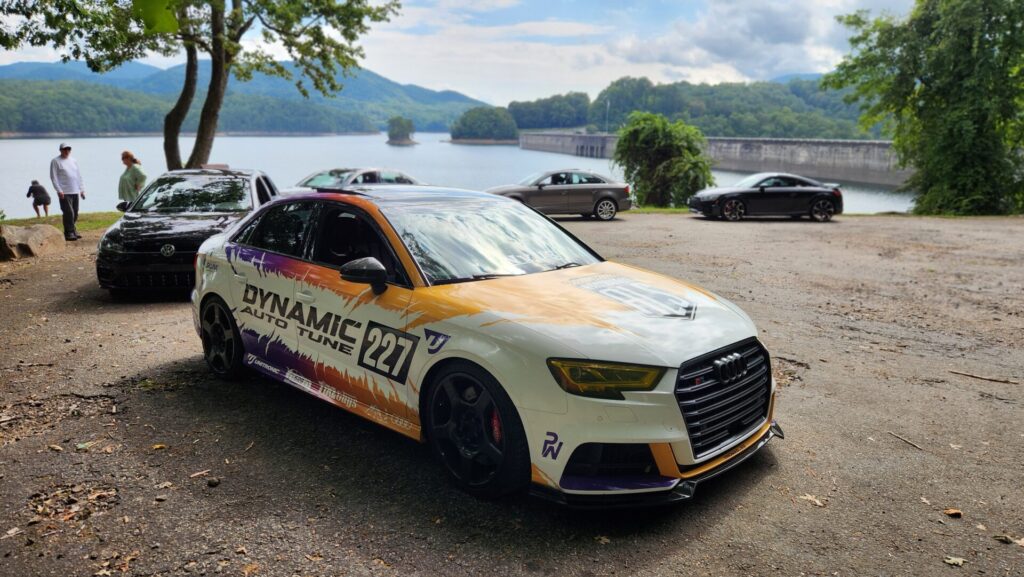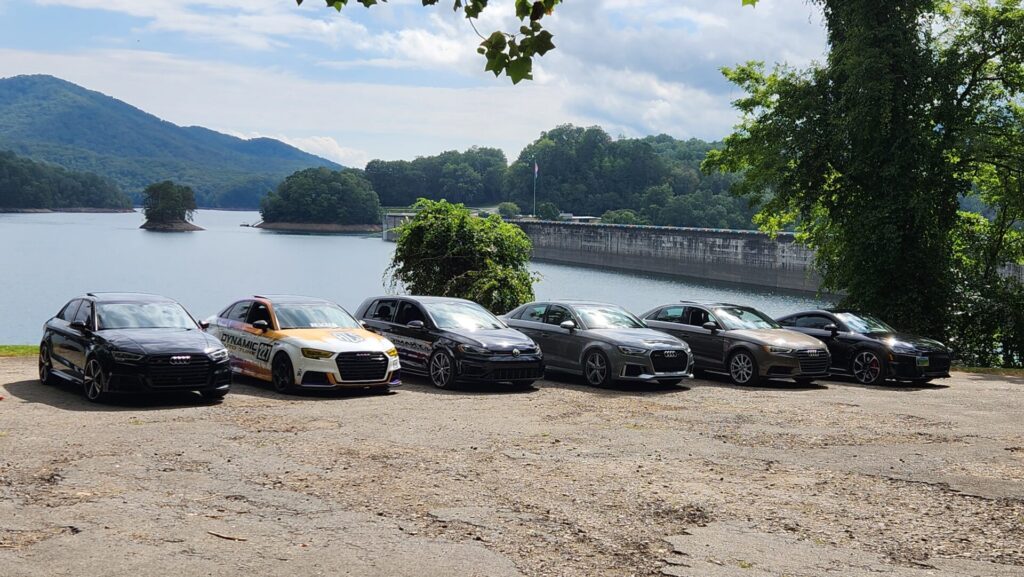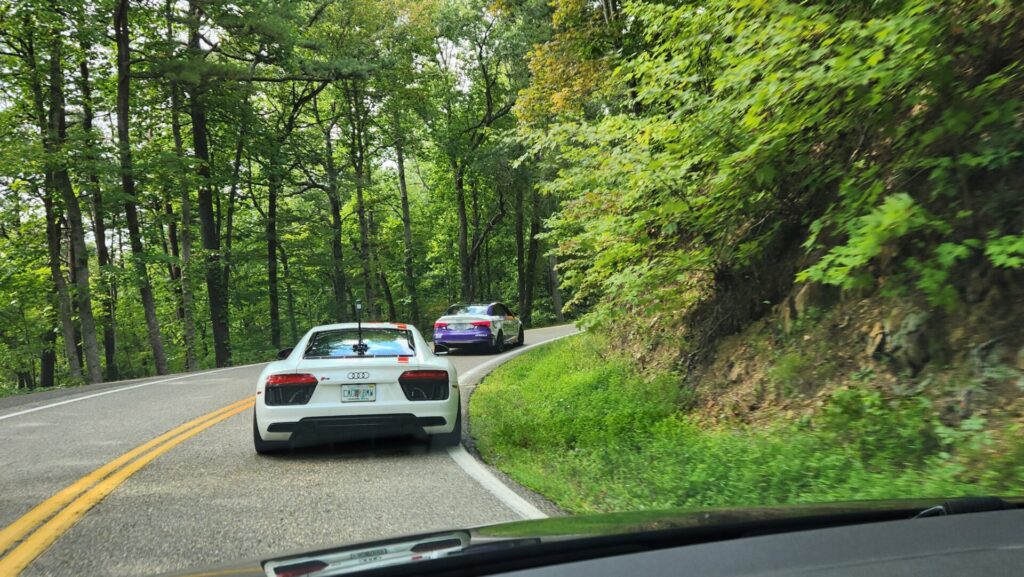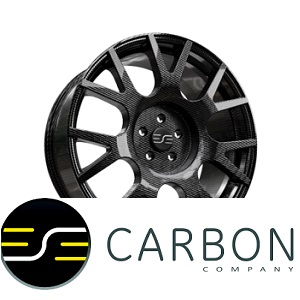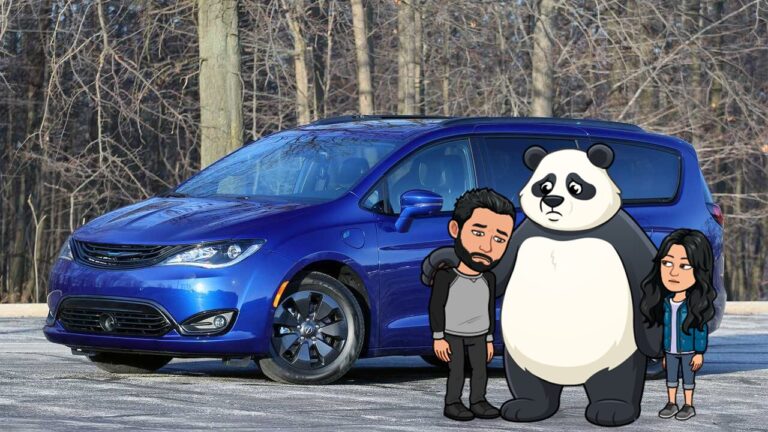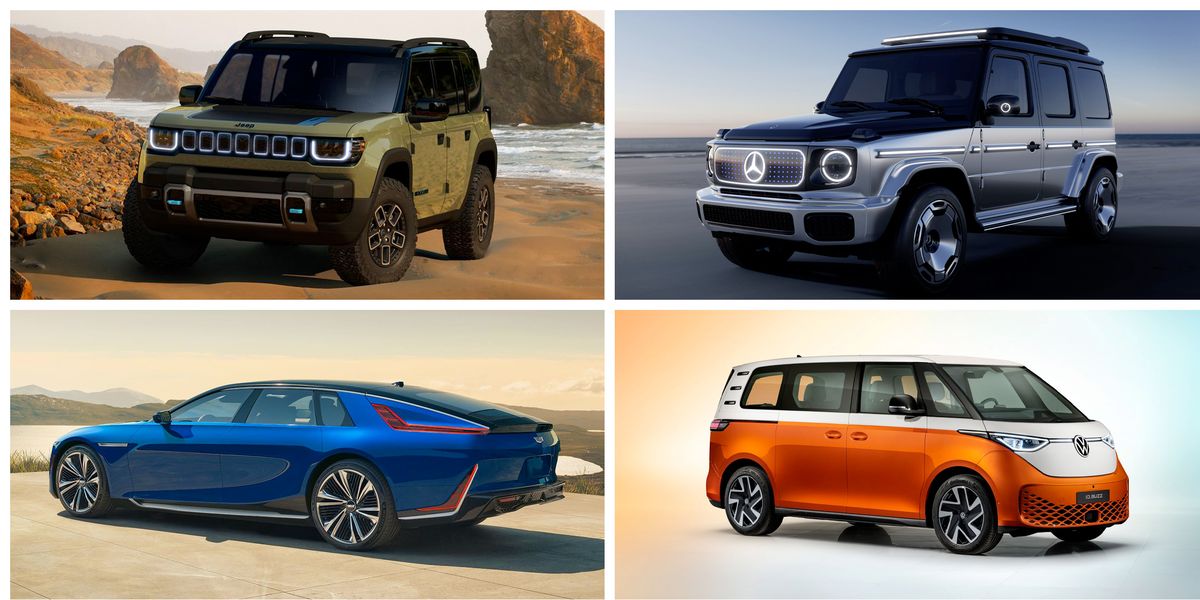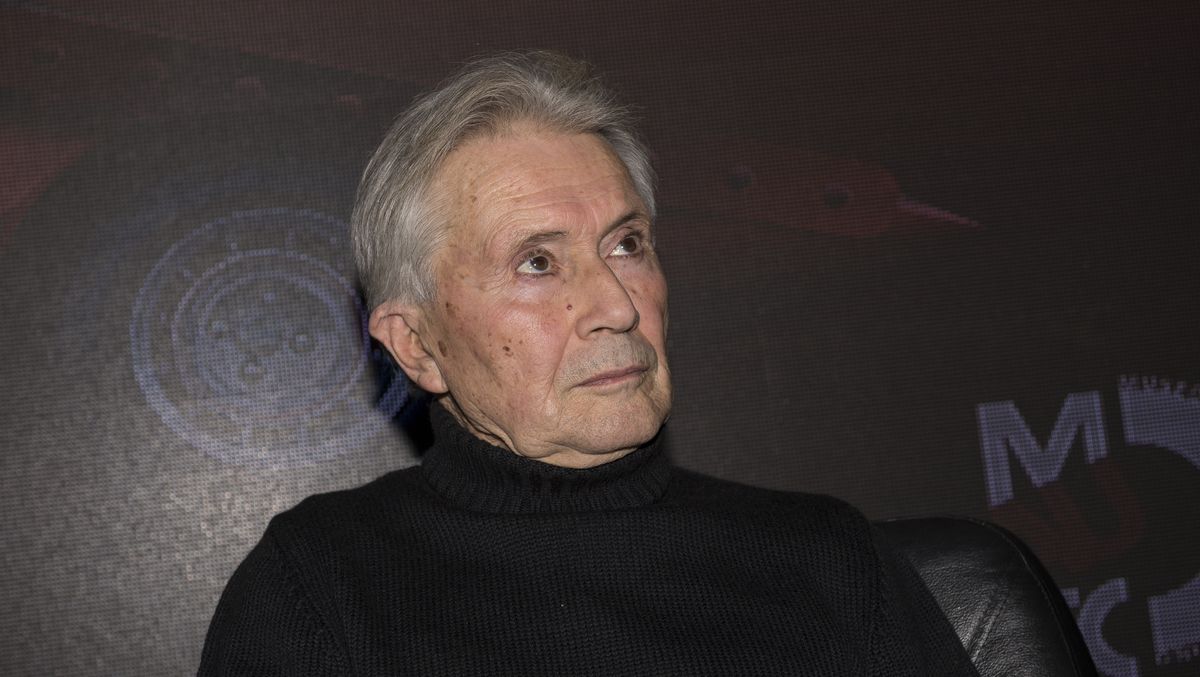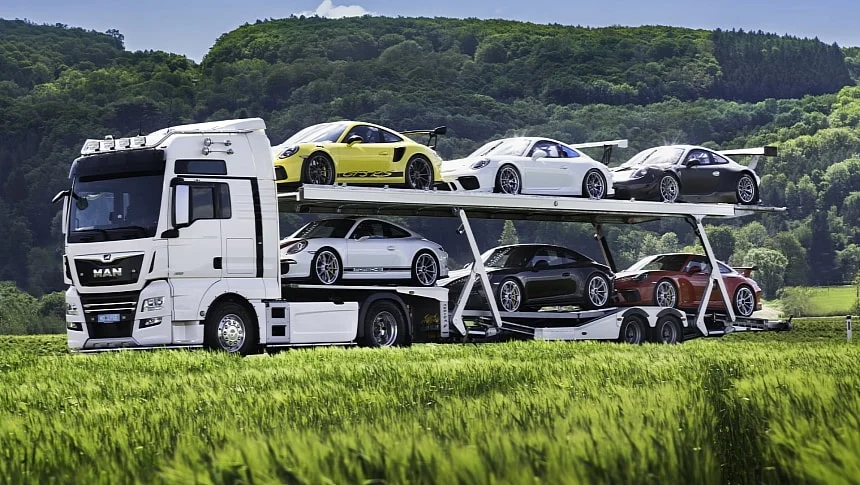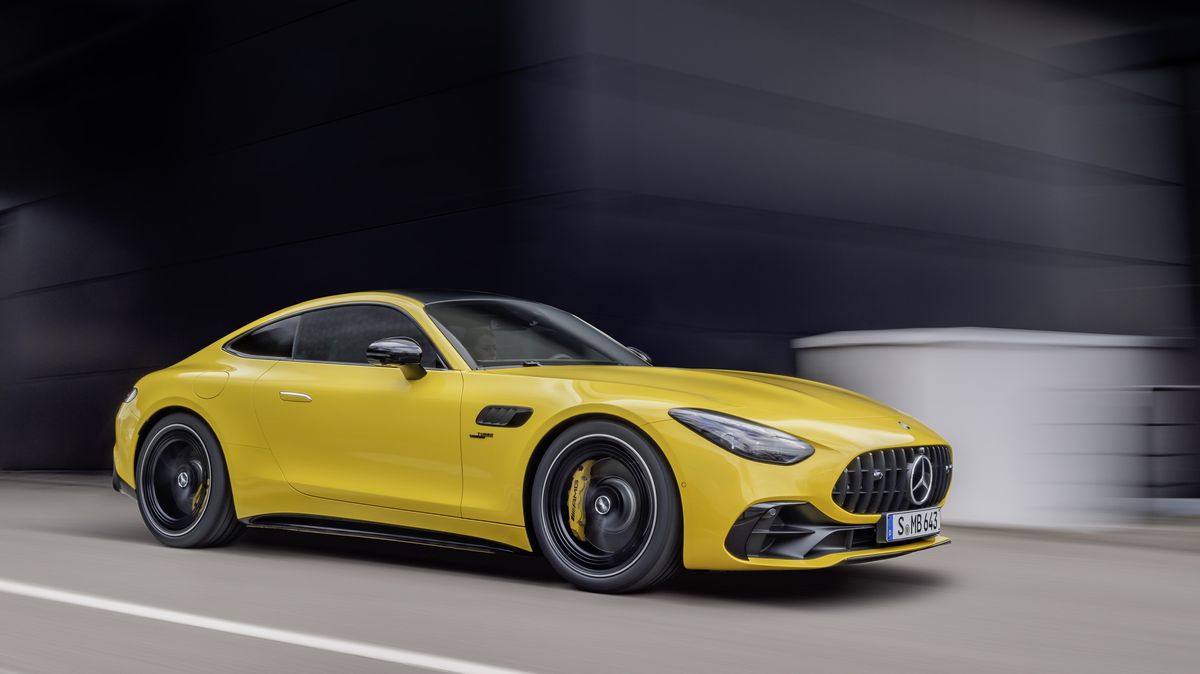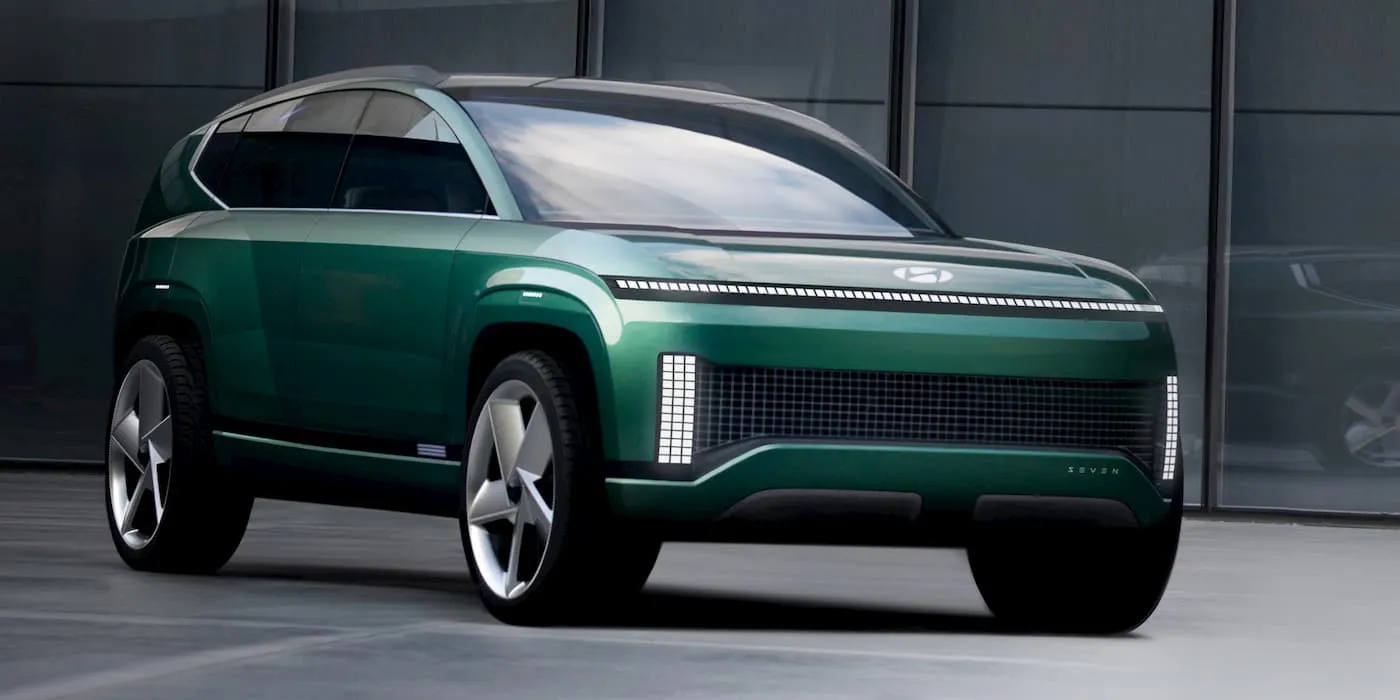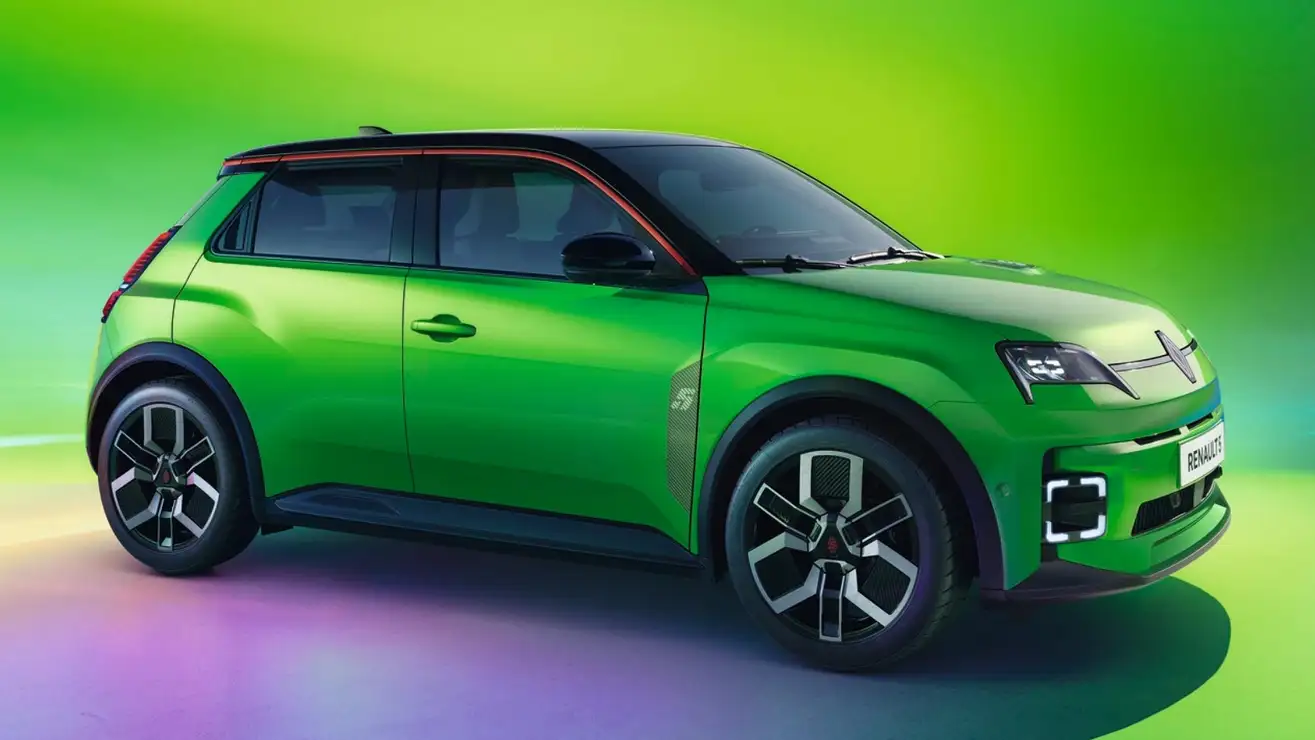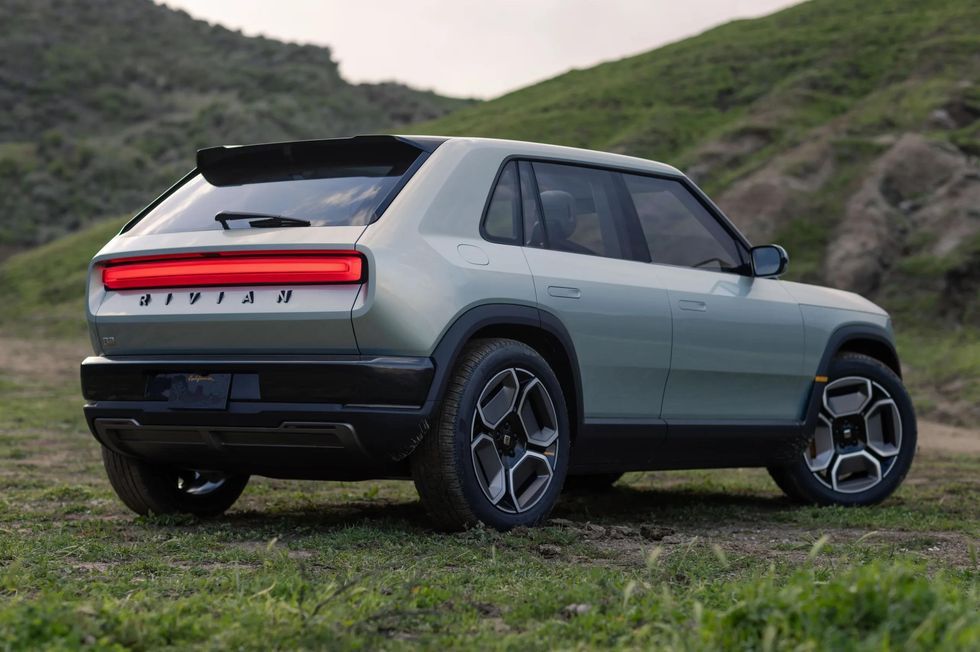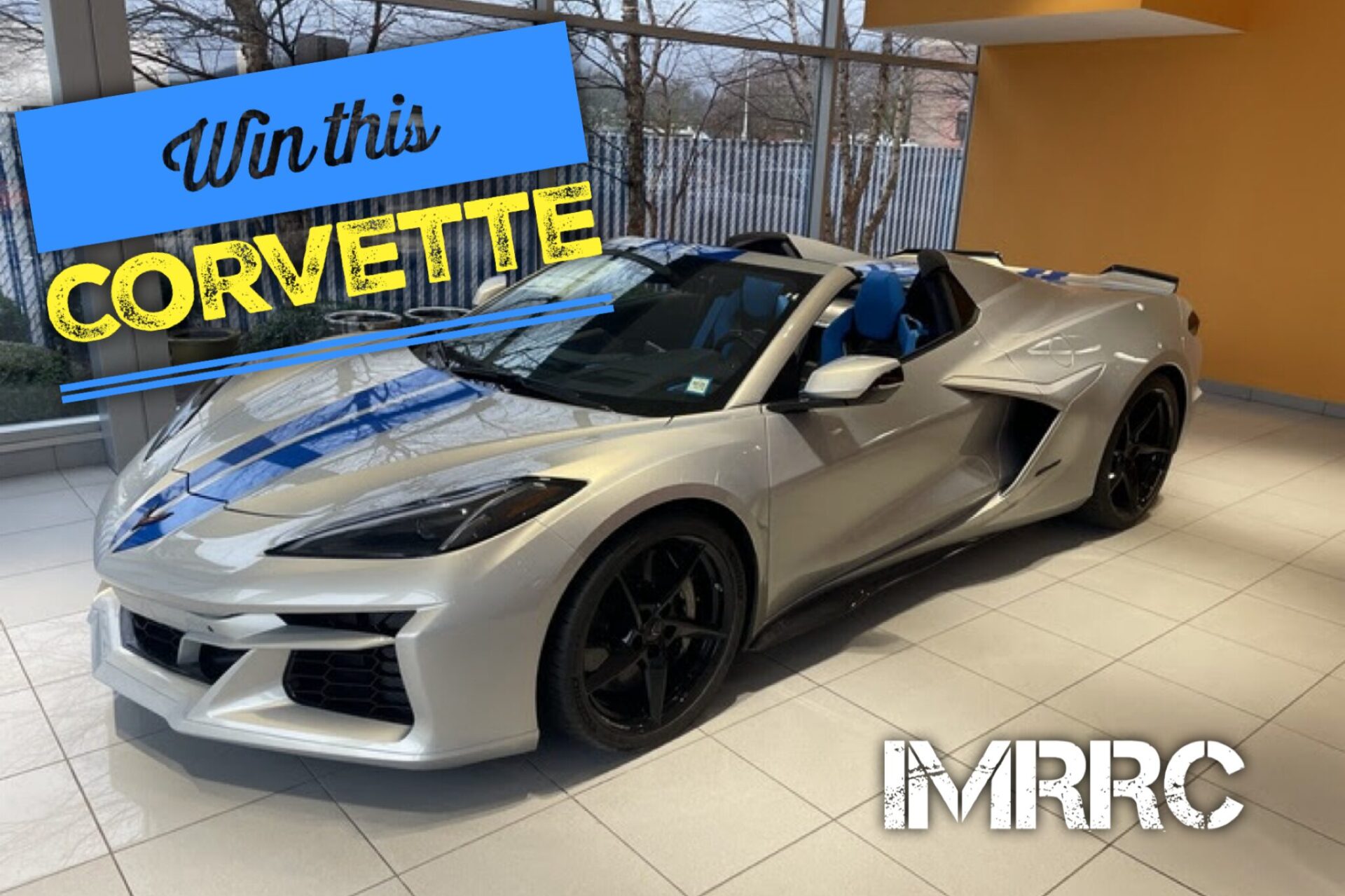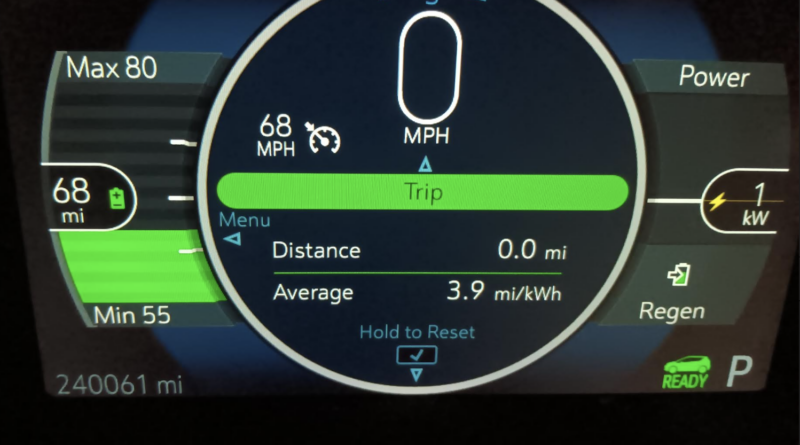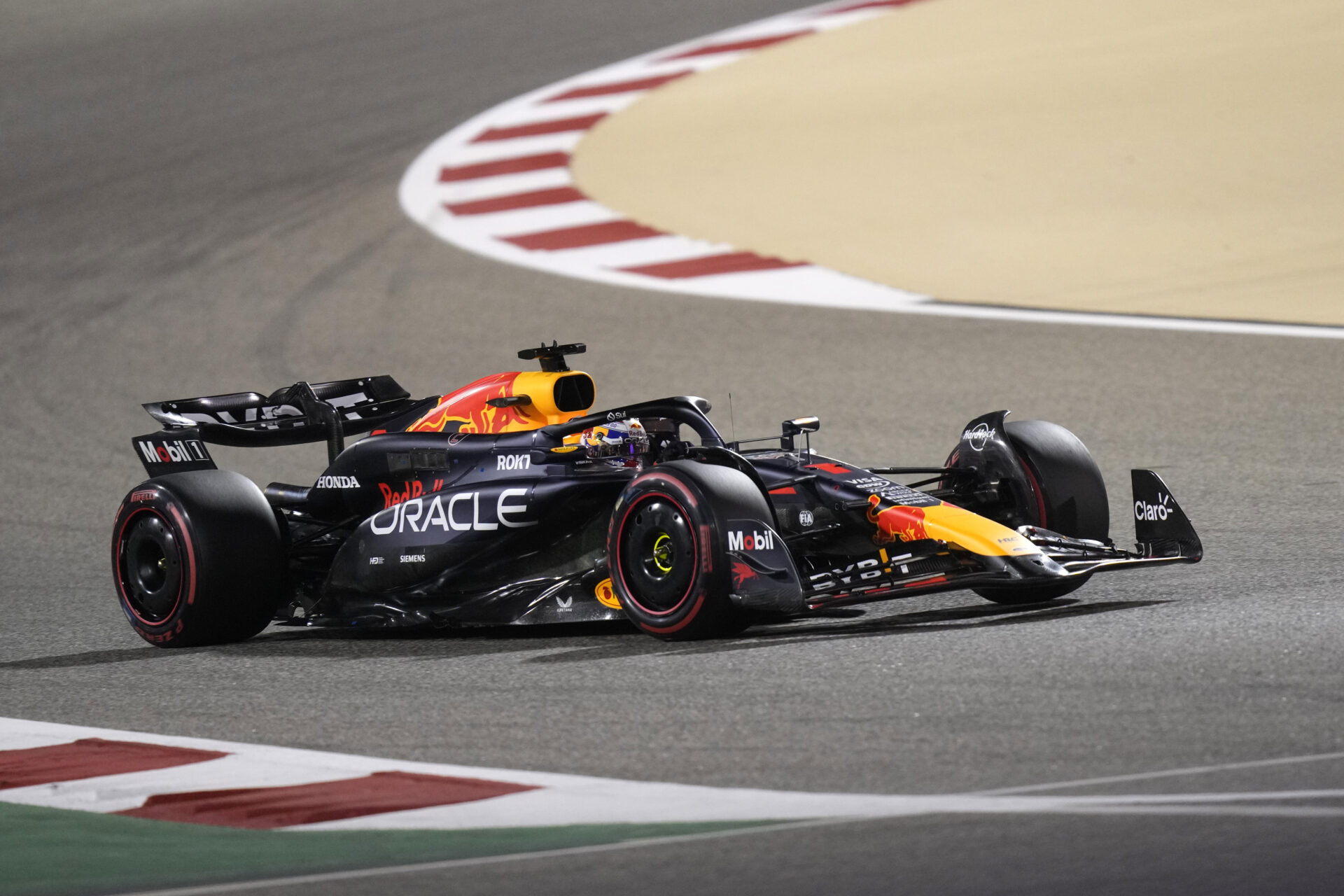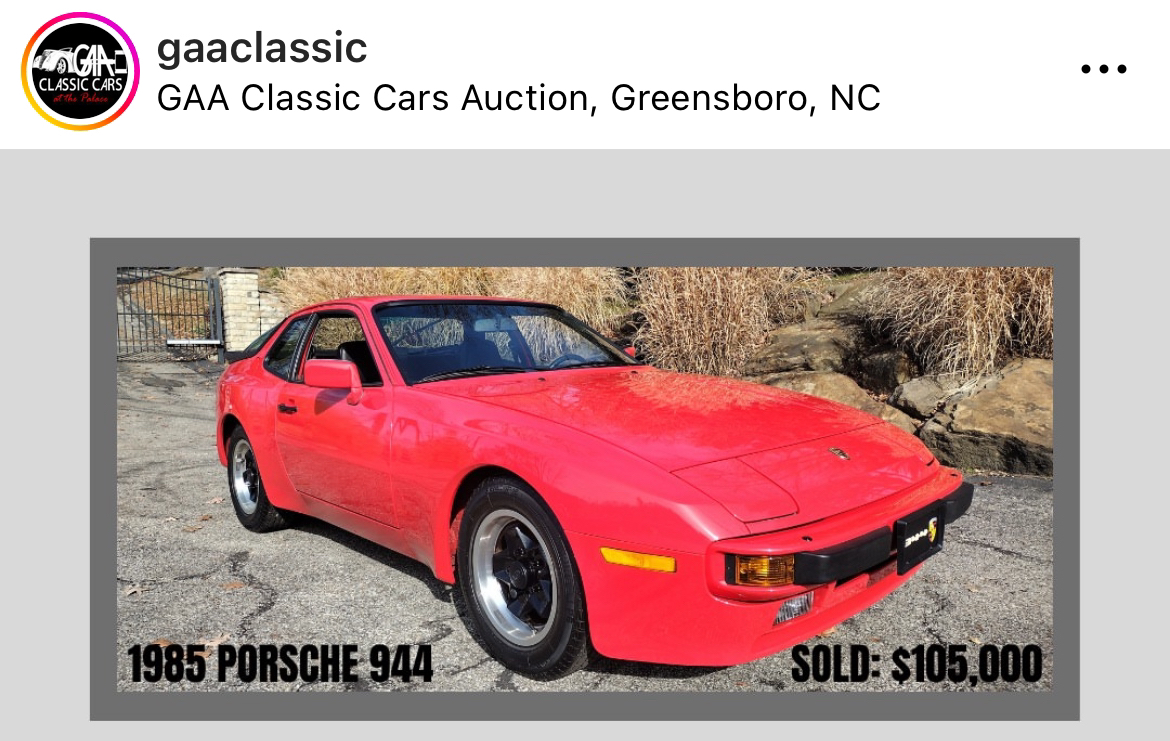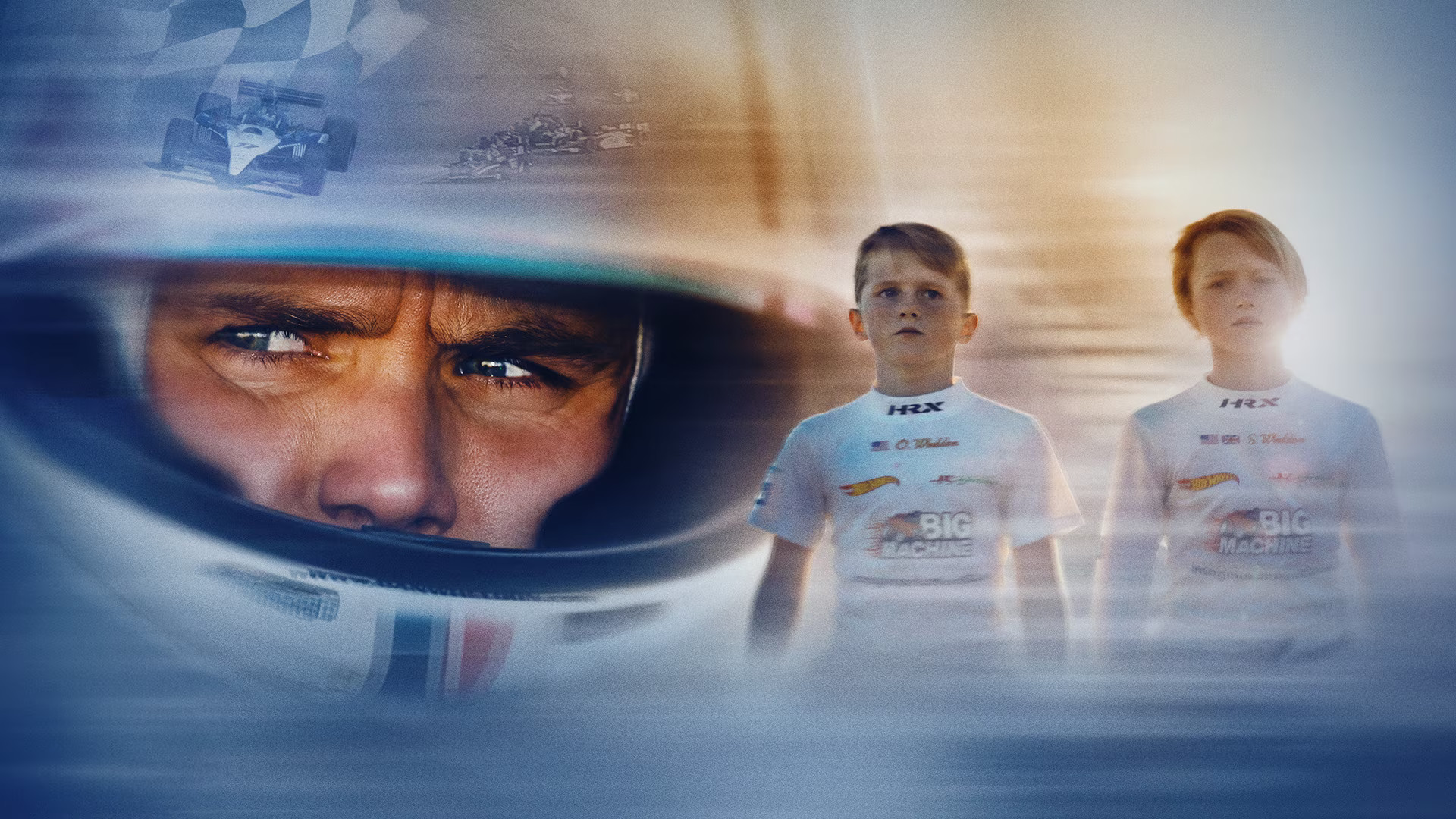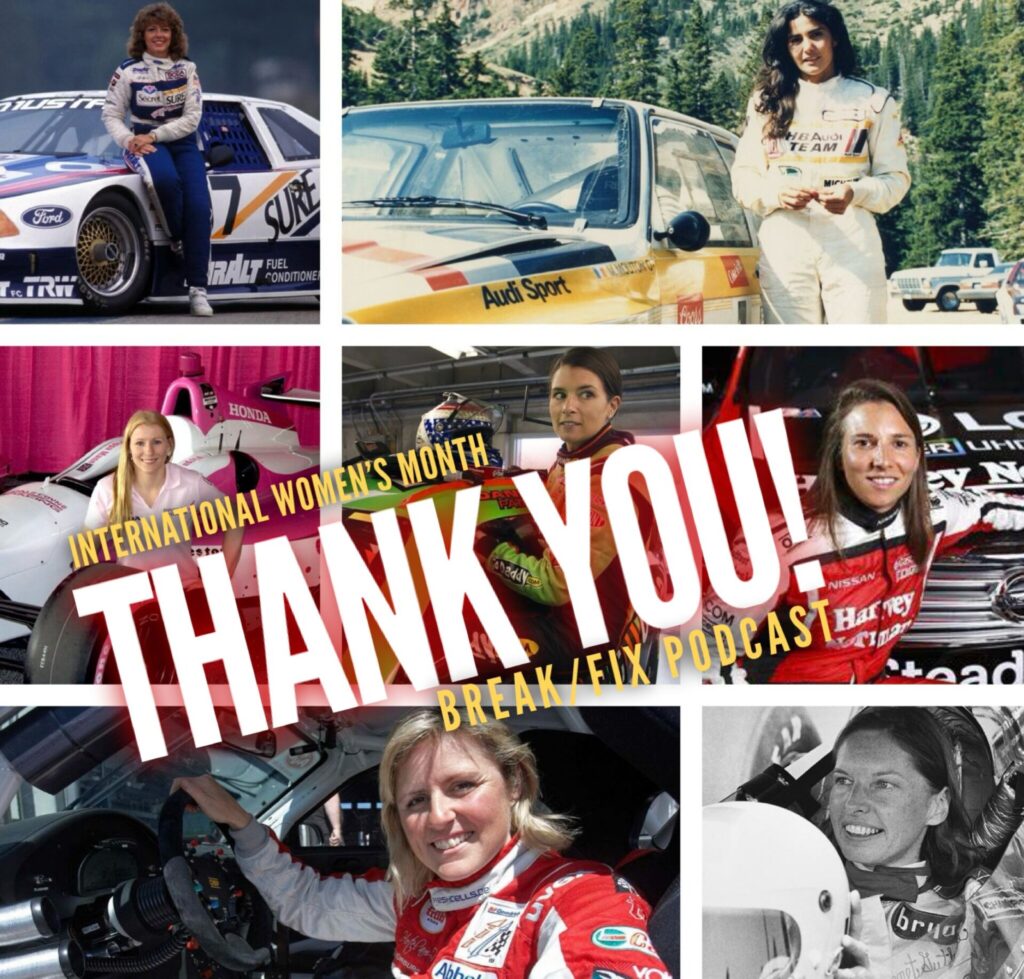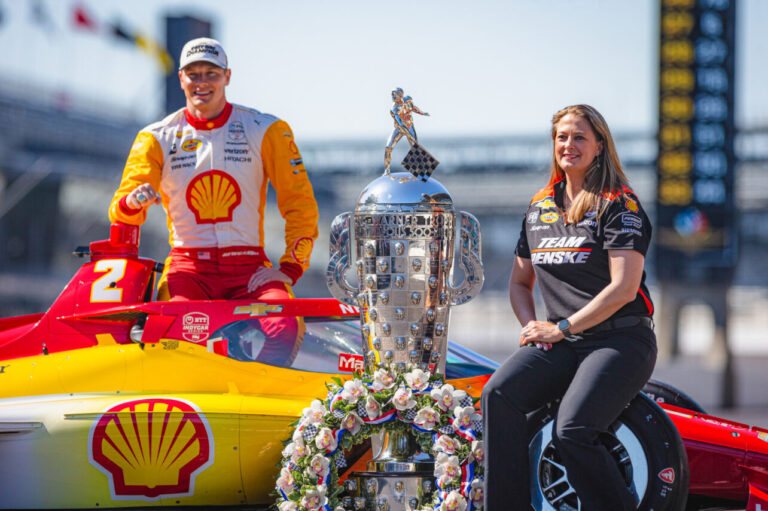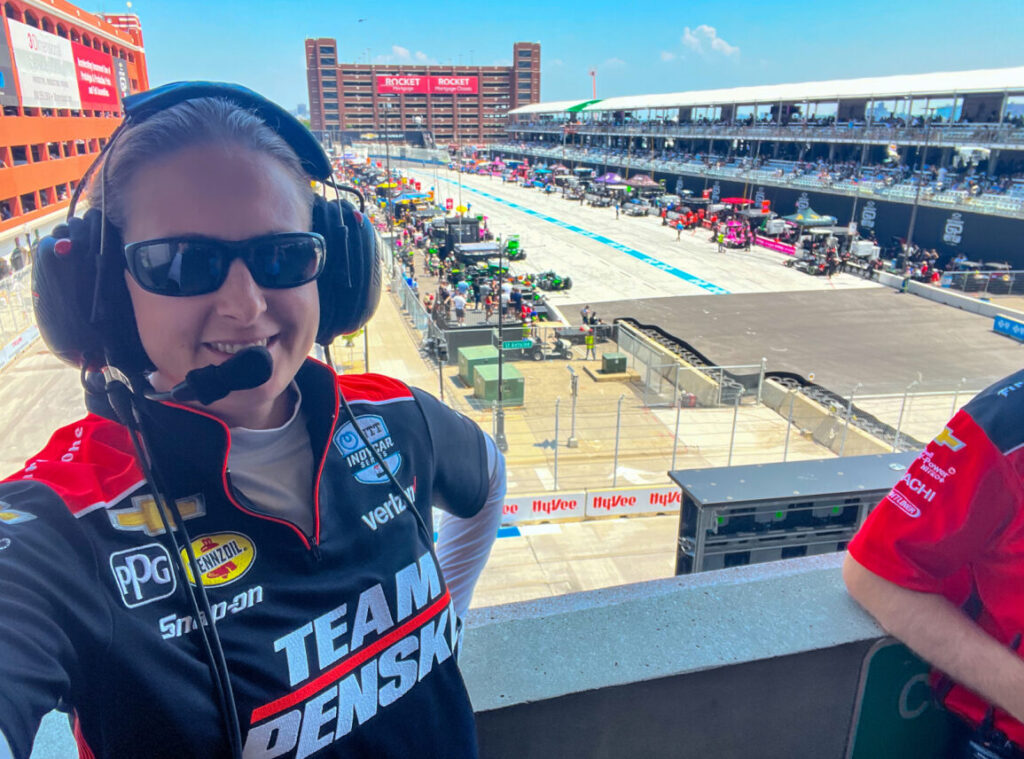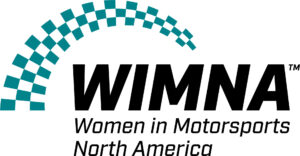The Oswego Speedway, located in Oswego New York, was built in 1951 when original owners Harry, George and William Caruso converted the one time Wine Creek Horse Track into a 3/8 mile dirt auto racing facility. The track was paved during 1952 and remained a 3/8 mile track until 1961 when it was enlarged to its current 5/8 mile size. The Oswego Speedway has been a continuously run weekly race track since it opened in August of 1951.
And joining us tonight is Camden Proud – Public Relations Director – from Oswego Speedway to talk to us about its history, importance and evolution in the world of Motorsports and especially, Supermodified racing.
Spotlight

Notes
- Let’s talk about The who/what/where/when/how of Oswego Speedway? How did it all get started, what’s the historical significance, etc.
- Evolution & Growth of Oswego, and Oval Track Racing. Why do they call it “the Steel Palace”?
- Roy Sova mentioned in another interview that – Oswego once had a reputation of being one of the “most violent” tracks around, due in part to its Steel Walls surrounding the circuit. How has safety changed, and has the reputation of the track changed as well?
- Any significant events in the schedule or long-running traditional events?
- These days many of us might default to thinking about “Late Models” when it comes to short track racing. Oswego is known for its “Supermodifieds” – what’s the difference, and what are the different types of cars that run at Oswego?
- If someone was planning a visit to Oswego (for a race, or maybe a tour) what are some things they should know before coming? Fees, Amenities, Restrictions, etc.
and much, much more!
Transcript
[00:00:00] Break fix podcast is all about capturing the living history of people from all over the auto sphere, from wrench turners and racers to artists, authors, designers, and everything in between. Our goal is to inspire a new generation of petrol heads that wonder. How did they get that job or become that person?
The road to success is paved by all of us because everyone has a story. The Oswego Speedway located in Oswego, New York was built in 1951 when original owners, Harry George and William Caruso converted the one time Wine Creek horse track into a three eighth mile dirt auto racing facility. The track was then paved during the 1952 season and remained a three eighth mile track until 1961, when it was enlarged to its current five eighths mile size.
The Oswego Speedway has been a continuously run weekly racetrack since it opened in August of 1951. And joining us tonight is Camden [00:01:00] Proud, Public Relations Director from Oswego Speedway, to talk to us about its history, importance, and evolution in the world of motorsports, and especially super modified racing.
And with that, let’s welcome Camden to BreakFix. Thanks for having me, guys. Looking forward to being a part of it tonight. And joining me tonight is one of our regular co hosts on BreakFix. You know him well. It’s Mountain Man Dan, who heads up our Mountain View division, all things dirt, off road, trucks, and bikes.
Welcome back, Dan. Good to be here. We also have a special guest with us tonight. Let’s welcome back Kip Zeider from IMRRC, who’s been going to events at Oswego for over 50 years. Well, thanks, Dan. And God, does that make me feel old? Let’s go back in time to when Kip was young and had long hair. And let’s talk about the history of Oswego Speedway.
It started out as a track for horses. Do you guys know how many years horses ran on it before it got transferred over to automobiles running on it? I do not. No, I’ve actually seen maybe one picture ever of horses up here on the track and I don’t know when that started. [00:02:00] All I know is when the Crusoe’s bought it in 1951, that was when the conversion started and that was the reason that it was left dirt because that was the easiest thing for them to do in the first season was leave the dirt surface down because that’s what it was used for with the horses.
1952, they jumped right into asphalt racing and that’s the way it is today still. I’m sure at that time, leaving a dirt wasn’t uncommon because in the infancy of racing back then, a lot of tracks were dirt. I’m assuming that it wasn’t out of the norm for it to be a dirt track at that time. Exactly. And what they did in 52, it took some time before the supers were brought into the speedway on a weekly basis.
That was. In the early sixties. So for a while they were running a mods and B mods kind of older coops, things like that, that most of the dirt tracks around here, that was what was being run broadly across New York state. I think they did the easiest thing to kind of get their feet wet as track owners initially.
So who won the inaugural season at Oswego? I know quite a few of the names back then. And one of them was John Treacy senior, who was the father of [00:03:00] John Treacy jr. That still owns the track today. He raced in the first ever season here, but our records go all the way back to 1951 and we do a good job updating those.
It’s always fun to take a trip down memory lane. Camden, you came to Oswego way later than Kip did, but Kip, you also came in during the asphalt generation. So do you know of a time or were you aware of when Oswego was run as a dirt circuit? Yeah, but only from the history books. I mean, it was only a dirt track for the first year and then it’s been paved ever since and not to fast forward the story.
Cause I’m sure we’ll get into it. The interesting thing, and Cameron can talk about this after Oswego’s normal season is over with the international classic Labor Day weekend, it becomes a dirt track again for super dirt week. The whole year is I’ve been there apart from going to super dirt week every year.
It’s asphalt. Keep in mind that back in those days, there were probably more dirt tracks, as you point out, but it was easier to convert and run a dirt track one night and an asphalt track the next. The first super dirt week, which was held on the Syracuse mile one mile dirt track [00:04:00] in 1972, I think. The guy that qualified third was Jerry Cook, who was a multi time NASCAR asphalt modified champion.
Basically, all you did in those days was switch tires, so it was easy to convert back and forth. Obviously, over the years, it’s become much more specialized, and now a dirt car is a dirt car, and an asphalt car is an asphalt car, so there’s not that changeover that there used to be in the early days. But that’s a changeover in the car, but as you mentioned, the changeover of the track surface itself has got to be pretty.
Difficult. That’s not as easy as just changing tires on your car. So how do you bring in the dirt? How do you change the surface of the track? Does it mess up the asphalt? I’ve heard it happen a couple of years ago. They did that at Bristol. They were going to run NASCARs on the dirt surface. You guys are used to doing this, but how does exactly does that play out?
They did do NASCAR on the dirt Bristol for a few years and. Basically same type of process here. They just truck in loads and loads of clay. Some of it is stored right behind the turn to wall here. And it’s kind of just sits there all winter and track crew with dirt car does a [00:05:00] phenomenal job getting the surface in shape every year.
Not an easy task. The place is pretty beat after every super dirt week. And we’ve had to patch certain sections of the asphalt and repair the walls, paint, and just give the place a little love every year after super dirt week, usually more than that, what would be required, but it’s a great event. It’s honestly helped a lot to put this track on the map even more than it already was with the supermodel sites.
Yeah, imagine clean up afterwards is an undertaking in itself because asphalt, you might get some debris from the tire and rubber kicking up to the sides, but dirt, we go out and have to wet it down or solvent so it doesn’t get too dry. So it’s coating the walls with mud and everything and then kicking it up into the stands as well.
So I’m sure it’s very interesting mess to clean up when it’s done with. It is. We have a really hard working maintenance crew and They do a great job and I actually just walked the tracks the best that it’s looked after Super Dirt Week that I can remember and they’ve been doing it since 2016 here. So I think we have a couple spots to patch, but the surface is in surprisingly good shape this year.
It’s just a lot of mud and all sorts of fun stuff [00:06:00] to clean up. I think one of the pluses of Super Dirt Week coming to Oswego, Super Dirt Week ran on the Syracuse Mile from, I think, 1972 to 2015. Goofy politicians wanted to get rid of it, extend the midway and all that stuff, which still pains me. But they wanted to keep the event in upstate New York.
But Oswego was the only track that really had seating capacity anywhere close to what Syracuse held. So they moved it to Oswego. There was a huge influx of money associated with it. And with that, they were able to basically get the rear grandstand, which was getting pretty shabby in a lot of sections.
They basically redid the entire rear grandstand completely, made a lot of other, you know, improvements. Improvements to the track. So the fact that you’ve got dirt money helping to keep the asphalt track alive and in and in fact increase a lot of the facilities, I think is kind of interesting. And we’d never seen Oswego as dirt, obviously.
So the first time they announced super dirt or Week was moving to Oswego, it’s like, oh my gosh, we gotta be there to see that. You [00:07:00] already talked about putting the surface down, but it is a real science to keep a dirt track. Drivable regardless, but it’s even more of a science to put dirt down on an asphalt track and basically have a month before you’re going to run your big race.
And so much is contingent on mother nature and all of that stuff. But they’ve done a remarkably good job most of the years and making it a very good competitive race, but a lot of money came in with that. And to their credit, I think they used it to improve the whole facility, which is a good thing. So as as we go has evolved and more high profile events.
Have happened there. Dirt week happens, all these kinds of things. How has the track evolved? What has changed from a safety perspective? What has changed about the facilities itself? Just like the whole of motorsports, the Speedway is always working hard to improve the safety of the cars. And Of course, the phone blocks that started at Lancaster back in the 90s have been here ever since also, and we have a phenomenal track safety crew, in my opinion, best in the country, of course, I’m biased, but there’s been accidents, fires, things like that, that have happened here that I [00:08:00] firmly believe if they happen anywhere else, short track wise, be looking at a different outcome.
Uh, our track safety crew consists of EMTs, Swiggle firefighters. They are really great group of guys. And I wouldn’t want to race anywhere else on a weekly basis for that reason. And great tech crew as well. Safety officials, very thorough doing everything they can to continue to evolve these race cars.
And as the speeds get higher, I think we improve our safety as well. Original owners, like we brought the opportunity for the current owners to buy it from the original owners bought it and converted it from a horse track to a car track. Yeah. The Crystal family. Owned it for a while, and then it was Pat Furlon and Steve Gioia.
Pat being the father of Greg Furlon, who’s won six classics here. One of the most successful drivers of all time. And Steve Gioia is one of the most successful drivers of all time here in his own right. So, The Tracy’s same deal. They’d been involved in racing here for the longest time with Johnny and Eric’s father being one of the original competitors here, Johnny and Eric, both race supers [00:09:00] themselves, and once they heard that Pat and Steve wanted to sell the track, I think it was 2000.
They’re great businessmen. They’re into farming, trucking, and they have a new concrete business. The opportunity presented itself and they took advantage of it. And when they first bought this place, they’ve put a lot of improvements into it, and certainly very appreciative of all they’ve done to keep the place alive.
That tells me the fact that they’ve raced everything. Buying it wasn’t just some purchase. I mean, they had, their heart was in it when they did that. So that’s, that’s awesome. Knowing the owners of it are into it. Exactly. As long as the Tracy’s own at this track will not. Ever be anything other than a weekly super modified venue and kind of puts my mind at ease.
Their hearts are very much invested into super modified racing and the history of this place and just preserving that for years to come. That’s awesome to hear. So on another episode, we heard tidbits of the Oswego history through Roy Sova, who’s been the voice of Oswego for many years. We’re going to talk about him a little bit more as we go along.
Oswego has this nickname, the Steel Palace, but it’s also had a [00:10:00] reputation over its long history of being one of the most violent tracks around, and even Roy said that during his interview. That’s due in part to the steel walls that surround the circuit. So you mentioned some of the safety changes, but for those of us that are unfamiliar with that, can you kind of expand upon more about what that means and how Oswego is broken?
It’s reputation for being a violent track. I still think it can be very violent, but still steel walls down the straightaways. And once you get past the foam, I know all too well, the feeling of hitting the steel and it’s not pleasant. It doesn’t move. I can tell you that. I think it’s more so the evolution in the race cars, seats, seat belts, Hans devices.
The way the cars are built to withstand a wreck like that and impact like that. So steel walls haven’t gone anywhere. I just think the cars have become that much stronger and that much safer. So how does, as we go compare it to other tracks, how are some other short tracks built? Are they using steel as well?
Are they using cement? Do they have some sort of arm co something else? Depends on where you go. There’s some. Tracks that [00:11:00] Supermodified’s race had out in New England that have only walls on the straightaway and just grass embankments in the corners. There’s Evans Mills. We go and race our small black car up there and that’s no walls in the corners, but concrete down the straightaways.
So it really depends. Shangri La too, for example, which is reopening. Has concrete walls all the way around, but foam in the corners. Yeah, it depends on where you go, but the vast majority of short tracks don’t have a NASCAR Safer Barrier. It’s primarily concrete or steel. With Oswego, what sort of banking do you guys have at the track there?
We’ve always just referred to it as semi banked. It depends on who you ask, what the angle of the banking is, is degree wise, but semi banked is probably the best way to describe it. There’s a big debate on how long the track is too. We call it a five eighths. If you walk one way, it’s a half. If you walk around the outside of the track, it’s, it’s the five eighths mile, so it’s a debate between all of us Oswegonians up here, I guess.
So we mentioned Super Dirt Week. Are there any other significant events or? events that people should recognize that are being held at Oswego throughout the [00:12:00] year. You know, we said in the intro, weekly events, the track is always busy. How many events a year does the track hold? We’re going to have 12 race weekends in 2024.
It isn’t what it used to be as far as the number of events, but I think what’s really cool about Oswego now is that every weekend is A special event, so to speak. We have the classic in September Labor Day weekend, 68th season this year. Something I think is really cool is we’re having what we’re calling the Stock Car Spectacular on Friday night.
That’s the Dave London Memorial for the Super Stocks and then the New York State Compacts. On Saturday we do Modified Madness with the NASCAR Wheel and Modified Tour and the XMR Sportsman Modifieds. And then on Sunday is Super Sunday and we have the Big Block Swig of Super Modifieds. The SBS Small Block Super Modifieds and then the Wayne 350 Small Block Super Modifieds.
So if you don’t want to hang out all weekend, if you only, you know, like one of those divisions, one of those days, you pay more than another, I think we have something for everybody variety wise on Classic Weekend. Coming from two different, let’s say, [00:13:00] generations of Oswego, Camden and Kip, can you guys agree on who the greatest of all time to turn laps at Oswego is?
Oh, wow. Well, how about top three? Well, okay. So I’ll take a shot at this first. And again, keep in mind, I’m viewing this from the grandstand now in recent years, Camden’s viewing it from behind the steering wheel. So that may temper our feelings a little bit, but I guess I would say. Probably Jimmy Champagne, the great Bentley Warren, who I’m, little plug here, I’m desperately hoping to have at the center a little bit later on this year with one of the more iconic cars that ever raced at Oswego.
And from a longevity standpoint, and Cam may agree with me on this, I would say there’s a fellow named Joe Gosek. Joe’s been running at the Oswego Speedway for 40 years. And he’s still getting it done. Those might be my top three. I would agree with you, statistically wise, at least on Jim Champagne and Bentley Warren.
I think you have to say Jimmy’s the best ever. Obviously, I never got to see him race. And when I started coming here, Bentley was towards the end of his career, right? So [00:14:00] I know statistically, they’re far and away ahead of everybody else. And then, I’ve always said from 3 to 10 or whatever, if you’re ranking drivers, it’s kind of an open debate.
Eddie Ballinger Jr. sits at 52 wins. Joe Gozic has 45 and is still racing and competitive enough to win today. Otto Sitterly with 44. Nolan Swift with 41, Greg Furlan with 36, Doug Hevron and Doug Diderot at 33, and Mike Ordway at 30. And that’s just your top 10. There’s guys today that are still racing right now.
You’re Michael Barnes, Dave Danzers, people like that, who I think will continue to expand on their accomplishments so far. Dave just winning the International Classic for the first time this past season, and then went out and won the big Open Wheel Showdown in Las Vegas. I’m big on the history here, and it’ll be interesting to see how the record books change here in the seasons to come.
So other than drivers that you guys have raced there on a regular basis, are there any, like, NASCAR or Indy drivers that have come out there to run the track? Mario Andretti raced here back in [00:15:00] the 60s in a USAC sprint car, which is pretty neat. We had Mark Martin come and run here in ASA competition back in the mid 80s.
And there’s also a super cool YouTube video where Daryl Waltrip got behind the wheel of one of the Bowley Flyin 5 Supers and did an exhibition lap with Bentley Warren. More recently, I think in 2011 or 12, we had Casey Kane come in and do an exhibition with Otto Sitterly in one of the Nocotra Supers.
So there’s been a lot of NASCAR, IndyCar guys that have come out. And one of the coolest parts about the history of this place is that it’s sort of bridged the gap for some of these short track open wheel guys like Joe Gozic. Doug Diderot, Bentley Warren have all gone out and raced Indianapolis and been successful in IndyCar competition.
So another reason they call it the Indy of the East. You’ve already mentioned a couple of different car types in here, but first Camden, tell us about your superhero origin story and how you got into motorsports. Well, I definitely have to thank my dad for that. He was racing supers in his rookie [00:16:00] year, actually the year I was born back in 1998 and continued to race super modified through 2002.
And then as soon as he sort of semi retired, I get in a quarter midget, ran that for a while. And first thing I wanted to do when I graduated to a full size car was get up racing here at Oswego. And Kip, what about you? How did you get tied up in Oswego? I’ve never been an actual racer, but I’ve been a race fan my entire life.
We really started out at Shangri La Speedway in Owego, New York, not to confuse the two, but watching weekly asphalt modified races, the greats like Richie Evans and Dutch Hoag and Jerry Cook and Jeff Bodine. Shangri La was an every Saturday night for us for a couple of years. And then we discovered Oswego Speedway.
And I, I remember the first time we went up there. We were sitting at the McDonald’s, which is right at the entrance of International Drive. This is back when nobody had an enclosed trailer. Everything was out in the open and most of the Oswego Supers were cut down Indy Roadster cars. So we’re sitting at McDonald’s and we see Todd Gibson and the Flintstone Flyer from [00:17:00] Ohio tow in, go by, headed up to the track.
And we all looked at each other and said, Oh my goodness. Is that what a super looks like? And from then on, we were hooked. And that was probably in the. Very late 60s, early 70s. I’ve just been a fan ever since. Kind of interesting how oval track racing is different in different parts of the country. New England versus the Southeast versus out in California and things like that.
And so for us here in what we would consider the DMV or the Mid Atlantic, I think we’re most familiar with late models or World of Outlaws cars, right? The sprint cars. So you mentioned super modified and there’s actually. A news article from a couple of years ago, where Proud Motorsports, your last name, you guys purchased the super modified operation at Oswego.
So I wanted to pull that apart first, talking about the different types of cars, but also talking about how do you buy the super modified operation? And how does that work? Not easily. The car we have right now is a former Doug Diderot car. It was built in 2018. Doug raced it for a couple of seasons and then [00:18:00] retired.
And. Honestly, the operation we have right now is top notch and if it wasn’t for Doug giving us such an outstanding deal on it, I wouldn’t even have this opportunity. It’s honestly always been my dream to race the super modified. And prior to that, I had run on the small block class here for five years and it has always just been a lot more affordable.
And I didn’t really feel like I’d ever be able to move up to the super modified class just due to lack of funding and things like that. And we have the best financial backing between the sponsors that I’ve ever had. And The deal that we got from Doug to go ahead and do this really made it all possible.
So they’re a unique race car, fastest short track car in the world. This is the only place they’re run weekly anywhere in the world. It’s very special to be able to be a part of that, but it’s an enormous financial undertaking too. What is a super modified compared to some of these other cars? And there’s different stages of super modified that come to understand as well.
Maybe the best way to do it would sort of be explain what each class we have is here. It gets a bit confusing, but since 1992, we had what was formerly known [00:19:00] as a limited super modified. Now they call it a small block super modified or SPS. And it’s not a true super modified frame. It’s more of like a IMCA modified frame, like on the dirt, but they’ve been a great feeder 92.
That’s when my dad started in and myself as well. So that’s the small block super modified. They’re run by a Chevy 602 crate motor. Independent front suspension, about 400 horsepower. Then we have the 350 super modified class, which just was introduced here on a weekly basis in 2019. Most of them are older big block, super modified frames with the big top wing over the top of the roll cage and thinner tires all the way around.
Also using a Chevrolet crate engine, this one being a 604. So that’s kind of one step down from the big block class and then the big block super modified. About 850, 900 horsepower, 18 inch right rear tire. We’re averaging about 138, 140 mile an hour laps. Average speed goes around the track five eighths of a mile and 15, three seconds is the track [00:20:00] record.
So very fast, very powerful race car. Doing the laps there in the 15 second range and hitting speeds of like 150 miles an hour. I was reading online, they’re saying you can generate up to like 4 G’s of force in the turns up there. So that’s, that’s a good bit of force that the drivers are feeling going into the turns on that track.
Yeah, it is. The G force is really something. I actually wasted my first couple races in a big black super because I was uncomfortable in the seat. The G force was throwing me around so much I couldn’t even drive the car until I got more comfortable. So yeah, it’s, it’s really impressive. When I get in the grandstands and sit back and look at those cars, I look at the people around me and say, I can’t believe I actually do that.
They’re just an incredible machine. So when you look at them in picture and you take away that sort of World of Outlaws style wing on top, they really look like a late 60s, early 70s era Formula car, Indy car. So is that about right? Yeah, they do have very similar suspension to Indy car, Formula 1 cars with the independent front now.
That was. Illegal for a while. And then I think 2012, they allowed the independent front suspension. They [00:21:00] are sort of like an Indy car. And we also call it the Indy of the East. That’s not for nothing either. For your listeners who really can conceptualize it, it’s all open wheel stuff. It’s not a closed cockpit, like an asphalt modified.
The cars are just wicked looking. Sitting still and they’re even more wicked looking when they’re going 140 miles an hour around the track. Big block, methanol, every year I go there I sit under the big covered grandstand because after about two laps all that methanol fumes comes wafting up into the grandstand and I’m telling you guys if I get home at one o’clock in the morning and I still smell methanol and my ears are still ringing from the sound it’s been a good night at Oswego.
So what are they like to drive? I mean you said 130, 140 miles an hour. Are they Pretty well planted. Are you sliding them the whole time? What’s the driving style like, and how do you manage a machine like this? Just all depends on the handling of the car, obviously. And I think the track here changes so much, but right now we have more downforce in the super modified than we’ve probably ever had with the rear wing behind the roll cage, they were shoveled tails for a while, [00:22:00] just a lot of sheet metal around the roll cage.
Then we moved to tell sections, which was again, just kind of a big wing wrapped in sheet metal. And now we have the tail wing, which sort of looks like a copper classic Phoenix wing back on the supers of the nineties that they had running out west. So there is a lot of downforce right now. We’re going to be taking some of that away this season, actually, but they are very planted compared to what the tail section cars were when I first started racing supers.
Kip, you have a obviously longer vantage point when it comes to super modifieds and you’ve seen them change. a ton over 50 years. So tell us about some of the older cars and the improvements you’ve seen and changes that you’ve witnessed. For the longest time that we went during our early days there was simply one class of car and it was the super modified and you’d run heats and semis and a feature and there weren’t three different classes of cars like there are now which is great because it does offer a lot of variety and I enjoy that.
But there was just one class of car. So it started when we were there with the Indianapolis [00:23:00] roadster bodies, which were cut down and all cobbled up. The cars look totally awesome. They got a little bit more aerodynamic just hearing Camden say they’re going to take a little of the downforce away this year.
I’m wondering how they’re doing that. Are they going to make the rear wing smaller or what they’re going to do there? Well, we’ve been part of that whole evolution and for a period of time, the. Rulebook at Oswego was almost microscopically thin because we went through the era of actual rear engine cars.
I remember one season when Jeff Bodine raced a rear engine car, and pretty successfully. Jimmy Champagne, who was probably one of the most Innovative drivers and competitors ever in the history of the Speedway was the first guy to come out with the offset approach where the engine and the drivetrain is all hung out on the left because all the car does obviously is turn left and Jimmy made a rear engine super modified that was banned I think after one season because it was just so dominant.
So we’ve seen the evolution of the cars, the evolution of the design of the cars, at least from those of us that sit in the stands, when they went to the [00:24:00] fixed wing that Camden’s explaining now here, four or five years ago, there was mixed feelings on that because it didn’t look like the traditional super modified that we had all become used to watching.
My thought was, I don’t want to be the last guy sittin in the grandstand watchin the last super modified race at Oswego. So if this is what it takes to keep the class going, I’m all for it. It’s been fun seeing that whole evolution from the indie roadsters to the open body work. With these cars being so specialized, where do the chassis come from?
Where do the parts come from? You know, if you’re in the NASCAR world, everything comes out of like, Morrisville, right? I mean, it’s all based in one sort of area. So how does it work for supermodifieds? Where’s all this stuff coming from? Or are people still building these things in their barns and their sheds?
I’ll let Kip talk about how that was back in the 60s, 70s, 80s. That’s probably a better question for him more so than me, but now the cars are mass produced by Joey Hawksby at Hawk Junior Chassis here in Oswego. But I’ll let Kip jump into [00:25:00] what it was like back in those days. It was much, much more backyard pull parts out of the junkyard, all that kind of stuff.
I mean, when we first started asphalt modified spectating, I dare say that almost every car that rolled in there was built by the owner out of his garage, out of the local garage downtown, something like that. The first guy to get into mass production. Of asphalt modified chassis and stuff was a guy by the name of Mayer Troyer, who is one of my favorite modified drivers of all time.
I had a friend who was modified racing, and depends on how you look at this, either Troyer destroyed the sport or opened it up to more people, because once Troyer came out with his cars, if you needed one of those to be competitive, and if you crashed it, you had to call Troyer by a front clip or a rear clip or something like that, instead of going to the local, Junkyard and finding parts so racing in general obviously has become much more specialized regardless of what kind of class you’re talking about Be it grassroots or the top of the thing [00:26:00] But yeah back in the early days when I was there Everybody built their own car for the most part and like cam says now Hawk builds all of the chassis or at least the vast majority of the chassis that run at the speedway The vast majority are Hawk Chassis, Joey Hawksby, and then Paul Kaloka of Oswego built several Extreme Chassis, he calls them.
There’s not as many of them left racing at Oswego anymore. If you go through the field, it is mostly Hawk Chassis and Extreme Chassis. And then there’s a couple of One off cars. Chris Ick, who actually works at the Aerodyne Wind Tunnel down in Morrisville, North Carolina, designed and built the defending track champion Dave Shul Jr’s car.
His brother Brian Oeck also races the team car to that. And my car was designed by Doug Dro and built by John Kka Wiggo. So there’s a couple cars that won last year that weren’t Hawk chassis. Then again, every other car in the field that was victorious this past season. Was a hot car. Another one that stands out to me is the Ableds.
Pat Ableds still [00:27:00] built his own piece for his son, Jeff. And they’ve been very competitive with that car as well, winning the classic a few years ago. And this year winning the Sandusky Speedway High Miler Nationals as well as the Evans Mills. Classic. So there are a few home built one off cars that can very much still get the job done.
Although the Hawk chassis is taken over locally when people decide to build them on their own. Is there like a template that’s used? Cause like NASCAR, for the most part, there’s like the template where the outline of the car is the same, no matter what the manufacturer is. Is it similar with these cars or is it kind of.
More open to interpretation of the builder to design it how they want it a little bit of both. Obviously, there’s a rule book you have to follow and anybody can bring that up online on our website and check that out. But my car, Doug sent the blueprints of the car that he designed on a computer program.
to John Koloka, who built my car. And then John took a look at the blueprints and just kind of made that come to life from there. So it depends on the design of the car. My car actually has a tip roll cage. Not every car here has that. That’s [00:28:00] for aerodynamics. It is pretty cool that when you see these one off cars still nowadays, the.
The modern day interpretation of what one’s own creation would look like. And I, I wish we could get back to more guys that have the knowledge and the resources to be able to build these cars out of their own shops, because unfortunately, I think a lot of that has to do with the price and the cost of things nowadays that we’ve gotten further and further away from that.
There’s the other argument to be made that that’s where the real racing is. It’s that ingenuity, it’s that stick to it iveness and it’s. That perseverance of somebody trying something new, or at least, you know, in the ways of Lotus until you get caught. So you keep pushing in a lot of other racing, you see balance of performance.
You see more spec series. And basically as Dan said, templated chassis. And what I like about this and what’s exciting about this is you still have room for that dark horse and you kind of laugh at that guy going, man, he’s never going to stand a chance. You know, Hey, maybe he made his body out of bailing wire and cardboard, but you know, he’s the fastest guy on the track as long as [00:29:00] he met the rules.
And that’s still for me, that homage to classic racing. And I think that’s fantastic talking about the different things, vehicles. You mentioned independent suspension wasn’t allowed for a while that caught my attention. I was curious as to why that was. You know, somebody did that and the car was performing better.
So it was decided that that wasn’t allowed. Or was it for safety reasons? What was the reason for the independent suspension not being allowed for a while? Both more so that some of the independent front suspension cars had an advantage over some of the ones that were not, I had a straight axle car. To start my super career a few years ago, I know just from experience that driving an independent front suspension car, I think that that’s a lot easier, a much bigger advantage.
And I don’t know, there might only be one or two straight axle cars left. One of them being Jeff Abels. So straight axle cars can work very well too. Jeff’s one of the top guys. I certainly prefer the independent and I know a lot of other guys do as well. Again, the problem with that is it costs more money to get that installed.
And I do think, unfortunately, over the last decade, it has made things even more [00:30:00] expensive because everybody’s been sort of racing over to Joey Hawksby shop or whoever building their independent front suspension that they didn’t have before. So with every upgrade or rule change. Comes more cost.
Unfortunately, do you think any of that comes down to like driver purpose? Cause you said the one guy is still running solid front axle. Cause a lot of the older guys, I mean, you look back in the forties, fifties, sixties, where that independent front suspension wasn’t very common throughout various types of racing.
So those guys got used to that. Like power steering wasn’t an option for most of those things and stuff like that’s where they had to learn how to manhandle the cars. Do you think it comes down to them? They spent some years driving it that way, and it’s harder for them to adapt to the newer style. I think that’s part of it, uh, definitely drive for preference, and also just finding the right balance in your car, like any race car.
The Ables struggled terribly with this car. There’s still a straight axle for the first few seasons they had it. I think we’re ready to throw it out and just Kept testing and running the track and logging laps. And they finally found the perfect balance with the straight axles. I also think it’s about just building your [00:31:00] notebook and figuring out what the answers are between balancing the aerodynamics on the front or rear of the car, that’s a lot of it as well.
The biggest thing is getting the car to turn and turn smoothly. And I think the independent, it kind of tricks you because it makes you feel like your car is handling better once you switch from a straight axle to an independent car, but you also need to be able to get the car to turn and cut the corner as best as it possibly can.
So there’s advantages and disadvantages to both sides of that, I think. If you’ve been doing short track for a long time, running super modifieds, and you decide, you know what, I want to do something different. Where do you go from here? And I know some people take some drastic left turns, pun intended, maybe to other disciplines of motorsport, but if you want to continue along this path, where do you go from here?
For me, that’s a tough question because this has always been a ceiling for me as far as what I personally would like to accomplish in racing is getting here back in the day. I think it would be easier for people like the guys I mentioned to catch the eye of an IndyCar owner and get themselves an opportunity at one of the top [00:32:00] echelons in motorsports at this point.
Financially, I think that’s next to impossible for most of the guys who race here. So. I think that pretty much every guy in the Supermodified class here would tell you that this is what they’ve always wanted to race and this is the class for them that they’ve always wanted to work their way up to.
There really isn’t anywhere to go from here. I think everybody feels that when you’re racing a Supermodified at Oswego Speedway. It’s one of the coolest opportunities that anybody who loves racing and motor sports could ever ask for to get behind the wheel of one of these cars. Camden’s totally on point, and he would know this better than I would.
I think when I first started going to Oswego, there were competitors that would tow in on a weekly basis from Michigan and Ohio and you know, all over the place. I mean, they would never call a show because of rain. We’d stay there till one o’clock in the morning and they’d get the tractor ride and they’d run because all these guys had to tow back to Michigan and Ohio and wherever the next day.
Gordon Johncock, Nolan Johncock ran there. It was a much easier progression to go from Oswego to Indy. Everything is [00:33:00] all relative, obviously, but money has become such a factor now that you can have all the talent in the world, but unless you’re bringing half a million bucks with you, they’re going to look at the guy standing beside you who maybe doesn’t have the talent you do, but does have the half a million bucks in his pocket.
From Camden’s standpoint, it has become a bit more regionalized now. Most of the guys that run there on a weekly basis are from Oswego and upstate New York area. Classic still draws in guys like Davey Hamilton, who’s run Indy any number of different times. So it still has a draw. I totally agree with Camden that if your goal all along was to race a super modified, because it’s such a unique Car, they don’t run these things all over the country.
They run some out in the West coast and they run it out. So we go and a couple of tracks in the Midwest, but not on a regular basis. This is the pinnacle of your sport. If you’re a super modified racer. And I think it’s a shame that I’m sure there are guys that could get it done. At Indy or, you know, other tracks like that.
It’s just such a money game now. It’s just priced guys out, unfortunately. And that’s [00:34:00] fair. And I think it’s interesting that Supermodified was seen in the past as a feeder series into IndyCar and other disciplines. But it also makes me wonder, what’s the feeder series into supermodifieds. I know there are people out there to just sort of start in disciplines and they just full send and they go for it, but that’s not usually everybody’s progression path.
Even in road racing, it’s like, well, I started in dirt or I started in go karts and then I did some autocross and then I did some club racing. And then, you know, you kind of worked your way up through the system. What’s the system like to get into supermodifieds? Small Block Super, then the 350 Super, and then you go up to the Super Modified, but I’ll, I’ll let him discuss that.
Exactly. We have a good feeder system here with the Oswego Cartway, which is right behind the big track here. And also the Oswego County Quarter Midget Club, the Syracuse Quarter Midget Club are all close by. I’m kind of looking at the point standings in the Super Modified class this past season. And almost every single driver raced either a quarter midget or a go kart.
Most started in the SBS or 350 class, [00:35:00] or it’s very generational. And there were guys like Dave Schulich Jr, Brandon Bellinger, Daniel Connors, Jeff Abeld, who all had their dad’s racing supers at one point or another. So that helps as well when the family ties are so deep here. And like I said, the generational aspect of super modified racing, that sort of helps a lot for guys that haven’t been around the car.
Cars too much or wouldn’t normally have the experience to be able to rely on their dad or their uncle or their grandfather’s experience to get in a car and sort of have a mentor right from the jump. We have a special system in place here with all that stuff being said, as well as the local quarter midget and carting tracks.
So you mentioned they were coming out there like log and laps. Do you guys have practice nights throughout the week before the events on the weekends? Every week during the season, we have what we call fast Friday and it’s 200 a car capped at 10 or 12 cars for any driver in any division to come up and practice single car, 10 laps at a time.
And I guess the running joke is us asphalt guys, [00:36:00] especially super modified guys always need our practice. And we get plenty of that around here. Do you guys have any sort of like youth bracket where you guys allow youth racing there, or is that something that the cars are too fast for kids that age? And you guys.
So, yeah, we do have an age limit in order to race a super, you have to be 16. You can practice at 15, the SBS, they allowed 15 year olds to get behind the wheel of those cars. And I actually got special permission to practice mine when I was 14. So if you have extensive go kart or quarter midget experience, things like that, the owners have been willing to work with.
certain drivers about at least getting seat time by themselves. They are pretty strict on the 15 year old age for the SPS and 16 for the big black supers. Makes sense. You know, we mentioned earlier in the conversation, there’s probably very few people still hanging around Oswego that have been there longer than Kip has.
And one of those is Roy Sova, the voice. He’s been there for over 50 years. So I want to talk [00:37:00] about how he’s helped to grow the track. And I hear that he’s still announcing there today. I hope so. I mean, Cam, he’s going to be there this coming season, right? As far as you know. Yep. Guys, I will tell you, honest to God, the first time we went to Oswego, which as we’ve all determined was a long time ago, Roy Sova sounds the same today.
That he did the very first time I went to Oswego 50 some odd years ago. And my understanding for a very long period of time, Roy Silva lived in North Carolina, flew up or drove up every Saturday night. I would dare say Roy Silva has probably not missed five races at best in the whole 50 year plus career he’s had up there.
He gets excited. Obviously he’s extremely knowledgeable. I think he’s a tremendous representative for the sport and his sidekick, Joe Murata has been there almost as long as Roy has. We all have tracks that we go to and you have announcers that just have a rhythm and they work well together. That’s Joe and Roy at Oswego.
But honestly, Roy has not missed a beat in 50 years. He’s just tremendous ambassador for the [00:38:00] sport. Roy Sova and Super Modified Racing are synonymous. I think that he has the best voice out of any announcer in the country. And to be able to continue to hold that title as the lead track announcer, he moved up to the booth in 1980.
And he’s been the super modified announcer ever since. So that’s 43 years going on 44 this season, but he started as a pit reporter here in 1966, 58 total seasons this year. That’s just remarkable. That means Oswego might be headed to the Guinness book of world records, right? Do you know who’s ahead of him?
I can’t imagine anybody is. I’ve had that conversation with him a few times and. Yeah, I just think the world of him. Listen to him growing up, obviously. And when he does decide to retire, which I hope he never decides to retire, this place will not be the same. I can’t imagine sitting in the grandstands here or strapped into the car on the front straightaway and not hearing Roy Silva announced the starting lineup.
Phenomenal ambassador for the sport. And. People don’t realize how lucky we are to have him here for us. We go. Do you guys have future plans to [00:39:00] build like a area for visitors? Come see the history of it, such as a museum to be able to have some of the older cars and stuff on display or anything like that.
It’s been talked about for a long time. I wouldn’t say there’s any active plans right now, but. I will say the history here is so rich. We have a lot of restored race cars from the seventies, eighties, more in the works, and few of them are displayed at the Weed Sport Museum out by Weed Sport Speedway. You know, I think that there’s certainly a interest in that for the track owners, the fans, a lot of people.
It’s just, again, coming up with the funding. It’s something I would like to see happen for sure. And there’s plenty of memorabilia, photos, trophies, race cars to put in there from over the years. That’s something that I would love to see happen for the Swiggle community down the road. Does that mean that maybe Roy’s announcements are being captured?
Videos? Is the track already kind of stacking up that sort of, not just memorabilia, but those archives? Yeah, again, I’m a crazy history buff, [00:40:00] so I spent my winters and my downtime going back and watching races from the 70s and 80s and. In nineties, we actually just had our former pit reporter, uh, Norris McDonald passed away, unfortunately here recently, we went back and grab some video from Norris announcing in the eighties and Roy working with him.
And if there’s anything I want, as far as video audio between Mike Gibson and county video, uh, Thomas video productions, and then way back to Don Bartlett when he started in the sixties and seventies, and he’s still filming for Thomas video today. I can get my hands on. Pretty much whatever I want. We have great record keeping and statistics here.
Thanks to Dave Rice and some others. And I try my best to keep those updated today. Awesome track photographers that have been here since the sixties and are still shooting today. The vast majority of them, actually, they’re all fantastic. If there’s anything I need or anything we wanted to put in a museum or something like that.
They would be all for it. And I agree it would be awesome to have a Oswego Speedway Museum there because of the length and breadth [00:41:00] of the number of years the track has run and the number of famous people that have been on that surface. But in the interim, we have the IMRRC and Watkins Glen that’s always looking to add to our archives.
I mean, we have a tremendous program collection, and while I do not have every Oswego program ever printed, I’ve probably got 60 or 70 percent of them that was ever printed. Wow. Keep us in mind for that until you guys break ground on a museum. We’d love to. And you guys had the Sweet Sixteen down there, I think, too, and maybe one of the Champagne cars?
Am I right? We did. We had Steve Miller’s car that had won the King of Wings. It was really early in my tenure there, so it’s got to be about ten years ago. I hope this isn’t the kiss of death, but Camden knows what I’m talking about. There was a very iconic car that ran there in the early seventies called the Purdy Deuce because it was number two, kind of a short wheelbase car.
Looked really pretty different from everything else that was running. The cool thing about that car is almost everybody that got in the car won in the car, Bentley, almost more than anybody. There was another guy, Jimmy Winks, who actually won more features. For [00:42:00] years, it had disappeared. It was in a warehouse in Buffalo.
Everybody thought it was just going to rust away. Nobody’s ever going to see it again. Through a series of whatever happened, it has been restored and Camden can speak to this better than I can because it was on the track. Bentley Warren was behind the wheel, but I’m hopeful that we get the pretty deuce on display at the center.
Cause I’d love to do a program before the Speedway opens up like first or second weekend of May before Oswego opens up on the whole history of the pretty deuce and have Bentley there and Dick O’Brien and Roy Sova, and just talk about the whole history of this race. Truly, truly iconic car. That would be very cool.
And just kind of a moment that just gave everybody here goosebumps. I think when Bentley took that car out on the track at classic weekend here back in September, and that won the classic in 1966 and to have it back on the track, classic weekend, After sitting in a barn for 40 years, I think that’s how long it was, still in the hands of the Purdy family who owned it originally.
An incredible job done by Doug Holmes and everybody involved in the restoration of that. It [00:43:00] was done in a very short time too, less than a year, and they modernized it, did the research, got all the right parts that they needed to make this happen, and To see Bentley come down the front straightaway in that car, I’m still pretty speechless about it.
It’s something I’ll never forget. Well, and keep in mind, Bentley Warren is what, 82 or 83 years old, I think? Yeah. I mean, Bentley was running and running competitively at Oswego well into his 60s. If you were to see Bentley now, I mean, Bentley was lapping that thing pretty good when he had it there for Classic Weekend.
Yeah, he was. I still think that he could get in a car and be competitive. It’s just certain things that it. Kept him shied away from that, but to think that he started out in that car and then drove the Indy Roadsters and the first offset cars and then got into an Aero Super there with Extreme Chassis at the end of his career.
Actually won his first and last wins at Oswego Speedway are 40 years to the very day. Uh, he last won here with a Top Wing in 2006 and his first win was September 17th [00:44:00] of 1966. So he’s had his story. It’s amazing. Yep. So for events such as this that you mentioned, do you guys record them and put them online afterwards or have an option for viewing live for people that aren’t in the area?
Yeah, we have an agreement with flow racing going into, I believe our 4th season with flow now for a 150 yearly subscription. You can watch. All of our events live and then play back the full evening replay for many of our shows from 2021 forward. They do a great job. I think it’s the best value in motorsports pay per view, that’s for sure.
I’ve always felt this in recent years, especially as it’s become more of a presence. Does being able to have access to things like Flow Racing and Race Vision or Dirt Vision, whatever, Does that keep more people home or does that entice people to actually go to the track and hear it and feel it and smell it in person?
I think you can make arguments on both. I agree with Cam that it’s 150 bucks for the whole season is cheaper to go in there, but you [00:45:00] don’t get that methanol smell. Yeah. There’s nothing like that. That’s for sure, man. If I go to bed after watching a night of flow racing, I don’t smell methanol and my ears aren’t ringing and I need that.
That’s a fix. I need it. I’m sorry. Years later, I still need it. You gotta turn the volume up on the TV. It gets louder. He just puts the subwoofer under the bed. That’s all. Honestly, if I could bottle that methanol smell up on nights like this, just kind of uncork it a little bit and just get a couple breaths of it.
It’s a great smell. See, we talked about this on the flying tiger motorcycles episode. He needs some of their candles. I have to put them in touch with them and see if they can do a meth long cause they do. Was it the two stroke one? Yeah. The Motul one. They got a bunch of them. I’ve got to do a meth and I’ll send a candle now, but anyway, getting back on track, unintended.
Okay. So you guys have any intentions to like repave in the future or just leave it as it is because it’s holding up well, or, you know, expanding it. What plans are there? I don’t think there’s going to be any plans to repave the entire surface. Everyone here is in agreement that if we do [00:46:00] that, it would just end up a bit too fast.
I’ve always been curious as to when the last time the track was entirely repaved. The drivers say it’s better when the track is older and there’s more age and grippier and all that stuff, but do you have any idea when the entire track was last repaved? I’ve been told the early 70s. So it’s been a long, long time.
It’s got a lot of patina. So that’s kind of interesting because tracks don’t stay static. I mean, even road courses go through evolutions. The IR just got repaid. New Jersey motorsports getting repaid. Watkins Glen got repaved a couple of years ago. Eventually it just all sort of breaks down and with repays come changes.
Sometimes in the configuration of the track, the IR specifically when Oak tree came down, they decided to widen the turns because it made it more inviting for IMSA to come there and run. That being said, if super dirt week continues to be held here for many years to come, we’ve laid down so many patches at this point that before it’s over with the entire track, Is going to be repaved [00:47:00] over time and not all at once.
So I think the good thing is our new patches that we have put down, and there’s been some really large areas of the track that have been repaved, they’ve held up perfectly and some of the older pavement continues to come up. And again, some of the patches are really big. A half of the front straightaway is completely repaved.
I don’t know if people realize that, but it’s funny how it’s worked out with super dirt week and everything. I think it’s actually worked out in the best way possible because I don’t know if. There was any other answer as far as repaving it, other than to patch it, because I just think if you did it all at once, it would be quite frankly, deadly fast, just too fast.
So it’s kind of working itself out. So if someone’s planning to come visit us, we go for a race or a tour, what are some things they should know before coming like fees, amenities, restrictions? One of the coolest things that we do here and have done for a long time is that kids 16 and under free with paid adult.
I think that’s great. We need to continue to get the younger audience involved and interested in these cars. I think it’s amazing you [00:48:00] guys allow 16 and younger and free with an adult because most places they have to be like 8 or 10 to get in for free. So I really commend you guys for doing that to allow the teenagers and We have camping available every weekend.
You can pay a weekend fee or a season fee, full electric hookup down, right on Albany street in front of the track. And other than that, no crazy fees or restrictions. We do have a lot of cool amenities. I feel like here at the racetrack, we have a tiki bar where you can sit inside there and enjoy the live broadcasts of the race, all of our concessions are.
leased out to local restaurants. We try to go with the local favorites and food here is great. It’s very affordable for regular race night admissions anywhere from 15 to 20. We also had a 5 night last year. We’re working on some specials perhaps with some of the local businesses that are going to offer discount tickets for 2024.
All good stuff to keep in mind there. So Kip, how are the hot dogs? It’s been Hoffman hot dogs since day eight. Started going up there, and [00:49:00] mercifully, they’re still there. Love Hoffman hot dogs, and tremendous Haddock sandwiches, which are my new favorite. You don’t go to the races looking to cut calories, but I agree with Canada.
The food’s great, very reasonably priced. Gotta get a Hoffman hot dog. That’s part of the whole thing. You sit there, watch a couple heats, watch practice, watch qualifying, whatever. Go down, get your food, come back up, watch the features. That’s the whole evening. People got to go. How many people can you guys see for an event?
Probably somewhere between 10 I wanted to say grandstands are full? If both grandstands are full, I do believe it’s around 10, but I don’t want to just throw a number out there. We’ve never been at capacity for Super Dirt Week yet. We’ve had very good crowds front and especially the background stands have been nearly completely full back in the old days when I was going for classic weekend, the Canadians all set in the background stand us folks at the front grandstand, they play the Canadian national anthem.
Everybody would sing. Obviously, the background there was louder than the front. Same thing when they play the US national [00:50:00] anthem, great days racing in general, doesn’t draw those. Crowds because there’s many more things for people to do now, but in those early days, when we were going, the place was more times than not, especially for classic week on the, which is the big final event, the place was packed.
It was so exciting. They’d run a 200 lap modified race on Saturday night and then the 200 lap super race on Sunday. And it was just, I mean, for the race fan like me, it was just heaven. Just great. You mentioned like the heats and then the main event. For those are of our listeners that aren’t familiar with it, that are used to other disciplines, like how many laps is a normal heat race, and then what does your main event last For?
For the SBS Small Block super class, we typically do 10 lap heat races and a 30 or 35 lap feature. The three 50 wing super heats are also 10 laps and then a 30 lap feature. The super modified 12 lap heat races and a 50 or 75 lap feature depending on the program. And then our international classic on Labor Day weekend is actually 200 laps.
So that’s our big long distance [00:51:00] race. Camden and Kip, we’ve reached that part of the episode where I like to ask our guests any shout outs, promotions, or anything else you’d like to share that we didn’t cover thus far. Just to show you how much I love this track, when I first met my now wife, I had tickets for the classic, she was in Hawaii, she was going to come home, but her plane was going to arrive in time so we could go to the classic.
Well, things got messed up, six hour time difference, her plane wasn’t going to arrive until after the classic, so I found myself standing in front of the, uh, Grandstand as they’re warming up for the classic selling my classic tickets. And I’m thinking to myself, gosh, I’ve never gone with anybody I would have sold classic tickets for.
So I guess I really must be in love with this woman and it’ll be 44 years this year. Congratulations. That shows you how much I love my wife. Does that show you how much I love us? We go. That’s kind of a weird thing, but anyway, so for all of our listeners, that’s a sign when it’s the right for you. I appreciate you guys having me on and, and giving us the opportunity to talk all things of Swiggo Speedway and Super [00:52:00] Modifieds and just the Tracy family for continuing to keep this place alive and allowing me to come here and Do the PR stuff and have fun with that, but also very fortunate to be able to race here on a weekly basis and love to come back on any time and do this again.
I’m so happy that you gave us the time to do this. I’m really not kidding here. I loved Oswego the very first time I went. I’ve been going there for 50 some odd years. I still get excited on the drive up and I have a two hour drive each way to get there and come back. It’s just one of my favorite places and For your listeners or viewers, if you are a road racing fan, you got to come to Oswego and try a short track super modified race sometime.
If you’re a short track fan who has never been to Oswego, then you can’t call yourself a short track fan until you come to Oswego. I just think the place is magical. I say that in all. Candor. And I’m just very happy that you guys are giving us the time to talk about it. Camden, thanks so much for carving out the time to do this.
So happy we had a great [00:53:00] representative like yourself for the Speedway. Thanks, Kip. I appreciate it. We want to see those grandstands filled every week. Yes, sir. Absolutely. Oswego Speedway is now in the hands of the Tories family, which have a long history of both owners and drivers. The biggest weekend of racing during the year at Oswego is the Budweiser International Classic held annually on Labor Day weekend, arguably the most famous open wheel short track event in the country.
The race began in 1957 and annually brings together the best in open wheel asphalt racing to compete for thousands of dollars in prize money and the right to be called classic champion. To learn more about or plan your visit to Oswego Speedway, be sure to log on to oswego. com. OswegoSpeedway. com or follow them on social media at Oswego Speedway on Facebook and X.
Camden and Kip, I can’t thank you guys enough for coming on Brake Fix and sharing your stories of Oswego Speedway, educating us on the history. And you know, what’s gotten me so excited about this is I love learning about new disciplines of motorsport. And this is another stone that [00:54:00] we’ve turned over.
And now I’m going to have to do a deeper dive on, but like Kip said earlier, I got to get me some of this methanol and ear ringing and hot dogs and all sorts of stuff. So next time I’m in the area, Kip, we’re going to Oswego, man. This is going to be fun. I’m going to take you up on that. I’d love to take you up there for Saturday night.
Seriously. I think that’s a plan. With that guys, thank you so much. Thank you. Thank you guys.
We hope you enjoyed another awesome episode of brake fix podcast brought to you by Grand Touring Motorsports. If you’d like to be a guest on the show or get involved, be sure to follow us on all social media platforms at Grand Touring Motorsports. And if you’d like to learn more about the content of this episode, be sure to check out the follow on article at gtmotorsports.
org. We remain a commercial free and no annual fees organization through our sponsors, but also through the generous support of our fans, families, and friends through Patreon. For as little as [00:55:00] 2. 50 a month, you can get access to more behind the scenes action, additional Pit Stop minisodes, and other VIP goodies.
As well as keeping our team of creators fed on their strict diet of fig Newtons, gummy bears, and monster. So consider signing up for Patreon today at www. patreon. com forward slash GT motorsports, and remember without you, none of this would be possible.
Minisode Transcript
[00:00:00] BreakFix’s History of Motorsports series is brought to you in part by the International Motor Racing Research Center, as well as the Society of Automotive Historians, the Watkins Glen Area Chamber of Commerce, and the Argettsinger family.
Hey everybody, Crew Chief Eric here. And on this episode of Too Long, Didn’t Read, we’re joined by Kip Zeider from the International Motor Racing Research Center, who explains to us the significance of Oswego Speedway’s legendary supermodified, the Purdy Deuce. Our current display car is one of the more iconic cars in the history of Oswego supermodified racing.
It’s a car called the Purdy Deuce. The Purdy Deuce was built by a gentleman by the name of Howard Purdy. And he and his partner, Bob Hoxton, laid out the chassis on his parents floor in 1964. This was going to be the 56 car that Mr. Purdy had built in his career. And little did either of them realize that this car would subsequently go on to become one of the dominant cars in the mid [00:01:00] 60s through the early 70s at Oswego.
It’s what they call an upright, and you can see that by looking at the pictures. The driver basically sits upright behind a big steering wheel. The, uh, engine. And the drive train are offset 7 inches. The car is powered by a 1960 small block Chevy engine. Now, this car competed at Oswego from 1964 to 1974.
It won 25 features, including the 1969 International Classic 200, which is the biggest race of the whole season at Oswego Speedway. That race was won by Bentley Warren. It won its last race in 1974, and then it disappeared to Howard Purdy’s bar. And it sat there, and it sat there, and it sat there. And for people like myself who are old enough to remember having seen it race at Oswego, the lore grew each passing year.
Are we ever going to see the car again? Is the car just going to rust away to nothing? What’s going to happen of it? For whatever reason, Mr. Purdy was never intent on having it restored. [00:02:00] But interestingly enough, Sadly, after Mr. Purdy died, his son, Chris, and only within the last couple of years, has there been kind of a groundswell from a lot of the people that actually worked on the car originally in the mid 60s to actually get the car out, restore it, and get it so people can see it.
So that project went on last year. Multiple people, Doug Holmes did the engine, a fellow by the name of Steve Miller did the body, Lee Osborne did the power coating. It all happened, and it was all done interestingly enough in time for last year’s International Classic in September, and the great Bentley Warren, who was driving the car when it won that 69 Classic, actually took it for some laps around the track.
Now, the current engine, Is dynoed at something like 580 horsepower. So Bentley was running 18 second laps at Oswego, and he could have run faster, got a brand new motor in it, but it’s got 50 year old shocks. So he couldn’t really run quite as fast as he’d like to. Bentley is in his early 80s. Bentley is probably one of the coolest guys walking the [00:03:00] face of the earth.
He made the Indy 500 twice. He was a multiple time Oswego Speedway champion, multiple time international classic winner. One of the interesting things about this car is that this car ran through a number of different styling changes and types of cars that were running at the Speedway. You went to a more traditional offset car, farther offset car.
There was even rear engine cars at that time that were competing against it. It’s Zenith year was in 1965 where it won 11 out of 12 features driven by a guy named Ron Lux. Mr. Lux was sadly killed in a sprint car accident. Several different drivers hopped in the seat after that. Then Bentley got in the car.
Bentley drove the car for two or three years, did very well with it. A fellow by the name of Warren Conium from Canada drove the car for a couple of years, did okay with it. The last driver to actually win in it was the late Jimmy Winks, and Jimmy won multiple features during the two years he raced in it.
For those of us that have been fans of Oswego Speedway, or simply those of us who are simply fans of iconic and game changing [00:04:00] race cars, the Purdy Deuce is One of those cars that’s really high up on that list. I’m blessed with the fact that I never thought I’d see it again, much less be fortunate enough to actually have it here on the, on the center display floor.
And it’s going to be one of the centerpieces of our May 11 conversation. Oswego Super is a legacy of speed at the Steel Palace. Oswego is aptly known as the Steel Palace because the walls that surround the entire track, which is a five eighth of a mile oval, are steel. They are hard and they are unforgiving.
So we are going to be doing a center conversation on May 11th, dealing with kind of the evolution, the history of super modified racing at the track, as well as fortunate enough to have the deuce here on the floor, and we’ll be recognizing the various people that were instrumental in the restoration of the car.
We’re going to have Bentley Warren here. We’re going to have Warren Conium here, and we’re going to have both Eddie Bellinger. Who won a fantastic 1983 international classic when both Bentley Warren and Warren Conium ran out of fuel on the last lap and we’ll have Eddie’s son, [00:05:00] Brandon, who is a current competitor at Oswego.
So we’re hoping to tie together the generational aspect of racing at the Speedway. We’ll tie together the evolution of the car itself. And again, we’ll have truly one of the iconic cars in the history of the Speedway here on the floor, the Purdy Deuce.
We hope you enjoyed another awesome episode of Brake Fix Podcast brought to you by Grand Touring Motorsports. If you’d like to be a guest on the show or get involved, be sure to follow us on all social media platforms at GrandTouringMotorsports. And if you’d like to learn more about the content of this episode, be sure to check out the article at GTMotorsports.
org. We remain a commercial free and no annual fees organization through our sponsors, but also through the generous support of our fans, families, and friends through Patreon. For as little as 2. 50 a month, you can get access to more behind the scenes action, additional Pit [00:06:00] Stop minisodes, and other VIP goodies, as well as keeping our team of creators Fed on their strict diet of fig Newtons, gummy bears, and monster.
So consider signing up for Patreon today at www. patreon. com forward slash GT motorsports, and remember without you, none of this would be possible.
Learn More

Oswego Speedway is now in the hands of the Torrese family, which have a long history as both owners and drivers. The biggest weekend of racing during the year at Oswego is the Budweiser International Classic held annually on Labor Day Weekend. It’s arguably the most famous open-wheel short track event in the country. The race began in 1957 and annually brings together the best in open-wheel asphalt racing to compete for thousands of dollars in prize money and the right to be called “Classic Champion.”
To learn more about or plan your visit to Oswego Speedway, be sure to logon to www.oswegospeedway.com or follow them on social media @OswegoSpeedway on Facebook and X.
Legendary Oswego Supermodified: The Purdy Deuce
When Howard Purdy and Bob Hodgson chalked out the frame for the Purdy Deuce on the floor of his parent’s home in 1964, little did they know that the car would be one of the dominant cars to compete at the famed Oswego Speedway from the mid 1960’s thru 1974…as well as ultimately become one of the most iconic supermodifieds in the history of the sport.
The car debuted late in the 1964 season but was plagued by “new car” issues. The 1965 season however was a revelation as driver, Ron Lux, won 5 features in a row and 12 of the 16 races held, easily winning the track title. In several of those wins, Lux used an alias as he was afraid of losing his USAC sprint car license. That year, the car also made its first – and only – race ever on dirt, racing in the National Open at the Williams Grove Speedway. Lux was running 5 th when he hit a rut and spun out. Sadly, Lux was fatally injured in a sprint car crash in July 1966 in Tulsa.
The winter before he died, Lux had suggested a young, New England driver, Bentley Warren as a candidate for the ride. Purdy wanted a more experienced driver, but after trying several veterans with no success, he put Warren in the car. Warren drove the car from 1966 – 1969, winning 7 features in that span, including the 1969 International Classic, the biggest race of the year. Canadian Warren Coniam was behind the wheel in ’70 and ’71 winning 2 features and the final driver was the late Jimmy Winks, who won 5 features including the car’s final race in 1974.
Small block and big block injected Chevy motors have powered the car over the years. The current restoration carries a 1960’s small block Chevy. In its time at Oswego The Deuce racked up 25 wins – 11 seconds – 5 thirds with 1 track championship and 1 win in the International Classic.
Check out this recently discovered footage from the early 1970s from the Oswego, NY area, comes a look behind the scenes with the legendary super-modified race car “The Purdy Deuce” – learn more at our Center Conversation in May.
Learn from Kip about the importance of this legendary race on this TL:DR “pit stop” episode provided by The Motoring Podcast Network.
The car was competitive throughout the eras of upright supers, the sleeker, Indy roadster style bodies, and even when rear engine supers were running. The historic Purdy Deuce will be on display at the IMRRC thru our May 11 Center Conversation “Oswego Supers: A Legacy of Speed at The Steel Palace”


